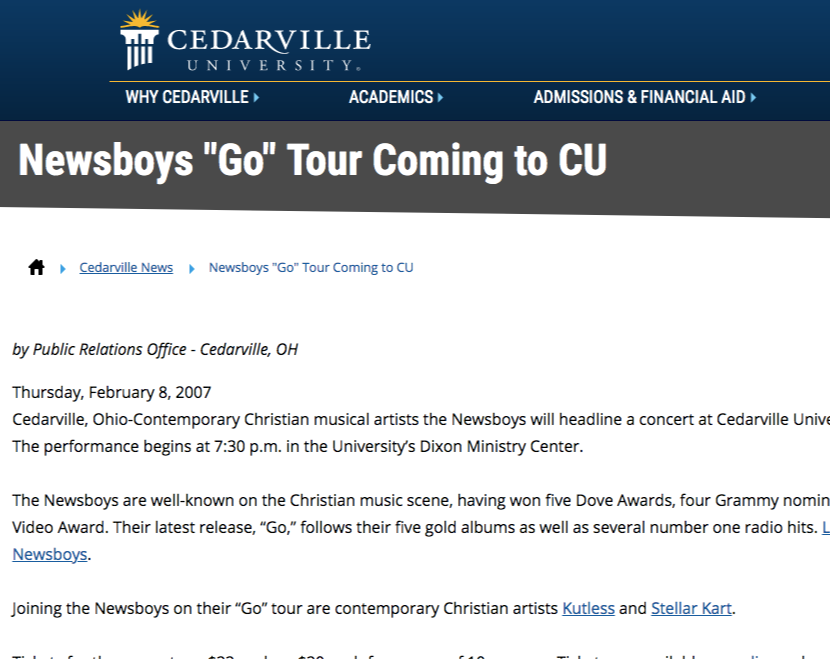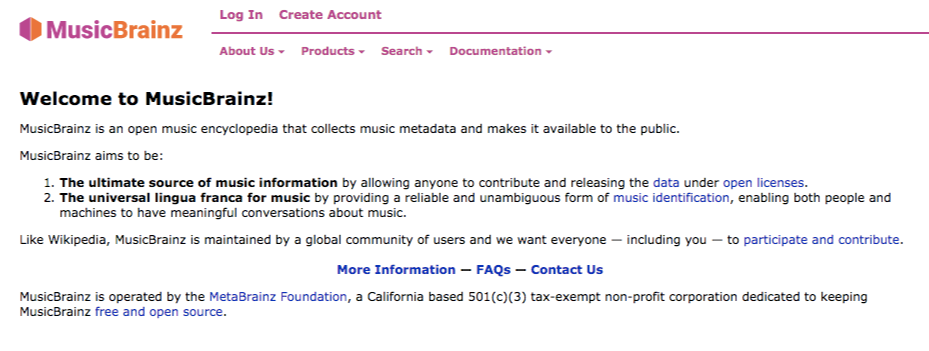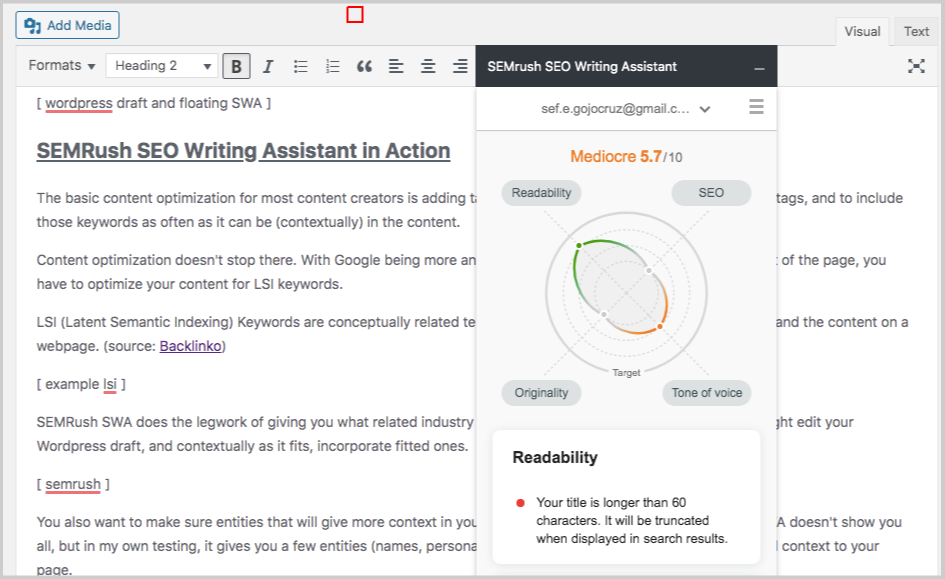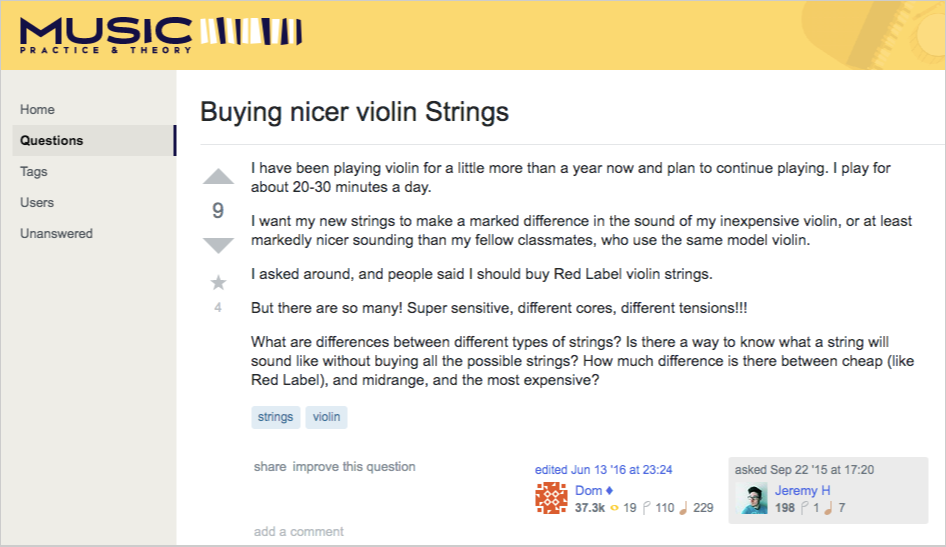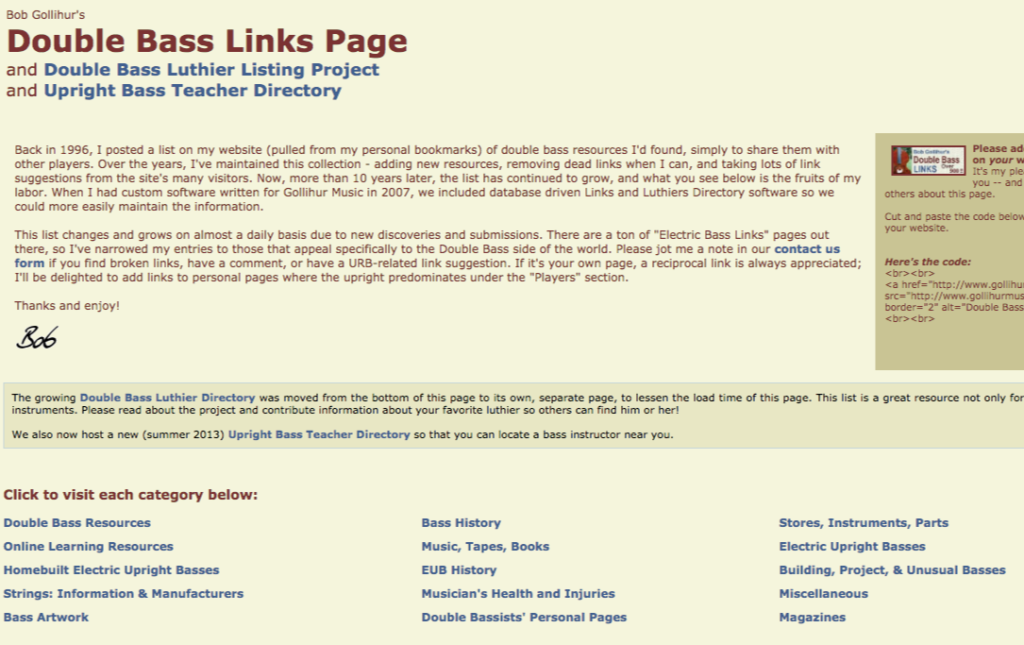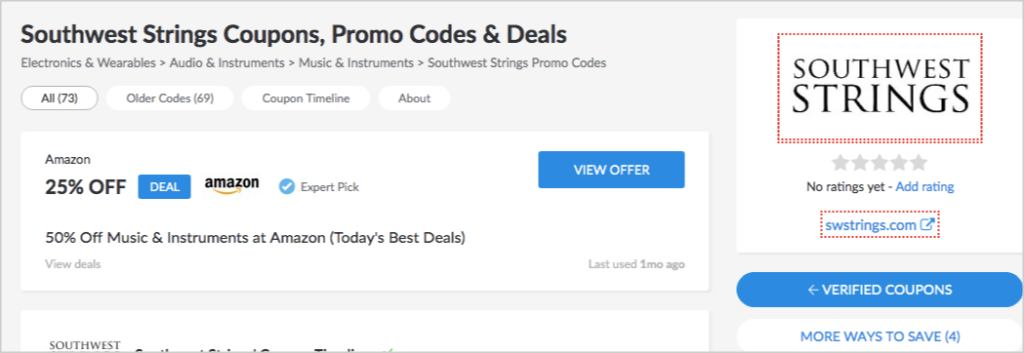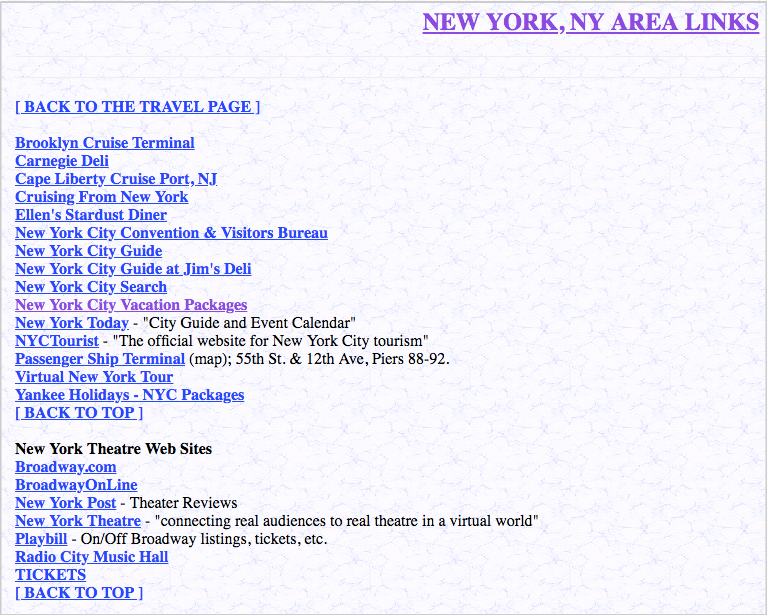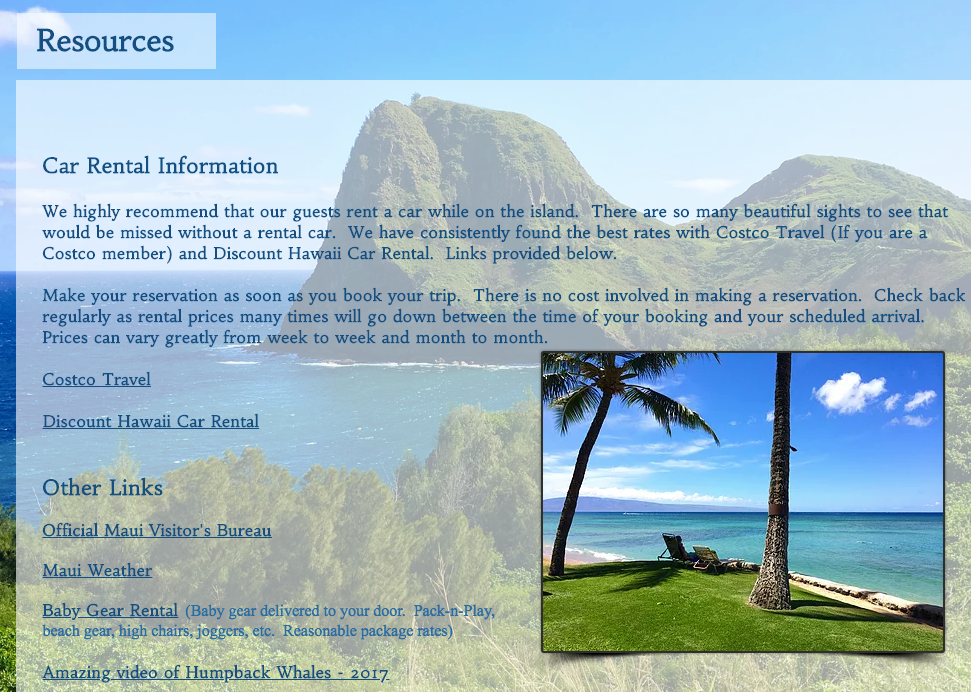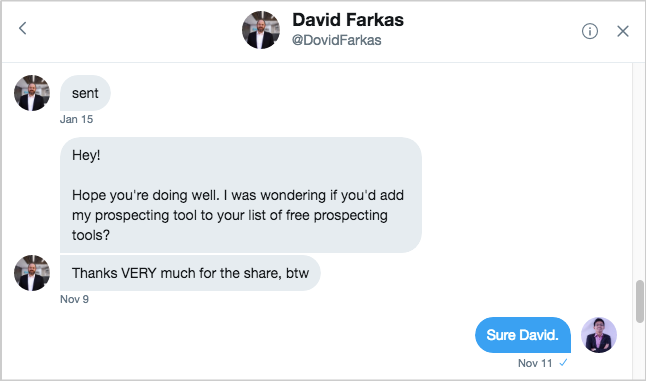Sponsorship Marketing - Definitive Guide for Small Business Owners
What is sponsorship marketing?
Sponsorship marketing is a form of marketing in which a company sponsors an event or activity in order to promote its brand or product.
Sponsorship is more of a form of marketing than advertising, as it seeks to persuade customers to make purchases by sharing certain information about a product or company.
Sponsorship spending grew by a remarkable $65.8 billion worldwide in 2018. Additionally, around 40% of organizations in the US spend around 20% of their total event budget on sponsorships.
These numbers alone should speak volumes about how sponsorship is an important aspect of every organization seeking to promote their business or brand.
Types of sponsorship marketing
There are several types of sponsorship marketing, each with its own advantages and disadvantages. The following are some of the most common types of sponsorship marketing:
Cash sponsorship
Cash sponsorships involve giving money to an organization in exchange for promoting your brand or product. The advantage of this type of sponsorship is that it’s a straightforward way to gain exposure for your brand. However, the disadvantage is that you have less control over how your brand is promoted and what values are associated with it.
In-kind sponsorship
In-kind sponsorship involves giving products or services to an organization in exchange for promoting your brand or product. The advantage of this type of sponsorship is that you have more control over how your brand is promoted and what values are associated with it. However, the disadvantage is that it can be more difficult to negotiate than cash sponsorship.
Event sponsorship
Event sponsorship involves sponsoring a specific event, such as a concert, sports game, or festival. The advantage of this type of sponsorship is that it allows you to gain exposure for your brand through a high-profile event. However, the disadvantage is that you have less control over how your brand is promoted and what values are associated with it.
Cause sponsorship
Cause sponsorship involves sponsoring a specific cause, such as environmentalism or healthcare. The advantage of this type of sponsorship is that it allows you to gain exposure for your brand while also promoting positive values. However, the disadvantage is that you have less control over how your brand is promoted and what values are associated with it.
Talent sponsorship
Talent sponsorship involves sponsoring a specific talent, such as an athlete, musician, or artist. The advantage of this type of sponsorship is that it allows you to gain exposure for your brand through a high-profile talent. However, the disadvantage is that you have less control over how your brand is promoted and what values are associated with it.
Choosing the right type of sponsorship marketing
There is no wrong or right type of sponsorship marketing, as each type has its own advantages and disadvantages. The key is to choose the type of sponsorship marketing that best suits your brand’s needs and objectives.
For instance, if you want to gain exposure for your brand through a high-profile event, event sponsorship may be the best option. However, if you want to promote positive values along with your brand, cause sponsorship may be the better option.

It’s also important to consider the organization you want to sponsor. Make sure that the organization is a good fit for your brand and that its values align with your own. You don’t want to sponsor an organization that could damage your brand’s reputation.
Why do companies do sponsorships?
There are several reasons why sponsorship marketing has become so popular in recent years. Here are just 5 of the mains ones:
- It’s an effective marketing tool - Sponsorship marketing is an effective way to reach new audiences and promote your brand or product. For instance, sponsoring celebrities and athletes could boost your brand's reach as their followers could bring new followers to your brand.
- It builds brand awareness - Sponsorship marketing can help you build brand awareness and create goodwill among potential customers. Take the example of a company sponsoring a charity event. Customers will see that your company is generous and cares about giving back to the community, which could make them more likely to purchase your products or services.
- It enhances brand image - Sponsorship marketing can help improve your brand image by associating your brand with positive values. It could bring new light to your brand's reputation and make it more appealing to potential customers.
- It’s cost-effective - Sponsorship marketing can be more cost-effective than other marketing strategies, such as advertising. This is because you only pay for the sponsorship, not for the ad space or time. Additionally, sponsorships often come with perks, such as free tickets to the event or product discounts, which can save you money.
- It’s a long-term strategy - Sponsorship marketing is a long-term marketing strategy that can provide continuous exposure for your brand or product. For instance, if you sponsor a sports team, your brand will be associated with the team for as long as the team remains active in the scene.
How can small businesses use sponsorship marketing?
There are many ways that small businesses can use sponsorship marketing to promote their brand or product. Here are just 5 of the most popular:
- Sponsoring local events - Many small businesses sponsor local events, such as festivals, parades, or fairs. This is a great way to gain exposure for your brand in the community and build goodwill among potential customers.
- Sponsoring local sports teams - Sports teams are always looking for sponsors, so this is a great option for small businesses. This type of sponsorship will give you continuous exposure for your brand as the team competes in its events.
- Sponsoring charities - Charity sponsorships are a great way to promote positive values along with your brand. This type of sponsorship will show potential customers that your company cares about giving back to the community.
- Exhibiting at trade shows - Trade shows are a great way to reach new audiences and promote your brand or product. Many small businesses exhibit at trade shows to gain exposure for their business.
- Advertising in local publications - Local publications, such as newspapers, magazines, and websites, are always looking for advertisers. This is a great way to reach potential customers in your community and promote your brand or product.
For more sponsorship marketing tips, you can check out this guide on local link building strategies.
Sponsorship Marketing Plan: How To Do It Right
Now that you know the benefits of sponsorship marketing and how small businesses can use it, it’s time to create a sponsorship marketing plan. Here’s how to do it right:
Step 1: Define your goals.
Before you start reaching out to potential sponsors, you need to define your goals. What do you hope to achieve with your sponsorship marketing campaign? Do you want to increase brand awareness, build goodwill, or improve your brand image? Once you know your goals, you can start reaching out to potential sponsors.
Step 2: Research potential sponsors.
Once you know your goals, you need to research potential sponsors that could help you achieve them. There are many factors to consider when choosing a sponsor, such as the size of the company, the products or services they offer, their values, and their target audience. You should also consider the benefits that each sponsor can provide, such as exposure to their audience, discounts on products or services, or free tickets to events.
Step 3: Create a sponsorship proposal.
Once you’ve chosen a potential sponsor, you need to create a sponsorship proposal. This document should outline the benefits of sponsoring your event or activity and how it will help them achieve their goals. Be sure to include information about your audience, your marketing plans, and your sponsorship package options.
Step 4: Negotiate the terms of the sponsorship.
After you’ve created a sponsorship proposal, you need to negotiate the terms of the sponsorship with the potential sponsor. This includes deciding on the level of support they will provide, what benefits they will receive, and how long the sponsorship will last.
Step 5: Activate your sponsorship.
Once you’ve negotiated the terms of the sponsorship, it’s time to activate it. This includes developing marketing materials, such as logos and banners, and promoting the sponsorship to your audience. You should also create a post-event report that outlines the results of the sponsorship and how it helped you achieve your goals.
Sponsorship Marketing Examples
Now that you know the benefits of sponsorship marketing and how to create a sponsorship marketing plan, let’s take a look at some sponsorship marketing examples.
Coca-Cola
Coca-Cola is one of the most well-known brands in the world and they use sponsorship marketing to reach new audiences. For example, they sponsor the Olympics and FIFA World Cup, which give them exposure to millions of people around the world.
McDonald’s
McDonald’s is another well-known brand that uses sponsorship marketing to reach new audiences. They sponsor events like the Olympics and the FIFA World Cup, as well as local events like soccer tournaments and marathons.
Nike
Nike is a leading athletic apparel brand that uses sponsorship marketing to reach new audiences. They sponsor athletes, teams, and events, such as the Olympics and FIFA World Cup.
Samsung
Samsung is a leading electronics brand that uses sponsorship marketing to reach new audiences. They sponsor events like the Olympic Games and the FIFA World Cup, as well as product placement in movies and TV shows.
Subway
Subway is a leading fast-food chain that uses sponsorship marketing to reach new audiences. They sponsor events like marathons and triathlons, as well as local sports teams and schools.
Sponsorship Marketing Proposal Template [FREE]
Cover Letter:
The first page of your proposal should be a cover letter that introduces your organization and briefly summarizes your proposal.
Example Cover Letter:
Dear ________________,
I am writing to introduce you to ______________________________ (name of organization/event). We are a ___________________________ (type of organization) that is dedicated to ___________________________ (purpose of organization). We are hosting a ___________________________ (type of event) on ___________________________ (date of event) and we are looking for sponsors to help us make it a success.
As a sponsor, you would receive ___________________________ (exposure/benefits). This is a great opportunity to ___________________________ (connect with our audience/promote your brand/support our cause). We are confident that this event will be a success and we would be honored to have your support.
Thank you for your time and consideration. If you have any questions, please do not hesitate to contact me at ___________________________ (contact information).
Executive Summary:
The executive summary should be a one-page overview of your sponsorship marketing proposal. It should include your goals, objectives, target audience, and proposed sponsorship package.
One-Page Sponsorship Proposal Template
- Introduction
- Event/Organization Overview
- Sponsorship Opportunities
- Benefits of Sponsorship
- Marketing Plan
Proposed Sponsorship Package:
This section should outline the benefits that your sponsor will receive by supporting your organization. Be sure to include information on your target audience, media coverage, and any other benefits that you can offer.
You can create a table or list to outline your sponsorship package. Be sure to include pricing information and a call-to-action (CTA).
Sample Sponsorship Package:
Gold Level Sponsorship - $5,000
- Logo placement on event website
- Logo placement on all print and digital marketing materials
- Prominent logo placement on event signage
- Logo placement on event t-shirts
- Complimentary booth space at event
- 10 complimentary tickets to event
Silver Level Sponsorship - $2,500
- Logo placement on event website
- Logo placement on all print and digital marketing materials
- Logo placement on event signage
- Logo placement on event t-shirts
- 5 complimentary tickets to event
Bronze Level Sponsorship - $1,000
- Logo placement on event website
- Logo placement on all print and digital marketing materials
- Logo placement on event t-shirts
- 2 complimentary tickets to event
Frequently Asked Questions:
How does sponsorship increase sales?
Sponsorship can increase sales in a number of ways. First, it can create awareness for your brand and increase brand recognition. Second, it can help you reach new audiences that may be interested in your products or services. Third, it can build goodwill and positive associations with your brand. Finally, it can provide you with an opportunity to upsell and cross-sell your products or services.
What is the difference between sponsorship and direct marketing?
The main difference between sponsorship and direct marketing is that sponsorship is a long-term investment, while direct marketing is a short-term strategy. Sponsorship also allows you to build brand awareness and create positive associations with your brand, while direct marketing is focused on generating immediate sales.
What makes a good sponsorship?
A good sponsorship should align with your brand and marketing goals. It should also reach your target audience and provide you with a way to connect with them on a deeper level. Finally, it should offer you value for your investment, whether that be in the form of brand awareness, sales, or goodwill.
What is the main goal of a sponsorship presentation?
The main goal of a sponsorship presentation is to convince potential sponsors to invest in your event or organization. To do this, you will need to provide an overview of your event or organization, as well as the benefits that sponsors will receive by supporting you. You will also need to have a solid marketing plan in place that outlines how you will reach your target audience and generate awareness for your event or organization.
What makes a sponsorship successful?
There are a number of factors that can contribute to a successful sponsorship. First, it is important to have clear and achievable goals. Second, your sponsorship package should be attractive to potential sponsors and provide them with value for their investment. Finally, you need to have a solid marketing plan in place that will reach your target audience and generate awareness for your event or organization.
What are some common goals of sponsorship?
Some common goals of sponsorship include increasing brand awareness, reaching new audiences, building goodwill, and generating sales.
Why your marketing plan should include sponsorship?
Your marketing plan should include sponsorship because it is a proven way to reach your target audience, build brand awareness, and generate sales. Sponsorship also allows you to build goodwill and create positive associations with your brand.
15 Places To Advertise Your Business Online (For Small Business Owners)
The marketing world is dynamic and always changing, which is why small businesses need to be proactive and adapt their strategies as new platforms and trends emerge.
And while traditional marketing methods like print, radio, and TV advertising are still viable options, nowadays, most consumers do their research online before making a purchase, which is why it’s so important for small businesses to have a strong online presence.
That's where online advertising comes in. By placing ads on popular websites and search engines, small businesses can reach a larger audience and generate more leads and sales.
In fact, by 2026, advertising online will be a $335 billion industry. That being said, every small business should be taking advantage of online advertising.
To determine which ones are the best for your business, you need to consider your budget, your target audience, your location, and your advertising goals.
In this article, you will learn:
15 Advertising Opportunities For Small Business Owners
Here are 15 different ideas for places to advertise your business online. These platforms are all effective and affordable, so you can choose the one that best suits your needs.
1. Google
As one of the largest search engines in the world, Google receives billions of searches every day.
That means there’s a good chance that people looking for products or services like yours are using Google to find what they need.
Google ads have taken a giant step forward since it became the leading local business directory. According to Corporate Eye, Google makes up almost 97% of the company's income through Google advertising.
With Google Ads, you can create text, image, and video ads that show up on Google’s search engine results pages (SERPs) when people search for keywords related to your business.
You only pay for your ad when someone clicks on it, so you can control your budget and only spend what you’re comfortable with.
Types of Google Ads:
Text Ads: These are the traditional Google ads that you see on the SERPs. They consist of a headline, two descriptions, and a URL.
Image Ads: These ads can appear on the SERPs and on websites that participate in Google’s Display Network. They can be static or animated and usually include images and/or videos.
Video Ads: These are video ads that appear on YouTube and websites that participate in the Google Display Network.
2. Facebook
Facebook is the largest social media platform in the world, with 2.9 billion monthly active users.
It’s a great place to advertise your business because you can target your ads to people based on their interests, demographics, and even behaviors.
For example, if you want to reach people who live in a certain area and are interested in your type of product or service, you can create a Facebook ad campaign specifically for them.
You can also use Facebook ads to boost your posts, so more people see them in their newsfeeds. When you boost a post, it appears as an ad on people’s timelines.
Types of Facebook Ads:
Boosted Posts: These are posts from your Facebook page that you pay to appear as an ad in people’s newsfeeds.
Promoted Page Likes: These ads appear in people’s newsfeeds and are designed to get more people to like your page.
Clicks to Website: These ads send people to your website from Facebook. They can appear in people’s newsfeeds, on the right side of the screen, or as an ad in Instant Articles.
Website Conversions: These are similar to Clicks to Website ads but are designed to get people to take a specific action on your website, such as filling out a form or buying a product.
3. Instagram
With over 1 billion monthly active users, Instagram is a great place to reach potential customers, especially if you’re targeting millennials or Gen Z.
Instagram ads work similarly to Facebook ads. You can target people based on their interests, demographics, and behaviors.
You can also use Instagram ads to promote your posts, so they appear as ads in people’s feeds.
Types of Instagram Ads:
Photo ads: These are static images that you can use to show off your products or services.
Video ads: Through reels or short videos, you can show potential customers a behind-the-scenes look at your business or showcase your products in action.
Carousel ads: These are ads that contain multiple images or videos that people can scroll through. They’re a great way to showcase different products or services that you offer.
Stories ads: These are short videos or images that appear in between people’s Stories. They’re a great way to grab attention and get your message across quickly.
4. Twitter
With over 206 million daily active users, Twitter is another great social media platform for advertising your business.
Twitter ads work similarly to other social media platforms like Facebook and Instagram. You can target people based on their interests, demographics, and behaviors.
You can also use Twitter ads to promote your tweets, so they appear as ads in people’s timelines.
Types of Twitter Ads:
Promoted tweets: These are tweets that you pay to appear as an ad in people’s timelines. For small businesses, this is a great way to get your tweets seen by more people.
Promoted accounts: You can pay to have your Twitter account appear as an ad in the “Who to follow” section on people’s timelines.
Promoted trends: These are trending topics that you pay to appear as an ad on people’s timelines.
5. LinkedIn
LinkedIn is a social media platform specifically for professionals. With over 810 million users, it’s a great place to reach potential customers or clients who are decision-makers in their companies.
LinkedIn ads work similarly to other social media platforms like Facebook and Instagram. You can target people based on their interests, demographics, and behaviors.
You can also use LinkedIn ads to promote your posts, so they appear as ads in people’s feeds.
Types of LinkedIn Ads
There are different types of LinkedIn ads that you can use:
Sponsored content: This is content that you pay to appear as an ad in people’s feeds. It can be a blog post, article, or video.
Text ads: These are short, text-based ads that appear in the right-hand column of people’s LinkedIn feeds.
Display ads: These are banner ads that appear on people’s LinkedIn feeds.
6. Tiktok
While there are many businesses who are hesitant about advertising their business on Tiktok, there are many opportunities for businesses to reach potential customers on the app.
In 2021, Tiktok was the most downloaded app in the world. It has been downloaded 2.6 billion times worldwide, and with over 1 billion monthly active users, it’s a great place to reach potential customers, especially if you’re targeting Gen Z.
TikTok advertisements could be a good investment for you if your business appeals to a younger audience. This isn't the platform for businesses that target older audiences, with 66% of TikTok's users being under 30 (41% are 16–24 years old).
Types of Tiktok Ads:
There are different types of TikTok ads that you can use:
In-feed ads: These are short videos or images that appear in between people’s TikTok videos.
Brand takeovers: These are ads that appear when someone opens the app. They’re a great way to grab attention and get your message across quickly.
Hashtag challenges: These are ads that appear when someone searches for a specific hashtag. They’re a great way to get people engaged with your brand.
7. Reddit
Quite different from the previously mentioned social media platforms, Reddit is a social media platform where people can post content, vote on content, and comment on content on different subreddits. Subreddits are like mini forums on specific topics.
Content that gets the most upvotes rises to the top of the feed, while content with the most downvotes sinks to the bottom. People can also comment on posts, and these comments can be upvoted or downvoted as well.
With over 50 million daily active users, Reddit is a great place to reach potential customers. However, because of its unique format, it can be a challenge to advertise on Reddit.
The best way to advertise on Reddit is through native advertising, which is advertising that is in the same format as the other content on the platform.
New Reddit marketers should be cautious about how they promote their business on Reddit, as the community is quick to call out anything that looks like spam. Breaking simple rules like title structure, linked video length, or image use might result in your post being immediately removed and even your account being banned.
The key to getting success on Reddit is to be truly authentic. Don’t try to hard-sell your product, but rather provide value and be helpful.
8. Youtube
Youtube is a video-sharing site where users can upload, view, and share videos. It’s the second largest search engine after Google, and with over 2 billion monthly active users, It's also an excellent platform to attract new consumers.
As video is one of the most consumed forms of content, it’s no surprise that businesses are using Youtube to reach potential customers. In fact, 6 out of 10 people would rather watch online videos than television.
Successful business owners are using Youtube to create valuable content that educates, entertains, and inspires their target audience. However, with over 500 hours of video being uploaded to Youtube every minute, it can be a challenge to stand out from the crowd.
To be successful on Youtube, you need to create high-quality content that is relevant to your target audience. You also need to be strategic about your marketing and use Youtube ads and SEO to get your videos in front of as many people as possible.
Types of Youtube Ads
Youtube ads come in a few different forms:
Pre-roll ads: These are short ads that play before a video starts. They can be skipped after 5 seconds.
Mid-roll ads: These are ads that play in the middle of a video. They can be skipped after 5 seconds.
Bumper ads: These are short, unskippable ads that play before, during, or after a video.
Overlay ads: These are banner ads that appear on the bottom 20% of a video.
Card ads: These are small ads that appear in the corner of a video.
9. Quora
Quora is a Q&A platform where people can ask questions and get answers from experts in the community. It’s a great place to find out about new products and services, as well as to learn about different topics.
While Quora isn’t traditionally thought of as a social media platform, it can be a great way to connect with potential customers. This is because people come to Quora when they’re looking for information, which means they’re already in the research phase of the buying cycle.
To be successful on Quora, you need to focus on providing value. This means answering questions honestly and helpful, without trying to hard-sell your product.
You should also take advantage of Quora’s targeting features to make sure your content is being seen by people who are most likely to be interested in what you have to offer.
While some may only see it as a Q and A platform, Quora is actually a great way to get in front of your competitors using Quora ads.
Why Use Quora Ads?
There are a few reasons why you would use Quora ads as an additional platform for online advertising:
- Quora is a search engine: This means that when people are looking for information on Quora, they already have the intent to buy your product. This makes Quora a great place to target potential customers who are already interested in your product.
- You can target specific interests: Quora allows you to target your ads to specific interests, which means you can reach people who are more likely to be interested in your product or service.
- You can target specific questions: Quora also allows you to target specific questions, which means you can get your ad in front of people who are already looking for information about your product or service.
Quora Ad Formats:
Quora's advertising formats are:
Promoted answers: These are answers that appear at the top of a question page.
Promoted questions: These are questions that appear in the sidebar of a topic page.
Display ads: These are banner ads that appear on the Quora website.
10. Bing
Bing is a search engine that is owned by Microsoft. It’s the second-largest search engine in the world, with a market share of 20%.
While Bing doesn’t get as much traffic as Google, it’s still a valuable platform for businesses. This is because people who use Bing are generally more affluent and have higher incomes.
This makes Bing a great place to target potential customers who are more likely to be able to afford your product or service.
To be successful on Bing, you need to focus on creating high-quality ads that are relevant to your target audience. You should also use keyword research to make sure your ads are being seen by people who are searching for terms related to your business.
Bing Ads allows you to advertise on both Bing's search network and its partner networks, Yahooo and AOL.
Ad Formats of Bing:
Bing's advertising formats are:
Search ads: These are text-based ads that appear at the top of the Bing search results page.
Display ads: These are banner ads that appear on websites in the Bing network.
11. Pinterest
Pinterest is a powerful traffic-generating tool. It's a marketplace where consumers may discover amazing products, ideas, and solutions to their problems.
As a business, you can take advantage of this by creating pins that showcase your products or services. You can also use Pinterest to drive traffic to your website or blog.
As of this writing, there are 478 million people who use this platform every month to find ideas for their next purchase. That being said, this platform should be added to your online marketing strategy in order to reach your preferred audience.
To be successful on Pinterest, you need to constantly focus on creating high-quality pins that your audience will want to save. You should also use keywords in your descriptions to make sure your pins are being seen by people who are searching for terms related to your business.
Ad Formats of Pinterest:
Pinterest's advertising formats are:
Standard pins: These are pins that appear in the main Pinterest feed.
Promoted pins: These are pins that appear at the top of the Pinterest search results page and in the home feed.
Carousel ads: These are pins that appear in the form of a slideshow.
Video Pin Ads: These are video pins that appear in the main Pinterest feed.
Shopping Pins: These are pins that allow users to purchase products directly from retailers.
App-Install Pins: These pins allow you to link to any Apple Store or Google Play app URL.
12. Waze
Waze is a GPS navigation app that is owned by Google. It’s used by millions of people every day to get around town.
While Waze doesn’t have as many users as Google Maps, it’s still a valuable platform for businesses. This is because people who use Waze are generally more engaged and are more likely to take notice of your ad.
If you're a small business owner who's constantly looking for ideas on how to drive more foot traffic to your store, then Waze might be a good fit for you.
To be successful on Waze, you need to make sure your ad is relevant to the user’s current location.
Waze's advertising formats are:
Branded pins - This serves the same purpose as shop signs: They tell and remind drivers about your business.
Promoted search - Your business will be displayed to large audiences when Waze users search for your name and see all of your locations listed first.
Nearby arrow - Whenever nearby users open the app, this arrow will immediately appear on their screen.
13. Press Releases
A press release is a written statement that is distributed to the media to generate publicity for a product, service, or event.
Press releases can be an effective way to reach your target audience through the media. So whether your business is opening a new branch, launching a new product line, rebranding, or moving to a new location, it's worth it to write and distribute a press release.
When writing a press release, make sure to include the following:
- A catchy headline
- Subheadings
- Bulleted lists
- Quotes from experts or customers
- A call to action
To be successful with press releases, you need to make sure your press release is newsworthy and well-written. You also need to distribute your press release to the right media outlets.
Here are some popular press release distribution platforms:
- PR Newswire
- PRWeb
- Business Wire
- Marketwired
Press releases are not only effective for getting publicity but they can also be used to improve your website's SEO. This is because press releases often contain backlinks to your website.
14. Snapchat
Snapchat is a popular social media app that allows users to share photos and videos with their friends.
While Snapchat doesn’t have as many users as Facebook or Instagram, it’s still a valuable platform for businesses. This is because Snapchat users are generally younger and more engaged than users of other social media platforms.
If you're targeting millennials or Gen Zers, then Snapchat ads should definitely be a part of your marketing strategy.
To be successful on Snapchat, you need to create engaging and creative content. This could include short videos, behind-the-scenes footage, or even just stylish photos.
Snapchat's advertising formats are:
Snap ads: These are short video ads that appear between Stories.
Collection ads: These are full-screen ads that appear in the Discover section.
Filter ads: These are creative filters that can be used by Snapchat users.
Lenses: These are animated effects that can be used by Snapchat users.
15. Whatsapp
Last but not the least, Whatsapp is one of the most popular messaging apps with over 1.5 billion monthly active users.
While Whatsapp doesn't have any in-built advertising features, businesses can still use it to reach their target audiences by creating posts through Facebook ads manager.
Tips on WhatsApp Advertising:
- Keep your messages short and to the point
- Use engaging visuals
- Use a call to action
- Create a sense of urgency
Common FAQs About Places to Advertise Online
How do I advertise my business locally?
There are a number of ways to advertise your business locally. Some common methods include:
- Creating a website or blog and optimizing it for local SEO
- Creating listings on local directories and review sites
- Using social media to promote your business
Where else can I advertise my business for free?
On top of the ones we mentioned above, there are a number of other ways to advertise your business for free. These include:
- Google My Business
- Bing Places
- Apple Maps
- Yelp
- TripAdvisor
How can I promote my business?
There are a number of ways to promote your business online. Some common methods include:
- Social Media Marketing
- Search Engine Optimization: link building, local SEO, mobile SEO
- Content Marketing
- Email Marketing
- Pay-Per-Click Advertising
How do I get my small business noticed?
There are a number of ways to get your small business noticed online.
- Creating a strong social media presence
- Strategizing your local link building strategies for your business
- Optimizing your website for search engines
- Creating informative and shareable content
- Advertising on relevant platforms
- Getting involved in your local community
Where do I find ads?
There are a number of places you can find ads online. Some popular platforms include:
- Google AdWords
- Bing Ads
- Facebook Ads
- Twitter Ads
- Instagram Ads
Are online ads effective?
Online ads can be effective if they are well-targeted and relevant to your audience. According to statistics, 26% of social media users tend to purchase products that they see advertised.
Make sure to test different ad formats and placements to see what works best for your business.
What is an example of online advertising?
Some common examples of online advertising include:
- Search Engine Advertising
- Display Advertising
- Social Media Advertising
- Video Advertising
- Native Advertising
Find the Best Place To Advertise Your Business
Now that you have a better understanding of the different types of online advertising, you can start to identify which platforms will work best for your business.
To get started, we recommend conducting a market analysis to understand your target audience and what type of content they are most likely to engage with. Make sure to consider your budget, business goals, and target audience when choosing the best place to advertise your business.
Once you have this information, you can always start experimenting with different advertising platforms to see what works best for you.
With a little bit of trial and error, you should be able to find the perfect mix of platforms to help you achieve your desired results.
10 Gmail Extensions for Email Outreach and Link Building
Gmail has been widely used as a common outreach platform for marketers reaching out to webmasters, publishers, and other link partners. In hopes for any action from the end-user (i.e. a link or social share), marketers send initial pitches and engage respondents until the desired action is made.
Today, we'll cover 10 Gmail extensions that will allow you to speed up some email outreach processes for link acquisition and other content promotion initiatives.
1. Mailtrack. io
Cost: From Free to $4.99 per month subscription ($2.49 per year - a huge discount if you subscribe annually)
Useful for: Email tracking
![]()
Mailtrack.io allows you to check if your emails were sent and opened by recipients. You can even see how many times and in what particular hours your emails were opened by clicking the Mailtrack. io section of the email.
![]()
Knowing how your emails were treated will help you then, take appropriate actions.
For example, if your email hasn't been opened for days and weeks, it is unwise to send a follow-up email when the original one was not ready yet. You may, in this particular instance, try to look for another contact person and his or her email address from the same page or website. Reach out and ask if he or she can direct your message to your desired contact.
Mailtrack.io also notifies you in real-time when you are logged into your Gmail account.
If you are subscribing as a Pro user, you will have access to its additional features such as click tracking (knowing when your recipients click on the links in your emails), and reminders (receiving email notifications if your emails have not been read after 24 hours). Both of these features help you better monitor your outreach accounts.
2. Grammarly
Cost: From Free to Premium Accounts ($29.95/month or $11.66/month for an annual subscription)
Useful for: Email grammar check

Every email needs to be checked for any grammatical errors, tone, style, messaging, and any other factors that make them successfully opened, read, and responded to.
By integrating Grammarly into your Gmail account, you will quickly notice if the content of your email needs grammar improvement. You can correct any errors as quickly as possible and send a beautifully touched pitch to your potential link partner.
You will avoid the painful mistakes of not receiving a positive response just because one word or phrase confuses the entire message of your email.
Of course, there are words or phrases in certain lingos that should be added to make your email relevant to its end-user. In that case, simply ignore red underlines of Grammarly.
3. Unroll. me
Cost: Free
Useful for: Email inbox cleaning
There are websites wherein the only way to contact them is through their contact forms. If you're in a hurry to fill out those forms, you may have overlooked the default check box option for email subscription updates (normally located at the bottom of the contact form).
Several unnecessary (promotional) email updates like that, from different sites will now clutter your Gmail inbox (in which the inbox is supposedly created for linker outreach purposes only).
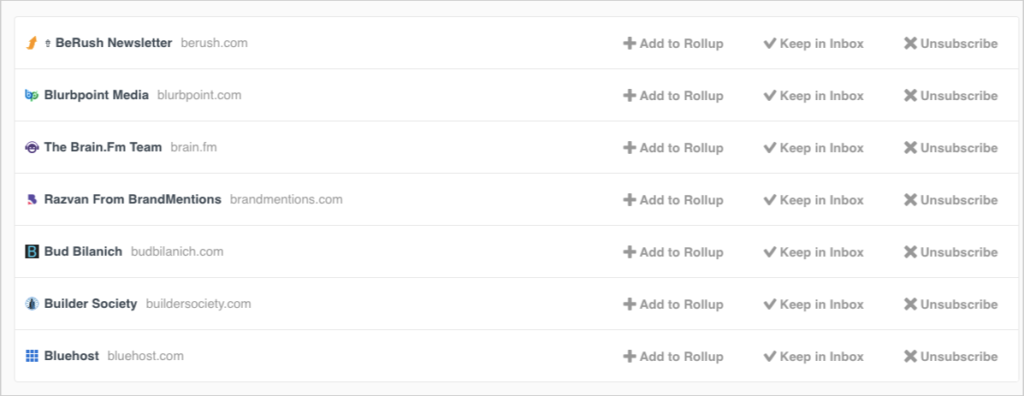
Unroll.me helps you easily clean your inbox by unsubscribing from emails you don't want to see - these primarily include email updates from websites you reach out via their contact forms. Unless you are really interested in their updates, it is best to delete them to focus you more on outreach emails you have to reply to.
4. Gorgias Templates
Cost: Free
Useful for: Initial pitch, Email conversations
If you ever wonder how you can scale your outreach with ease, then you probably need Gorgias Templates.
By integrating this extension into your Gmail account, it allows you to quickly add an email template (or semi-outreach template) straight to your email. It is quite similar to Gmail's Canned Response but offers lesser friction by choosing and using any of these two methods.
First, you can click on the G button and the appropriate template for your email. The email template will be generated automatically.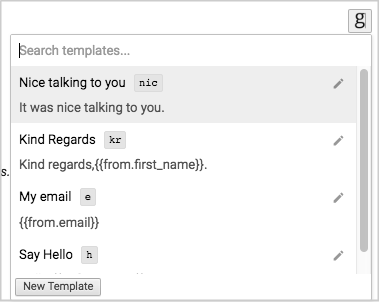
Second, you can type in the shortcut text and click TAB on your keyboard to insert templates quickly.
You don't have to copy and paste your email templates when you use Gorgias Templates. With a few clicks and shortcut tabs, you'll be able to send hundreds of emails within hours. So if you are ever looking for high efficiency in outreach, then this Gmail extension should be your first choice.
5. Discoverly
Cost: Free
Useful for: Customizing email pitches
Knowing about your recipient's interests, needs, and/or wants is vital in customizing your email pitch. The simplest way to do it is to use Google to research and collect these details, but doing so for hundreds of your contacts will definitely consume a huge chunk of your time.
Discoverly, a Gmail extension, can be your alternative tool to quickly view your potential link partner's details and go quickly to their social profiles - if you want to.
You don't have to switch your tabs to and from your Gmail platform, all you have to do is to click on your contact's email address and a Discoverly section will pop up in a second.
6. Right Inbox
Cost: From Free to monthly subscription of $7.95/month ($5.95/month for an annual subscription)
Useful for: Customizing email pitches
Gmail adds another feature in their platform that tells you if an email hasn't received a response from your end (or needs a follow-up).
That's an interesting Gmail feature now if you ask me. But still, I am yet to come across a feature on their tool that allows you to schedule emails on a specific day and time.

RightInbox, a freemium tool offers you the ability to schedule your emails at your preferred day and time. Not only that, if you want to get reminders from recurring emails (not necessarily the ones that need follow-up), but emails you should respond to within the day, that in itself helps you organize your email communications.
7. Inbox When Ready
Cost: From Free (14 days trial) to $4/month (Pro) and $30/month (Team)
Useful for: Focus on email conversations
Distractions may come your way when you're doing outreach. These distractions include promotional newsletters from websites you've subscribed to unintentionally, i.e. default check on boxes on websites' contact forms, alert notifications of reading emails from another Gmail extension or even, failed messages.
If you're not prepared for this, you may lose your focus instantly and could totally affect your deep work activities (discussion with your content development team, brainstorming on new linkable ideas, and so on).
Inbox When Ready solves that problem of losing your focus by hiding your inbox by default.

You can even define a schedule when will your inbox be locked out so you can batch processing of your emails at optimal times. Aside from scheduling inbox lockout, Inbox When Ready also shows you how much total time you want to spend on organizing your email communications.
In addition to features, you can hide category tab notifications that may distract you when replying to potential link targets. Instead of you opening or even reading promotional emails, you can disable them so you can focus on your Gmail's primary inbox.
8. Checker Plus for Gmail
Cost: Free
Useful for: Initial pitching, Email conversations
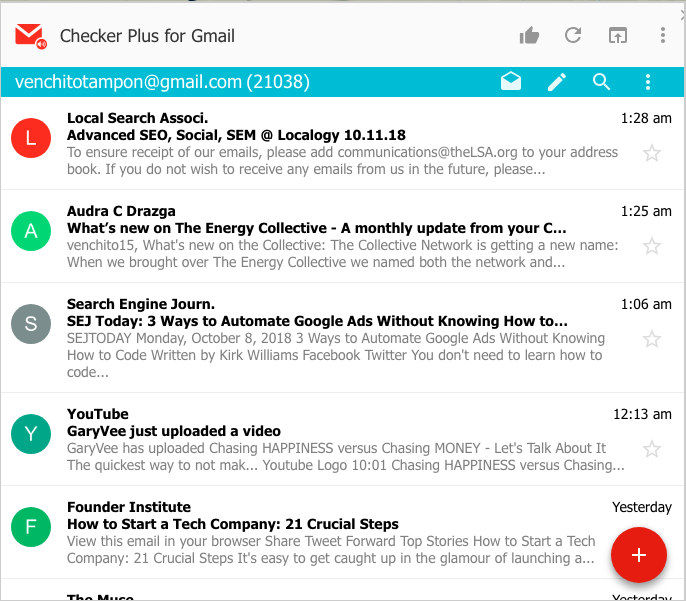
Ever had a difficult time switching to different Gmail accounts which serve different purposes or are used for different outreach personas?
The hassle of signing out in current Gmail account and signing in to another one could be solved by installing Checker Plus for Gmail.
This Gmail extension allows you to easily manage multiple accounts. You can even set which account you want to pop-up notifications on your browser, and even read or delete emails without opening Gmail.
Checker Plus for Gmail is a very effective tool in ensuring your Gmail outreach accounts are properly managed. It's definitely a must-try if you have several outreach personal accounts.
9. Streak
Cost: From Free to $49/month (Professional) and $99/month (Enterprise)
Useful for: Initial pitching, Email conversations
One differentiator of Streak from other similar Gmail inbox management extensions is its ability to organize communication flow. Meaning, you can create different categories of your outreach flow by labeling which emails aren't interested with your email pitch, emails that are likely to give you a link, or emails that need follow-up sooner.
Streak also makes it easy to share emails across the team without the need to forward or even your cc team members.
If you prefer customer relationship management or CRM-like structure Gmail extension, Streak fits your choice.
10. KeyRocket
Cost: Free
Useful for: Initial pitching, Email conversations

Shortcuts in any form or area make you more efficient than ever.
But the only reason why we don't maximize them to some extent is we don't really know them.
There's a Gmail extension tool that will keep you and me semi-memorized keyboard shortcuts specifically on Gmail — that is, KeyRocket.
KeyRocket's shortcuts come just at the right time when you need it. For example, if I need to go to my inbox, what I need to press on my keyboard is G then I.
KeyRocket tracks your movements and suggests appropriate shortcuts to help you get things done faster. It's like an assistant working beside you that provides quick and helpful tips and tricks.
There you go, these are 10 Gmail Extensions that I've found to be incredibly valuable in managing your Gmail outreach accounts. Try one, two, or five of these tools, and let me know in the comments section how they've helped you in your outreach efforts.
For Further Reading:
- Strategy for Follow-Up Emails to Link Prospects
- Six Small Differences You Can Make to Your Email Outreach
Need help with your outreach campaigns? Check out our link building services here.
101 Actionable Link Building Tips
If you are tired of reading other SEO content without any actionable link building tips, then this post is for you.
I’m fairly honest, these 101 actionable link building tips guide is not complete
The good news:
This post will always keep updated.
So if you want to increase your domain authority, get more exposure and increase your rankings, check out this new link building guide:
1. Become a Content Contributor for Authority Websites
The problem with SEO community:
We are debating on a not-so-controversial topic: quality vs quantity in link building.
In essence, both of them are important.
But could that be possible?
While aiming to build high-quality backlinks, you are also targeting a higher amount of it.
Yes.
This is possible with becoming a regular columnist on authority sites.
Look at how Buffer and Sujan Patel Voila Nobert co-founder, gained from this content marketing strategy.
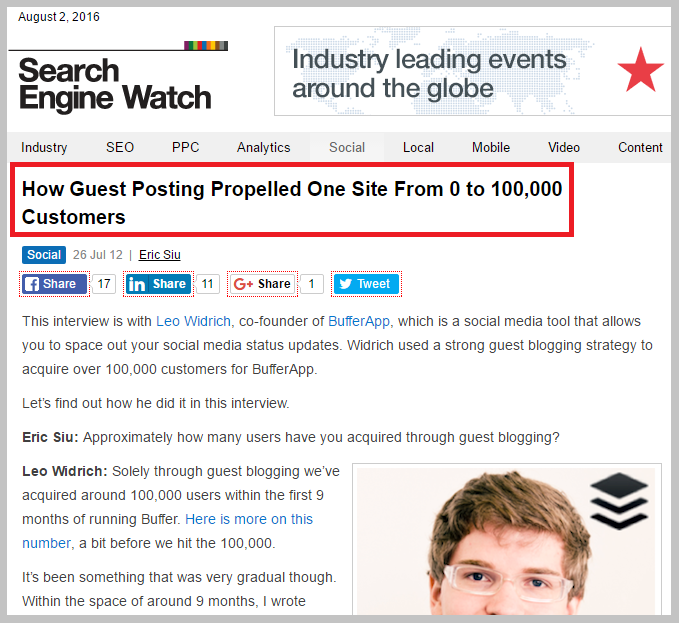
How can you start becoming a regular content contributor for top news-sites and blogs?
Watch this video below:
2. Get EDU Backlinks Using Scholarships
Backlinks from educational sites are high-authority type of links you won’t just get with simple outreach.
But let me tell you this:
There’s one way to acquire those powerful types of links.
Through scholarship link building.
Check out the following pages for higher education:


These are examples of edu backlinks you can get from creating a scholarship page targeted to a specific audience.
Start this technique with knowing who your market audience is.
For example, your website is in digital marketing industry, your audience would be marketing, entrepreneurship and advertising students.
Then go create your scholarship page and include the following information:
- Your applicants details (who?)
- Application process (how?)
- Where they can apply (how?) – through your website
- Deadline of application
- Review process of application
- Value of your scholarship
Once you’re done with that, find existing scholarship pages that list down relevant scholarship content - start with this Google search query, site:.edu inurl:scholarship “industry” to find them.
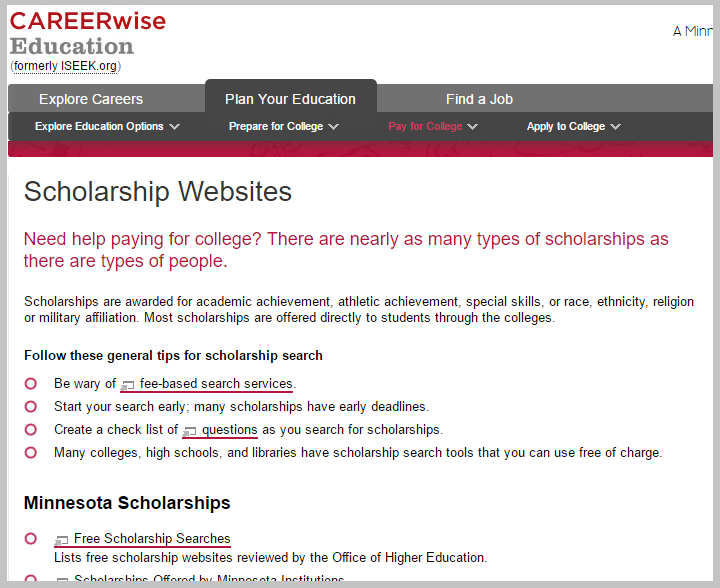
Populate your list by looking at other scholarship pages linking to a similar scholarship of yours. Semi-automate this by using Ahrefs.
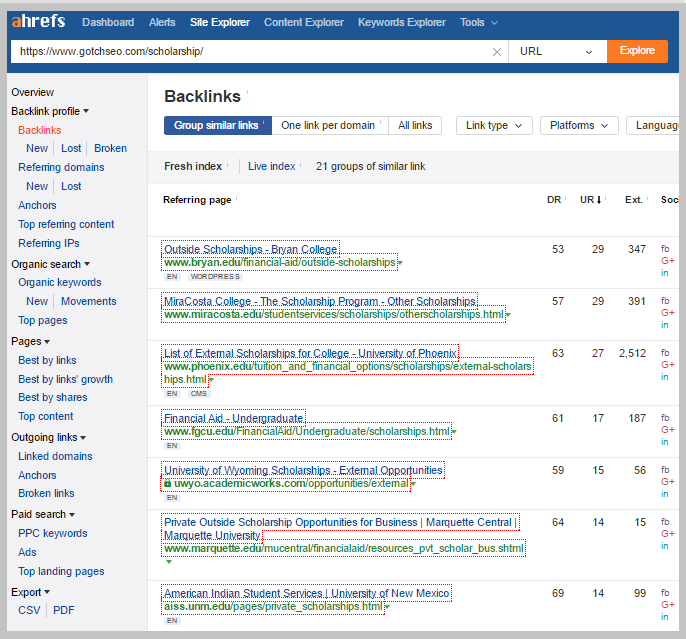
3. Curate Industry Scholarships
It’s fairly easy to say, create a scholarship page and build links.
But if your main hindrance on how to get backlinks to your site is your existing resources, it would be a bit harder on your part.
Why not create a list of available scholarships in your industry?
Take a look at this example:
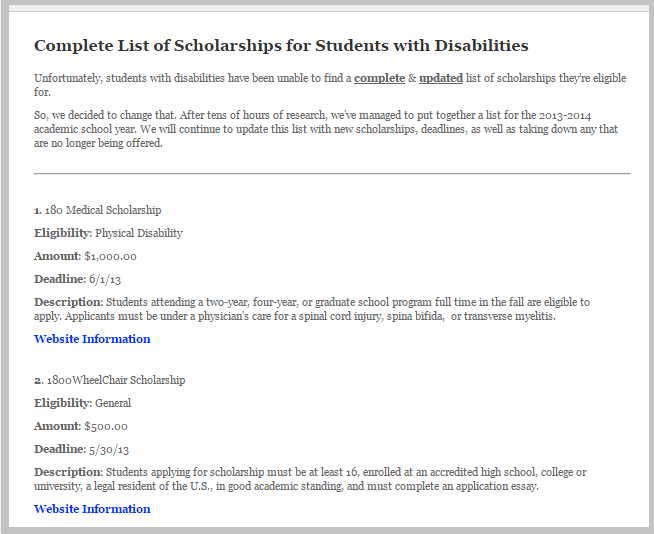
It took tens of hours to create a page without spending a penny.
Time and effort is what it takes.
What to do next:
Reach out to webmasters you’ve included your curated scholarship page, you’ll be surprised they are willing to add a link from their sites.
Next:
Reach out to .edu sites and ask if they can include your curated content in their existing scholarship page.
Don’t worry about getting .edu links now:
Start implementing the strategy above.
4. Get Links from Link Roundups
You start to worry that:
You can’t acquire links at the end of the week and just let your competitors outrank you in search.
What if I tell you that there’s an easy way to earn links simply by doing this untapped link building strategy
It’s called, link roundups.
Link roundups are regular posts published by bloggers to curate the best resources of any content format in their industry.
This link roundup from a fashion store.

Finding this type of content is very easy.
Type in any of the following keyphrases plus your content’s target keyword or topic:
- Blog hops
- Link ups

Make a list of these bloggers who regularly do roundups.
Get their contact emails and proceed to outreach.
To increase your chances of getting links using this approach, it is best to start identifying the specific day they published the article.
If they post on Thursday, schedule your outreach emails one or two days before – i.e. Tuesday.
It won’t make sense for them to add your link once they have finally decided what resources to add to their link round-ups.
The next time you publish your content, take a look at available industry link roundups and see if you can build links from them.
5. Co-author a Content Piece
A single content creator for one content asset is good.
But co-authorship is much better.
You can try reaching out to content partners who’d be interested to distribute your content (which most of the information is done by you) to their own blog and to blogs they’ve connected with.
It’s a win-win situation:
They get links from other blogs without spending much time in content writing.
You get links from blogs you even didn’t do outreach at all.
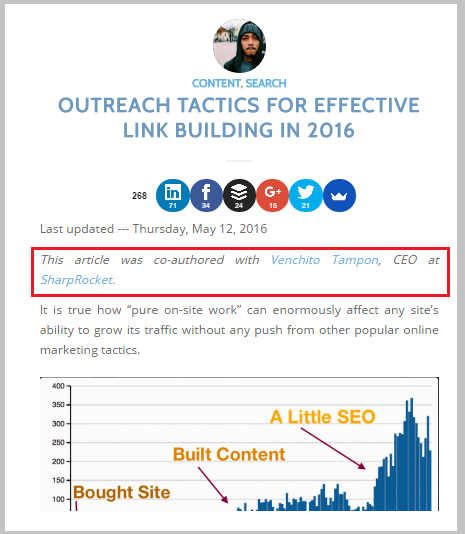
6. Publish Data-driven Content
Industry publishers, especially those in top-notch blogs, prefer to link to content pieces that have information from credible sources.
If you have collected data either from internal resources or from external (but only from credible sources just like this one from Backlinko), then don’t hesitate to publish it.


7. Contribute to Crowdsourced Content
It’s sad to see people being frustrated with links they’ve built in a month, when you know that they have the capacity to do so, especially if they have an authority built in place.
One type of link you can actually leverage on a consistent basis are crowdsourced content links
If people know about you on the web, they’ll start to send emails to you and ask simple questions.
I’m a fan of this link earning technique because you don’t spend too much time to get a single link.
Imagine:
If you can acquire at least four backlinks every month by spending only 20 minutes for this approach, then that’s a big return of investment not everyone can achieve.
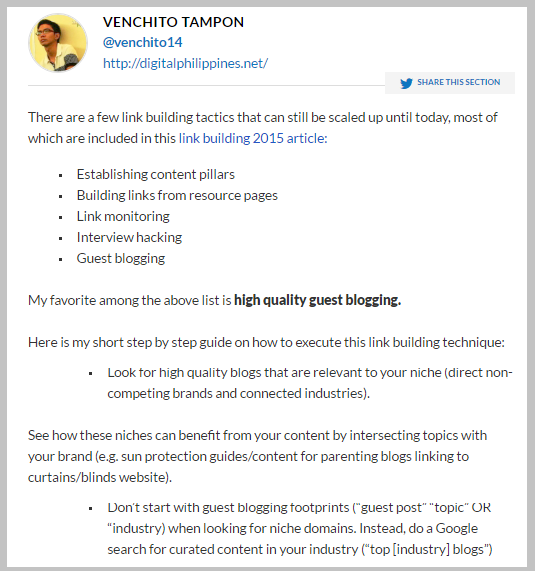
8. Create Free Tools
Tools are everywhere.
And if you can build a simple tool that helps certain group of people with their needs, then they’d likely return the favor in the form of links.
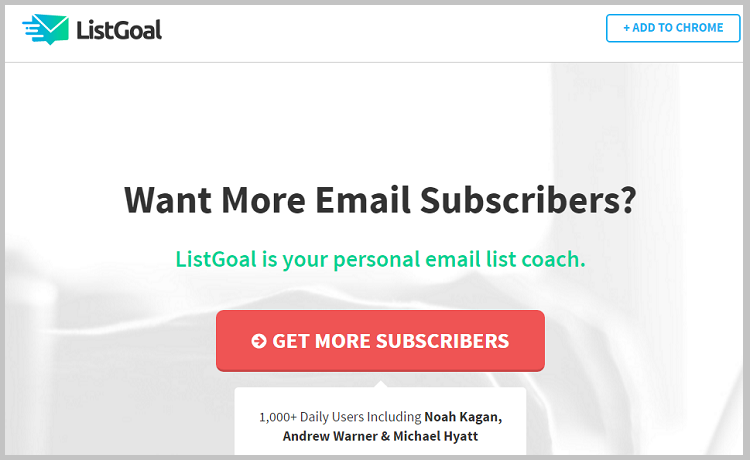
Bryan Harris from Videofruit had this awesome email list building tool that helps you to set goals and motivate to reach them in a specific time period.
If that helps me with the task and I have a blog, wouldn’t I be kind enough to link to his page?
After all, links main core principle is providing value to others.
9. Produce a Co-Marketed Visual Content
Believe me or not, without content promotion, most content assets will fail (source).
However, you can take most of the load off yourself when sharing your content to others.
Look for websites who’d published a visual content of any form (static, interactive, etc..) and get them as your distribution partners.

FilmSavvy makes it easy for other relevant sites to publish their content by including other sites’ logos in their visual content.
10. Find Link Opportunities on Twitter
Wouldn’t it be great if Twitter isn’t just used for social sharing?
While many blogger still don’t know, Twitter can also be a link prospecting tool.
If you are finding niche-specific bloggers to reach out to and build relationships with, try a Twitter search for “INDUSTRY” “bloggers”.

You’ll find another set of bloggers that aren’t included in your link prospecting sheet.
It gets better.
Because you won’t only get links from them, they will even share your content as well to their existing followers – which amplifies your content to acquire more links.
11. Build More Contextual Links
Those higher links up in the HTML code of a page seem to pass more ranking ability to those lower down (source from Moz).
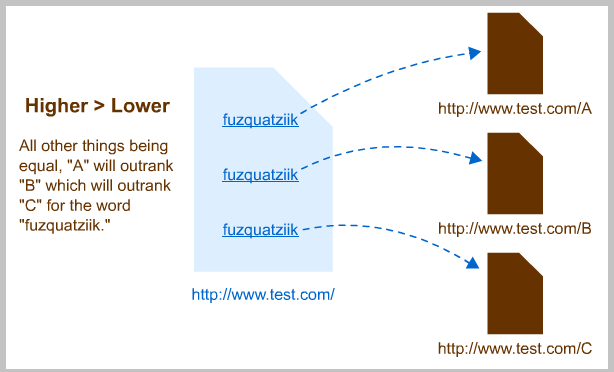
In a nutshell:
You can say contextual links from content above the fold is more valuable than blog comment links.
When you strategize your next link building campaign, try to leverage tactics that could give you contextual links from qualified domains.
12. Follow up Out-of-office Email Responses
Have you ever received an out-of-office email from a person you pitched to?
What did you do with it?
Say yes if you deleted it right away and moved on to another list.
Don’t regret if I say you that you take too much time to research for that domain and just wasted those minutes of research simply by not taking further action.
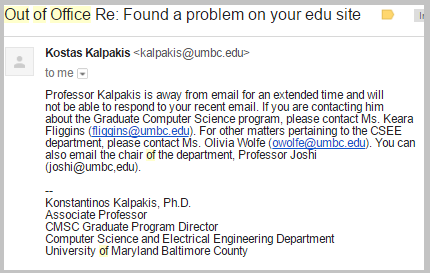
The next time you receive an email just like that,identify his date of return by reading his automated email.
![]()
Schedule an email message one day from the time he returns so your email won’t just be part of bunch of emails he’ll receive on the date of return.
13. Get Interviewed on Podcasts
Authority makes it easy to acquire links.
But what if you are still starting out in the industry?
No subscribers. No followers.
One way to increase your following and links in general is to get interviewed on podcasts.
Start with producing top-notch content on your blog – this will serve as your authority and social proof.
Then find reputable sites with regular podcasts in place.
Do Google searches for industry “podcasts” to get a bunch of them.
Once done, reach out to those mid-authority blogs then scale it up to higher level when you had a few podcasts interviews made already.
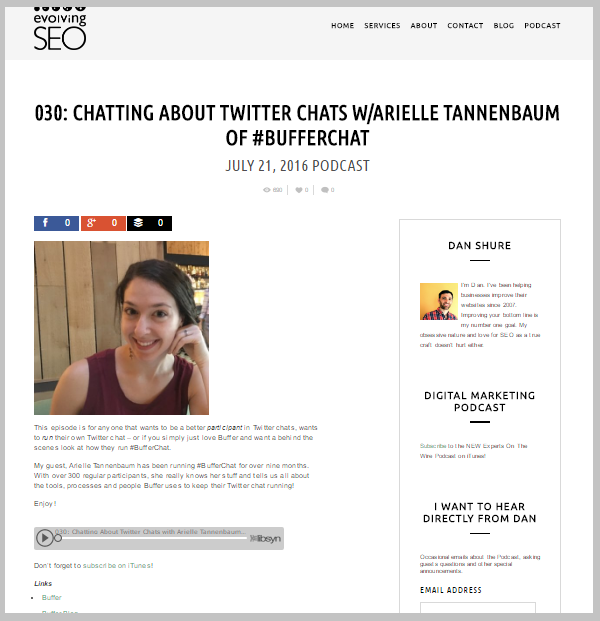
14. Give Student Discounts
If you own an eCommerce site, you can leverage your existing offers to acquire links from highly-valued edu websites.
One offer you can make is a discount code for students in colleges and universities.
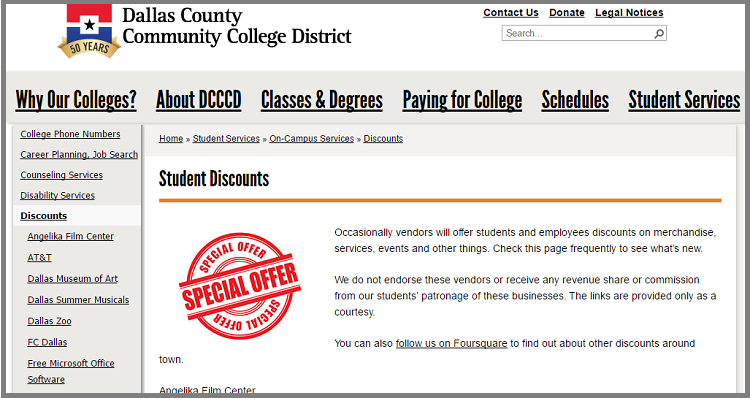
If you had this type of content, then maximize it for link acquisition.
Keep reading.
Start your link search with “keyword” “alumni discount” inurl:.edu.
You can replace key phrases with “student discount” OR “sponsors” page to find more link opportunities.
Make a list of them and use your discount code as your value proposition in outreach.
Here’s what the paragraph with a link looks like:

15. Offer Member Discounts
Discount offers are an untapped value most eCommerce sites aren’t using for their link building campaign.
If this is something resource curators are looking to add to their pages, it is definitely a goldmine to consider for links today.
Take a look at this example:
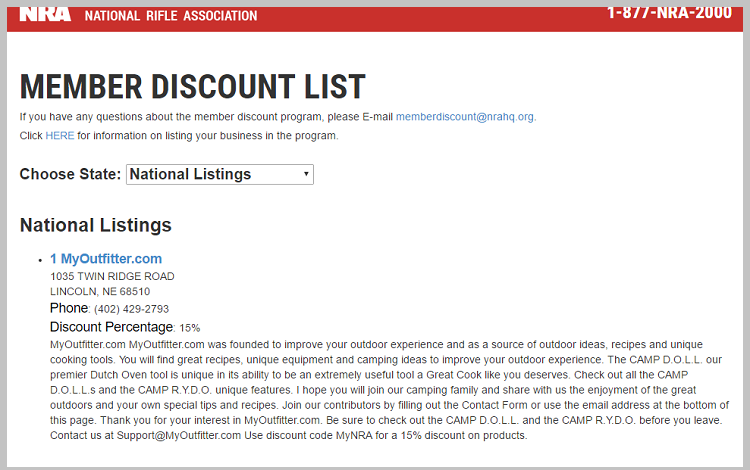
It is a member discount page hosted in an organizational site.
If there are hundreds of member discount pages just like that, then you’re missing out those high caliber backlink opportunities.
To find them:
Do Google searches for site:.org “member discount” “keyword”. You can replace search queries with “member discount list”, “member discount benefits” or “member discount program” to expand your link lists.
Then list them down in a sheet and prepare to do some outreach.
Trust me it is not too difficult to acquire links from those types of pages.
16. Provide Employee Discounts
We had students and member discounts as eCommerce link building tactics, shared above.
But there’s one thing still missing:
Employee discounts.
They are pretty much the same with other discounts. It’s just that they are only offered to employees of companies (self-explanatory).
Look for them using Google searches like “keyword” “employee discount”. Replace employee discounts with “employee discount program” and “employee discount list” to add more sites to your backlink list.
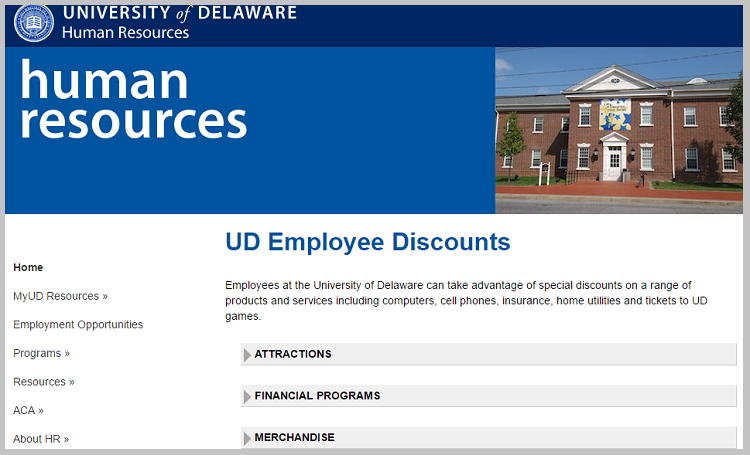
If this value is something that you offer as an eCommerce store, make this part of your link building plan.
17. Do Outreach to Bloggers with Recently Published Content
Knowing if bloggers had the capacity and availability to update his current page can make or break your chances of acquiring a link.
One type of these bloggers are those who recently published their posts related to yours.
They are more receptive to pitches particularly to link request emails given that they are still on the mode of adding more references and resources for their recent content.
How to find them?
Do a quick search for your target keyword/topic in Google.
Filter the results by all published date to only get pages that are indexed by Google within that time period.

Take note that Google will only provide indexed pages, so if bloggers didn’t allow Google to index their recent content pieces, it won’t appear in search results.
Imagine:
If you can find at least five bloggers every week who just published a similar post, and you got 15% conversion rate using this approach, you can acquire 3 additional links every month for every single piece.
If you need help with your campaign, you can check out our blogger outreach services.
18. Forward Your Email to the Right Person
There are different responses you can receive from your pitches:
One may be a failed message, automated reply of returning back from a vacation or a direct email saying you need to forward this to the right person.

When you receive this reply, forward your email to the right person, with a subject line: forward to [topic].
This tells your contact person that your email has been sent for that reason and not just another pitch they receive on a regular basis.
19. Participate in Offline Events
If you get invited to speak at conferences, seminars or any other offline events, take advantage of mentions acquired from speaking pages.
Mostly these mentions would be accompanied with links, but if not, ask the organizers if they could link to your own branded profile page - offer it as a page to link to.

If you want to start leveraging this branding technique, you can create profile pages in top community sites like Inbound.org and participate well to be noticed.
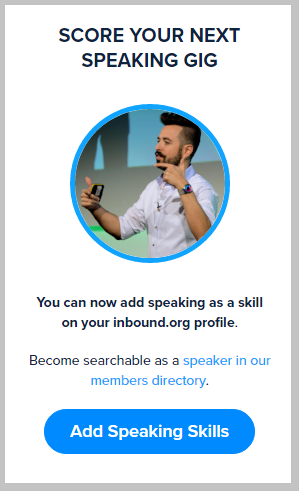
20. Do Reverse Guest Posting
Guest blogging is still an effective link building tactic for many bloggers, marketers and business owners today.
But there’s something that we missed with this SEO technique:
It is not just a one-way process.
You can actually do reverse guest posting on your blog and still acquire links.
Revere guest posting, as it defines itself, is inviting other bloggers in your industry to contribute a content for your blog.
There are three types of links you’ll get using this approach:
First, links from the guest blogger’s own sites referencing their work on your blog.
Second, links from the contributor’s network of bloggers.
Third, links from your own network referencing a top-notch content contributed by the guest blogger.
All of these three are very useful in helping your site to build its authority and branding in your niche.
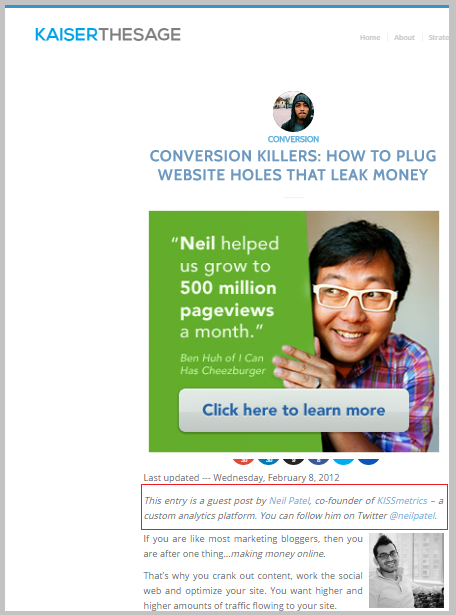
21. Schedule Outreach Emails
Most pitches that I got from bloggers came in either early morning or late afternoon – when I mostly available to respond to emails.
If you can time your emails just like that, you’ll get more responses that the usual, and potentially convert them into links.
Simple, isn’t it?
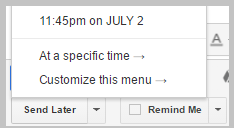
22. Transcribe Content to Other Formats
Besides visual content, there are also other ways you can take advantage of non-text content, i.e. audio and videos.
What to do?
Look for videos that can be transcribed into text.
You can go directly to Youtube or do a search for a specific topic.
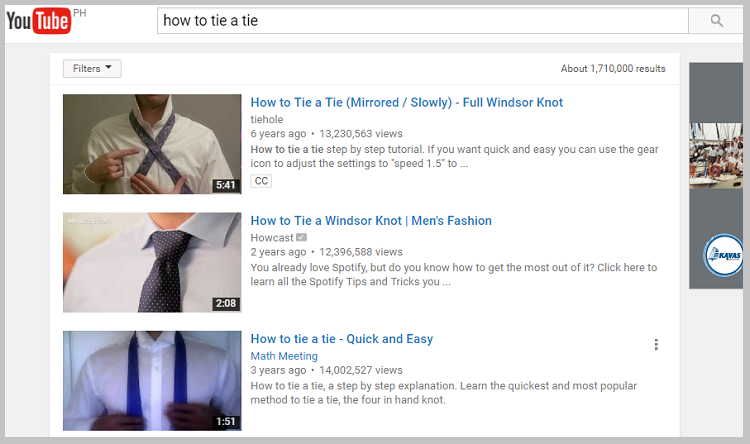
Check the website hosting the video if they had transcribed it already, as it won’t make sense to make a duplicate copy.
Upload your video to Speechpad (paid tool for video transcription). It would normally take 24 to 48 hours, choose whatever works for your schedule and budget.

Once you have the transcribed content, check the article if it could be used as a guest post, i.e. running it through CopyScape if it is a duplicate of others.
A simple editing of the article – adding bullet points will do to make it a good content that can distributed to a particular blog.
23. Update Other People's Outdated Content
Learning from others is one factor that makes some content to be the most successful resource on the web.
Think about it:
If others’ content had acquired good results in terms of links and social shares, but lack in something like information, do you think you’d have a chance to achieve the same success?
Yes and no.
Updating other people’s content isn’t a guaranteed success for content-based link acquisition.
But:
If you will apply the following steps below, you are on your way to the right track:
Use outdated content finder to find old pages that need more updated and in-depth information.
Below are instructions on how you can use it properly.
Check each webpage in results and look at their numbers of referring domains (use Ahrefs Bulk Checker for this activity).
Grab content pieces with ~100 unique linking websites from your list.
Determine which of them are feasible to invest by asking yourself questions: a.) can you beat the content with more information (i.e. 100 tips > 38) b.) can you make information much better (i.e. more references/data/resources) c.) can you outrank them with better design? – are you willing to invest in the content to make it more appealing to readers?
If these questions have been answered, proceed to creating the content.
Finally, reach out to those linkers of outdated content and share your better content to them.
24. Find Blog Opportunities Using Reverse Image Search
Let’s face it:
Guest blogging is saturated.
If your only link prospecting method is following footprints of guest post by, write for us, then sooner or later, you’ll be running out of backlink prospects.
What other ways to prospect for guest blogs?
Use Reverse Image Search to find blogs that published content of any form on a similar topic.

Given that they have posted content assets from other bloggers, they’d also be receptive to pitches for guest blogging.
25. Use Linkclump to Ease Tab Opening
Productivity is very important in link prospecting, especially if you are targeting hundreds of backlink targets every week.
You have to maximize every minute of your time.
Raise your right hand if you are that person struggling with opening multiple tabs every time?
What most of you do when opening tabs is to right click on each links and click open in new tab.
But what if:
You have long list of domains to qualify, let’s say 300 or 400. Doing the normal tab opening takes too much time.
LinkClump solves that problem.
With this tool, you are able to semi-automate link opening with a simple right click plus drag combination.
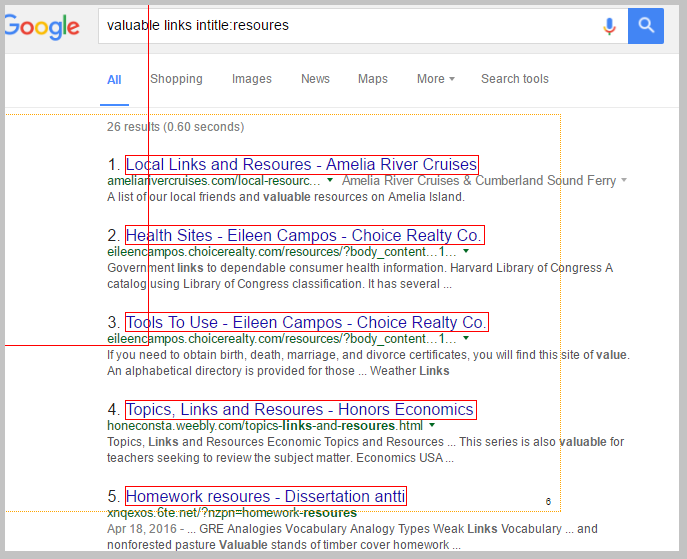
This saves a lot of your time.
26. Build Testimonial Links
Have you ever seen a page with three or more testimonials from customers, clients and influencers?
They are not just good for conversions, they are also a great channel for link acquisition.
Visit Google and search for “related keyword” “testimonials” site:.org to find them.
There might be some clutters in search results, so be sure to pick only pages that are related to your industry.

27. Use Stylist for Link Prospecting
Are there times that you have visited the same link prospect twice?
Several times, isn’t it?
Now you can avoid that to save you wasted time in link prospecting.
Install Stylist in your Chrome browser and insert this code in the settings.

Visited pages will be highlighted with your preferred color.
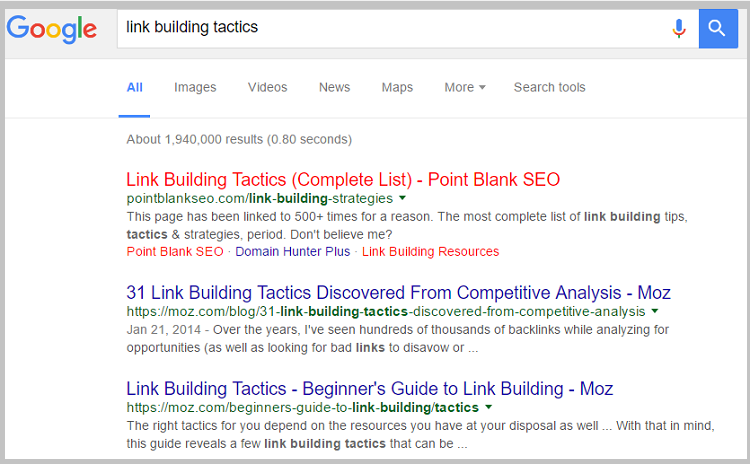
If you find this tip great, proceed to the next link prospecting strategy:
28. Insert Internal Links to Guest Posts
Have you submitted a guest post but found out later that it’s been rejected by the publisher?
You know that your content is of high-quality. So what could be the reason?
First, you didn’t pass the guest blogging guidelines.
Second, you didn’t even include an internal link to the publishers’ past content.
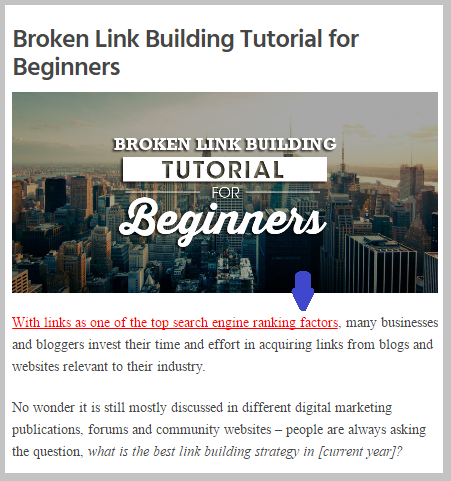
The next time you submit a guest post, make sure to include at least two internal links to the guest blog’s posts. This increases your chances of landing a placement for your guest content.
29. Do Broken Link Replacements
If you are not familiar with broken link building, it is simply a process of telling the webmaster of a certain site that there’s a broken link found in one of his pages, and suggesting that the content on your blog is a good replacement for their broken resource.
What makes the big difference between a link builder making 2 to 5% conversion rate from someone who only had 1% or less than success rate – both are using broken link building as their link building approach?
Value
The best way of doing broken link building is not just providing the webmaster with a list of broken resources, but make sure to give them replacements for those defunct links.
Don’t just give them your resource as a replacement; this should be your last value.
See the outreach email below. This was my response to the webmaster asking me what links I’ve found on their sites.
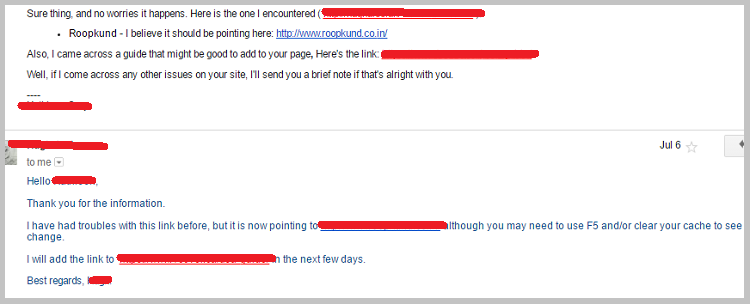
After giving them replacements and suggestions on how to fix their broken links, it’s time to let them see the resource of my client.
Much greater success than what you are traditionally doing.
Good news:
There are more link prospecting techniques below.
30. Find Networks to Build Links For You
Networks.
They’re not just useful for increasing influence, authority and following, they could be great sources of links too.
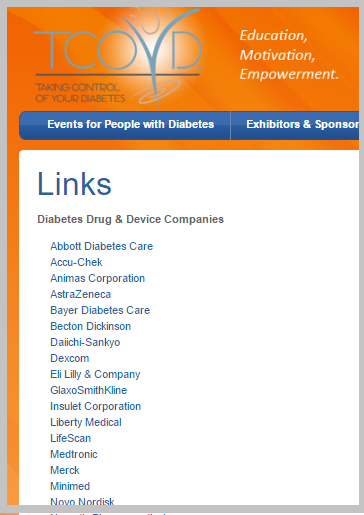
Ask your sales department or your client if you are in an agency if they have a list of manufacturers (for retailers), retailers (for manufacturers) and suppliers (for both).
See if they have a specific page for retailers/manufacturers/suppliers and reach out to them – ask if you can be included in that page.
31. Exchange Content With Others
If you are doing law firm SEO, you know that a simple guest post won’t work instantly.
Yes, those pitched bloggers can get free content but that’s it. They don’t have much value to get from you.
What’s more effective?
Find a non-competing blog to do a guest post for.
If you are in the legal industry and offers bankruptcy and any business law services, you may want to find legal sites with blogs that offer non-legal business specific services.
Pitch them and ask them if they are interested to distributing content to your blog and your content to theirs.
A quick exact process of content exchange. Simple yet very effective.
32. Use Tools to Identify Potential Penalties
You become aware of how important identification of quality in link building when Google released Penguin filters announcement way back in 2010.
Whether links comes from a pure outreach-based link building campaign or an organic one, determining the health score of a prospect website is very essential.
Use Ahrefs or SEMRush to determine if a prospect domain had a sudden traffic drop. If it appears to, it is a good indication of possible penalty. Move on to your next link prospect.
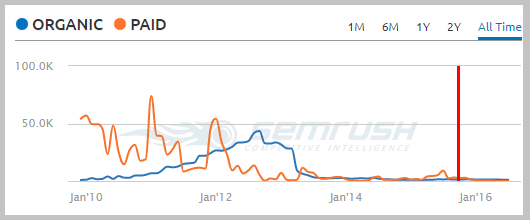
Be sure to see a steady growth of organic traffic on a website, not just for indicating possible penalties, but for getting constant flow of referral traffic from the said site.
Very effective.
But wait, there’s more.
Read the next link prospecting tip.
33. Use URL Profiler for Bulk Link Metrics
Have you been overwhelmed with many link prospects that you didn’t have a chance to check which ones are high quality?
If yes, here’s what you can do:
Upload your file of backlink targets to URL Profiler (make sure you download the software first).
Check the metrics that you prefer – Moz, Ahrefs or Majestic.
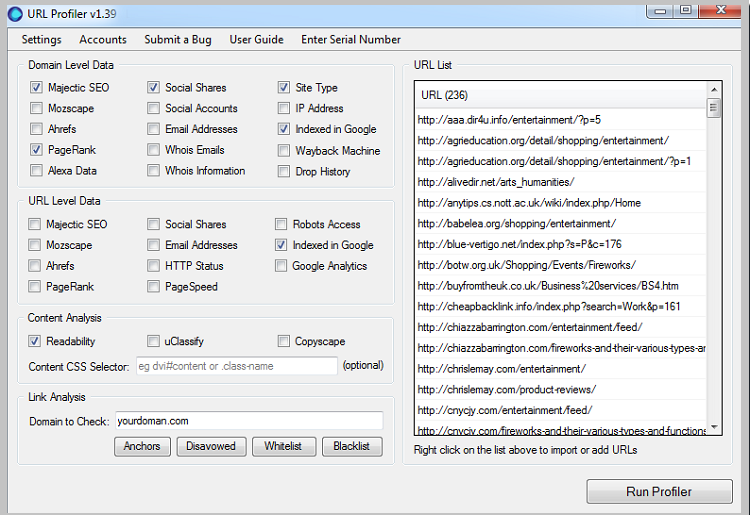
Then wait for a few minutes, and you’ll get a CSV file of target domains with their respective quality metrics.
What to do next:
Grab all websites or pages that pass your benchmarks – for example, choose sites with Domain Authority of 30 and above.
Target them for your outreach.
Continue reading:
There are outreach tips below to continue your link building process.
34. Identify Link Obtainability Rate
Responses from resource curators should be evaluated and help your outreach process.

When you get a reply just like that, you typically ignore it and move on to the next prospect in your list.
But take a closer look.
Resource pages with all external links pointing to a similar type of website should give a valuable insight then.
The next time you quality a resource page based on obtainability, you would want to look at the type of site all of these external links are pointing to.
If they tend to point to a .gov, .edu and other non-profit sites - ~80% or more and you don’t see any similar resource just like yours, that’s a good indication of low link obtainability score of that page.
Great observation, isn’t it?
35. Offer Premium Images to Bloggers
Non-stock photos and those without copyright tend to populate blogs – making it not appealing for old as well as to new readers.
Make sure:
You take advantage of this problem:
Offer premium bloggers to niche bloggers (may it be too close or not with relevance) – after all, links are still links built.
It would be also useful if you can create a page solely for that purpose.
Look at this:

Design should not be as elegant as possible – just make sure all premium mages are sorted and arrange properly.
36. Get Image-site Links for Competitive Industries
What do you do when you’re trying to build links in a lucrative yet challenging industries like payday loans and gambling?
You go to your last resort – Private Blog Networks.
I doubt if links built using that approach will last for decades.
Anyway, what you can do is to try different approaches to build links to those types of sites.
Check this out:
Ryan Stewart had this client in the gambling industry.
So what he did was to get image links from other linking pages for another client.
Sounds confusing? Look at the example below:

An image link built from a digital marketing blog – may not be as good with relevance, but can pretty draw some high link juice to your other client’s site.
37. Diversify Your Anchor Texts
Anchor text diversity is what makes a natural link profile different from others.
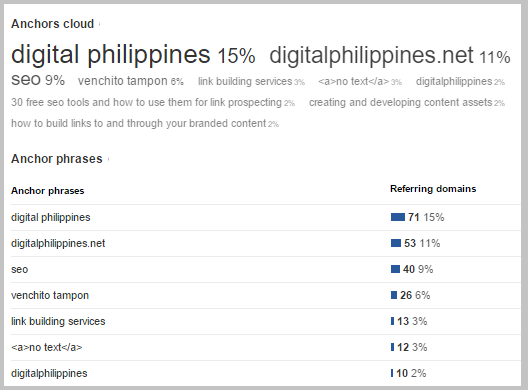
It is not normal to see an anchor text section of 90% pure commercial anchor texts. It’s inorganic.
But there is a simple and best way to diversify your anchor text.
That is:
Let bloggers and webmasters decide the proper anchor text to link to you.
Don’t be aggressive with exact match anchor texts. You can still rank for relevant terms when you add LSI terms to your linking pages – more to that later.
But for now:
Proceed to the next link building tip.
38. Reformat Other People's Content
Let’s admit:
It’s hard to create content especially if you don’t have any idea about the industry.
Does this sound familiar?
You may be experiencing this but there’s actually a secret to overcoming content creation headache.
You can start your content ideation process with identifying a few success content assets in your industry.
Use Buzzsumo to check top performing content.
Sort the results from highest to lowest social shares and/or linking pages.
Create a visual version of the content.
Make an infographic if the content is much more appealing to users where there is a visual version.
Next is to outreach all webmasters linking to the original version of the content.
Build more links.
Take a look at this:
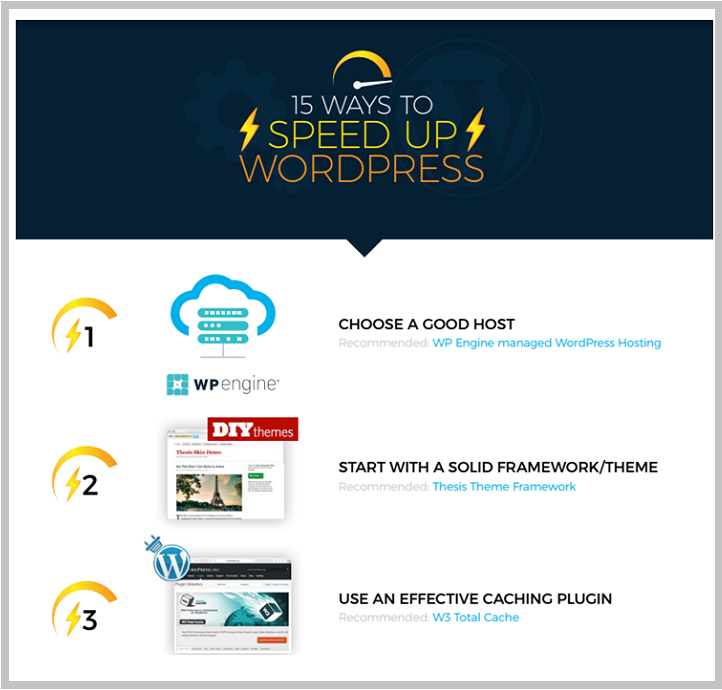
The team at Hosting Facts created a visual format of the popular post of Gregory Ciotti on how to speed up your wordpress.
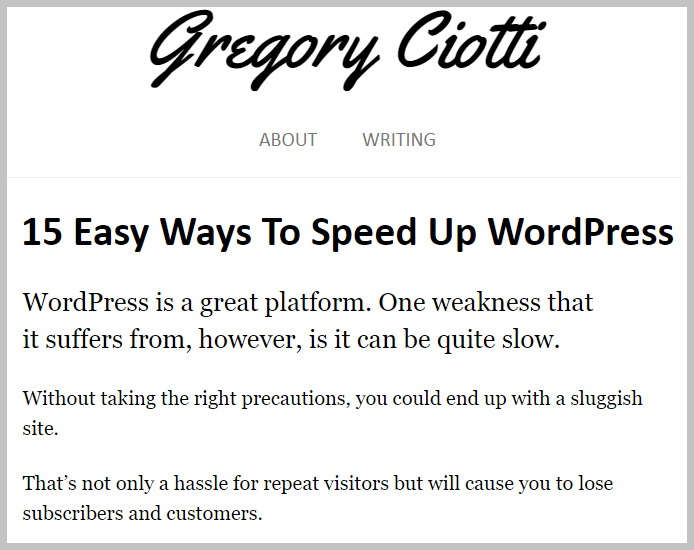
Because the original post had gained [number] of backlinks directly pointing to the page, there is a great indication of success in outreach.

Update: Tung Tran published an updated article on speed up your wordpress site.
You see:
39. Buy Content from Real Bloggers
In my experience, scaling link building is one hard truth.
It’s not easy.
One reason is that you don’t have a specific link building to execute right away.
But what if I tell you, you can scale link building without sacrificing the quality of links built.
Here’s how:
Reach out to bloggers with top notch content on their blogs.
Ask if they are doing freelance for others. If they say no, ask if they’d be interested to do so.
Buy content from them.
In return, keep the authorship of the content while your team maintains the outreach and content distribution campaigns.
Returns are awesome:
You get top-notch content and a link from an authority blog pointing to your site or to your client.
The blogger gets a link pointing to his blog, since you’ll be using his authorship. He also gets a writing fee for his content.
40. Use "Because" in your Outreach
Have you tried everything in outreach but are still getting the same results as before?
I know that feeling.
But do you know that there’s one thing you can do to increase your response and conversion rates in outreach?
It is acquiring the skill to magnify the value of your pitch.
When you emphasize the value of what you’re offering, it becomes easy to convince people to convince about your email and what you’re trying to tell them.
One way to do that is to start using because in outreach.
Brian Dean found that there’s an incremental positive effect in response/conversion rate when you use the word “because” in outreach.

It is a psychological effect that turns your request seems more legitimate.
In outreach, legit messages get better responses.
41. Provide Three Reasons in Follow Up
When you send emails to people, there are two things that happen:
Some people reply.
Others don’t.
With the 30% of webmasters who don’t respond to your pitch, do you know their reasons?
One way to know that is to send them three reasons of non-linking in your follow-up emails.
See this image below:
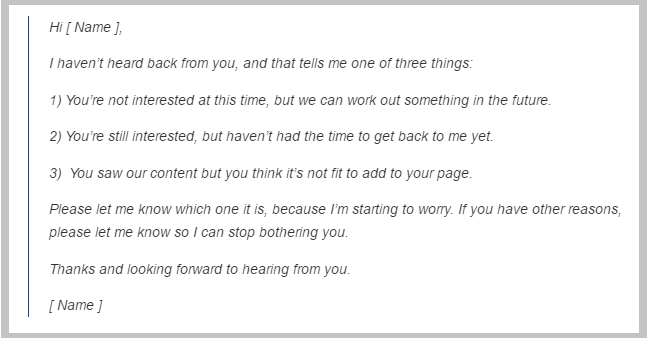
Webmasters only have to choose one among these reasons.
So what do we usually get from this approach?


These types of emails are better than receiving none. Not knowing the reasons gives you a blurry idea of what to do next.
With your next follow-up outreach campaigns, test this strategy and see their answers for yourself.
42. Use Email Hunter
There are different aspects in link building that consumes so much time – which you can actually delegate to someone else.
Like finding emails.
If you take each one link prospect and look for their corresponding contact emails, you could have spent hours doing that.
And if you don’t have a team to help you with email hunting, it’s obviously a time wasted on your part.
But don’t worry.
There’s a simple way to get things done.
You can use EmailHunter to semi-automate this data mining process.
You can generate emails available on each website prospected by clicking on Google Chrome tool button.
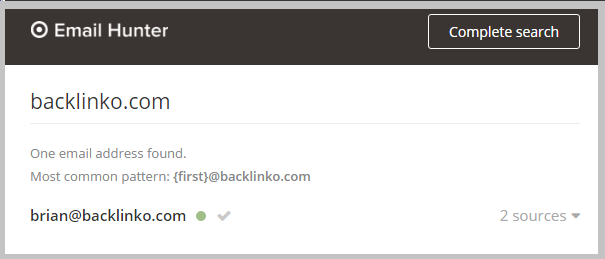
Easy.
Then after, what you need to do is to choose your preferred email.
43. Find Direct Email In Resource Pages
The biggest outreach mistake you can do is to totally depend on your email hunting tools.
Remember:
These link building tools aren’t perfect and won’t give you assurance of higher response and link acquisition rates.
When you encounter a prospect page, let’s say a resource page, what you normally do is check the contact us page and direct your pitch.
You forget something:
Those resource pages that you target have direct email addresses included in the top or below sections of the page.
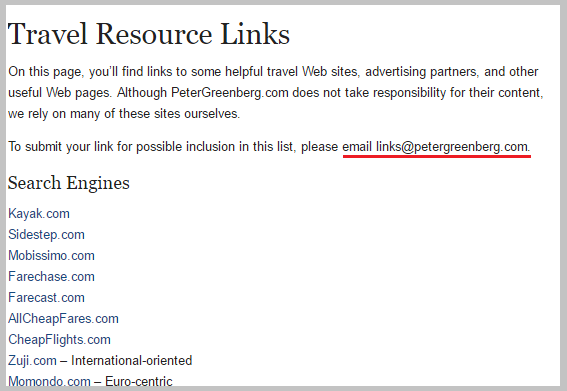
The next time you find contact emails, skim the page from top to bottom and address your pitch to the right contact email.
44. Avoid Industry Jargons
Emails should be as straightforward and simple as possible.
Take note:
Not all webmasters and bloggers know about SEO.
And even if they do, they get alarmed easily with SEO concerns, one reason why we don’t usually get a link from them.
Try to avoid saying link to this resource or content.
You can use words like cite, reference or share (but share mostly implies social share).
Use your words carefully.
45. Associate Two Resources in BLB
When recommending a resource to be included in a resource page, it’s fairly common to see a link builder just providing his own content alone.
That’s not to say it’s a bad practice.
However:
You can still improve the conversion rate by recommending a secondary resource.
Your recommended secondary resource in your vertical can help lower the commercial intent to the webmaster.
The advantage?
It can increase your chances of getting the resource link to your content.
46. Tell Your Content Value for Sponsored Posts
If you’ve been blogging for years, you know how saturated some industries are.
A few examples are finance, mommy and coupon verticals.
Almost half of blogs in those niches won’t provide you a link for free.
With that, what do you do?
Move on and prospect another list of domains?
No.
One way to counteract their responses of asking you for sponsored post fee is to tell them this value:
The price of your content
It’s a psychology effect that can increase your chances of placing your guest post on their blog.
If your writing is valued at $100 to $150 per post, you can mention that in your response plus the traffic that type of content can generate for their sites.
Also, a simple question just like this would help you a lot as well:
Is there any way you’d consider waiving the sponsored post fee?
Most kind bloggers will prefer not to charge you for a post if they’ve found your content more valuable than other guest bloggers pitching them.
47. Find More Prospects from Broken Pages
One biggest problem of link builders:
Running out of link prospects.
If you are that person, especially if you are working on a broken link building campaign, one way to expand your link lists is to look at your previous campaign.
See broken links you’ve suggested to your past potential linkers.
Plug them in Ahrefs and determine if they are highly linkable by resource curators.

The best in this strategy?
You’ll find hundreds of qualified prospects that you won’t find simply using Google search.
48. Check Top Pages of Broken Content
Have you come across a broken link?
Don’t just add it to your spreadsheet.
See if it could be a channel of multiple link opportunities.
Plug broken websites into Ahrefs to find their top pages.
Sort from highest to lowest root domains.
Go to Wayback Machine and check what those pages are.
Reproduce the content with more in-depth information (10x content).
Once done, reach out to webmasters linking to that dead page and tell them about the broken link and your 10x content.
Because they had history of linking and yours is a better content, there’ll be a guaranteed success.
But wait there’s more:
49. Wikipedia Content Recreation
Ever find a dead Wikipedia resource?
If yes, use that to your own advantage.
How?
Find a Wikipedia page in your industry that is outdated and/or requires additional information. You’re your research process with a simple Google search for "This article has multiple issues" + "topic keyword" site:wikipedia.org or use WikiGrabber.
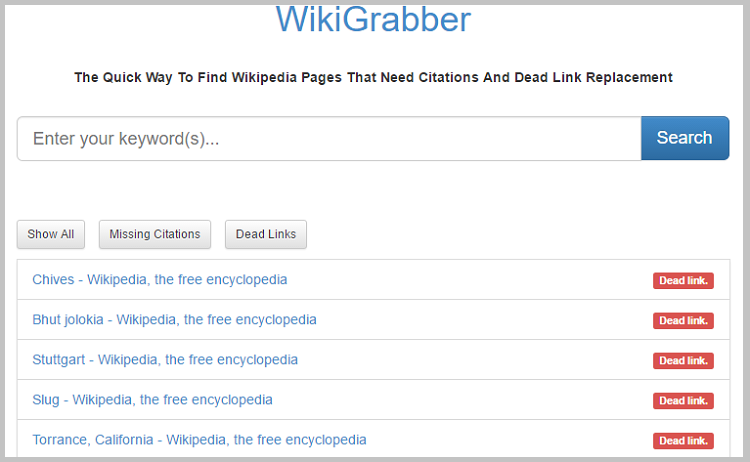
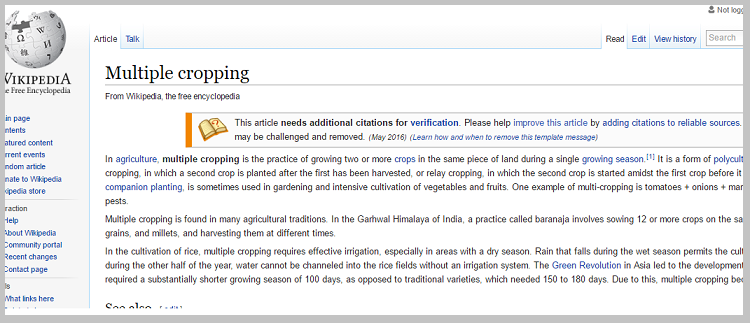
Once you’ve find a target, check out if there is a good number of links pointing to the Wikipedia page.

Create a high-utility content, make it better than the original version by adding more up-to-date information to it.
Get your first list of prospects by exporting a list of links that cite the old Wikipedia page.
50. Use DMOZ to Find Shoulder Niches
You start to worry that:
If you stuck in just one industry to tap for your link building campaign, you won’t have any links built at the end of the month.
This happens all the time:
However, you can solve this typical problem using the top directory site – DMOZ.
How might that tool can help you?
It can show you what industries you can ideally consider in building links for a specific vertical.
Horizontal.

Vertical

This works wonders in how you can expand your reach with your link building campaign.
Make this as your regular habit:
51. Make Your Tweet Short and Sweet
If you think outreach is highly dependent on email, that’s not the case.
There are many people who actually leverage the power of 145-character tweet when doing actual outreach.
See this example:
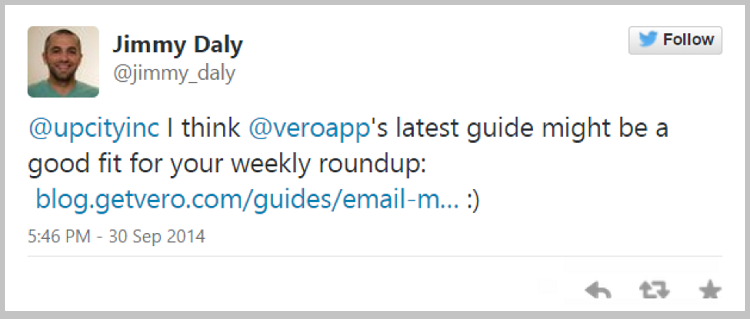
It wouldn’t take you five minutes to compose a simple Twitter just like that. But who knows, that might increase your link acquisition rate.
52. Leverage Pre-Announcement Outreach
You know what, you can increase your social shares and backlinks to your content.
Wait.
Deep down you know this is true, but how can you make it?
Simple.
By announcing your future post even before it goes live.
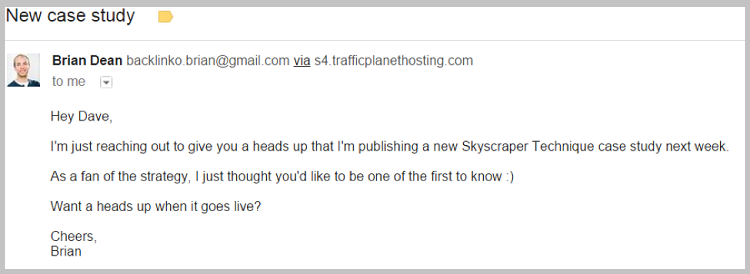
Psychology-speaking, if you ask someone to do a little commitment, it would be easy for him to respond to you.
Higher response rate.
And the next time you do a pitch of sharing the link of your content, it’s now easy to build the trust and earn the link that you desire.
53. Use Videos in Outreach
A blogger receives several pitches in a day, especially those who are in PR and news companies.
Picture this:
If a blogger receives minimum of 50 emails in a day, how possible it is that your pitch will get opened?
Don’t say no until I say this possible solution.
Think about ways on how you can make your pitch stand out.
One way is to include a video in your pitch.
It works because:
- It is personalized.
- It is a unique format of pitch.
In other words, it pulls your pitch from other similar pitches and makes your outreach email stand out.
This is time-consuming and if you want to do video-outreach to those who haven’t respond to you yet, there’s a better way.
When the person didn’t respond to you, send him over a quick video to his Twitter profile.

He’ll more likely to notice.
54. Get Links Using Slideshare
Conferences and seminars in every industry are everywhere.
And when there are events like that, speakers tend to upload their presentations to Slideshare.
And guess what?
Those Slideshare presentations have good amount of links.
With good filtering, you will get some gems of links you can reclaim to link to your website.

What’s better is when you create a specific page in your website that includes all seminars/events you’ve spoken at.
This makes reaching out to potential linkers more effective.

But don’t stop from there.
Check if you also got links pointing to your Slideshare profile.
You’ll certainly find more opportunities you can add to your bucket of links.
Reach out to those prospects and ask them to link to a specific page (just like what I told you earlier) or to your homepage (if you don’t have a new branded page).
55. Invest in Content Design
When you share a link to a webmaster or blogger, the first thing that they’d see is your content design.
Design directly affects results in outreach.
Let me share one example.
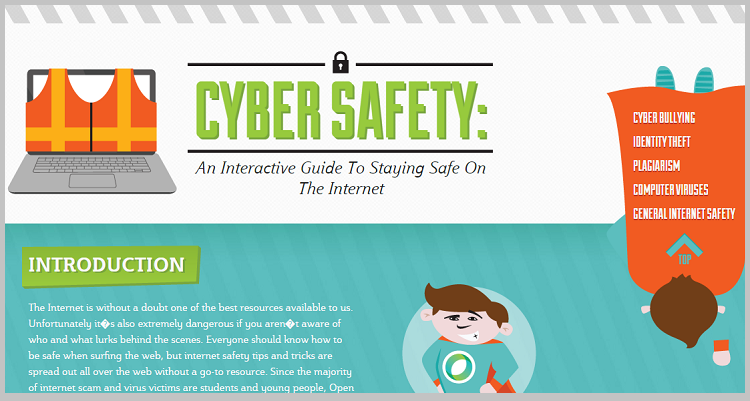
This is a resource guide about cyberbullying. It got links from 890+ unique relevant referring domains.
It’s just for one content asset.
Imagine if you have several resource guides well-formatted and designed just like that, you would be surprised with potential high-authority links you can obtain every single month.

56. Suggest Post Ideas for Guest Blogs
If you received an email like this, you probably hit the delete button right away.
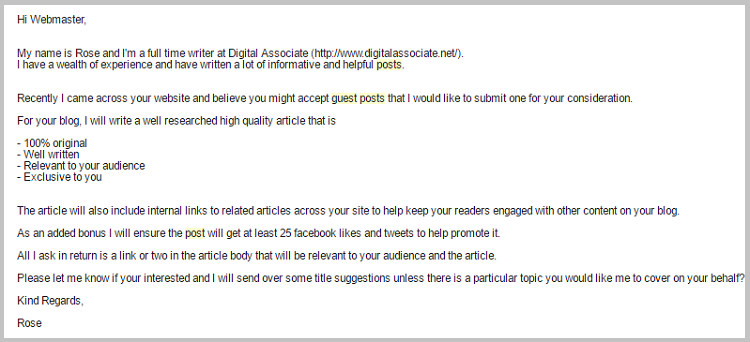
Three reasons why:
You don’t get a straight value from the pitch.
The guest blogger doesn’t know about you.
He does provide generic blog topics you’re not interested in.
If you will ask me:
My primary reason of rejecting a guest blogging pitch is the last reason above – not suggesting content ideas tailored to my blog.
Why is that so?
If you look at it closely, you can simply identify if the person takes an effort of pitching to you when he started to know what topics will resonate with your audience.
So your next question:
How can I think of content ideas that best fit to my target guest blog?
Find the most common pain points of your audience.
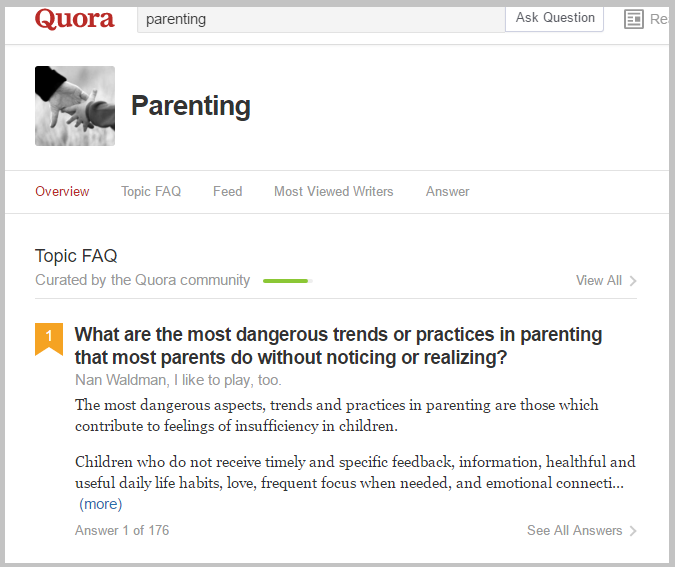
57. Ask Referrals From Bloggers
One undertook advantage of many link builders is maximizing their existing linkers to prospect for more backlink targets.
You will never run out of prospects using this approach.
And to tell you:
It is very easy.
You only need to ask your existing linkers if they know someone who’d also be interested in the same kind of value you are offering to them.
Results?
Most of them will respond to you.
Just imagine:
If you got 10 links last month and 8 of them can refer to you another two bloggers, then you already have 20 additional link prospects.
You don’t do anything. You simply just reach out to them and you already got another list.
Practice it today and see how it works.
58. Distinguish Company Blogs From Full-time Bloggers
If you are expecting responses from writers/bloggers from company sites, you’ll be disappointed.
Compared to full-time bloggers who are 24/7 ready to respond to pitches, company webmasters normally don’t respond to people unless it’d have an impact to their direct business (i.e. sales support).
How can you identify company blogs from full-time bloggers?
It’s so simple:
By looking at page SERP structure, you’ll be able to see directly if a site is owned by a company or not.
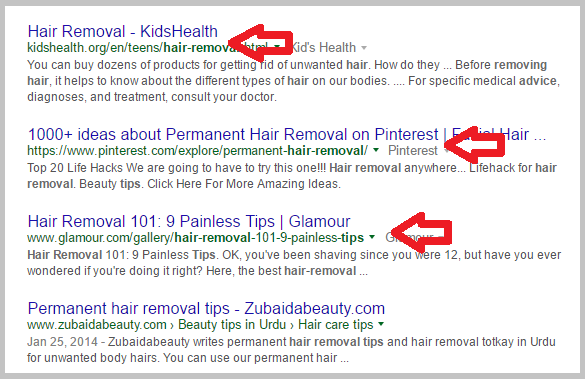
When you prospect for a blog, make sure you master identification between a company blog and a niche blog.
Proceed to the next tip to get more blog opportunities:
59. Use Comment-based Prospecting
The social proof that a blog is authoritative if it has a community of active commenters.
True enough,it’s not that easy to find many sites with that kind of authority.
But you can leverage the use of search queries combined with comment keyphrases to make high-authority link prospecting possible.
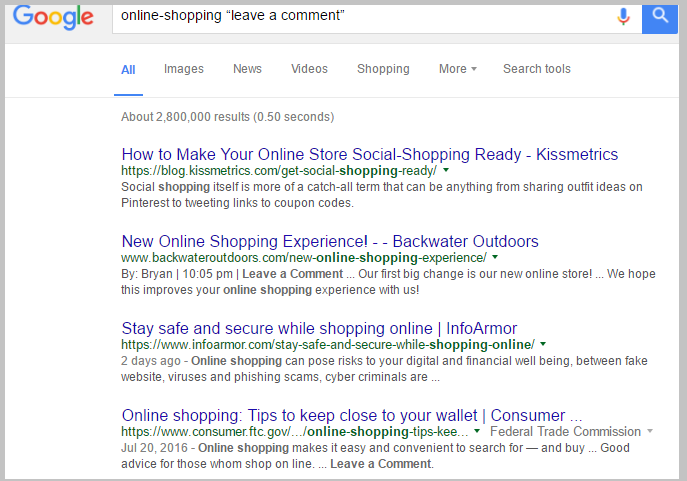
That search query signifies that results should have that number of comments in their posts
This can help ensure that you will only prospect for blogs with mid to high-level community.
If you lack with blog opportunities in your industry, try the above approach and comment below this guide if you find it effective.
Move to the next advanced link prospecting tip:
60. Use CMS-based Prospecting
One way to add more blog prospects to your list is by using CMS keyphrases.
Check examples below:

Google will exactly provide blogs that are powered/generated using Wordpress or other content management system you’ve indicated in your search.
When adding more backlink targets to your list, aforementioned approach might work for you.
Don’t stop reading.
You may miss the next big tip.
61. Find Link Exchange Phrases Easily
Link exchanges are obviously evident on blogs and resource pages.
Take a look:

When qualifying resource curators’ list pages, one of your top qualifying factors should be:
The website/page webmaster shouldn’t be involved in any link exchange or reciprocal link programs.
Simple way:
Use the Find and replace function and do searches for: reciprocal or exchange and you’ll instantly see if the page has any of those keywords.
62. Tailor Content to Linkable Audiences
As we execute broken link building for clients, our mindset has changed.
It’s not “create content” and ”build links” approach that works.
But go into this:
Identify link opportunities first, then create a content asset to serve them.
When you approach broken link building the right away, you want to find linkable audiences that will fit to your site – it may not be your direct customers/clients that you want to cater to, but a group of so called, “linkable audience”.
What is linkable audience?
Linkable audience is a group of resource curators who would benefit from specifically tailored information on a topic.
Garrett French
Garrett had a list of available linkable audiences ready to be served.
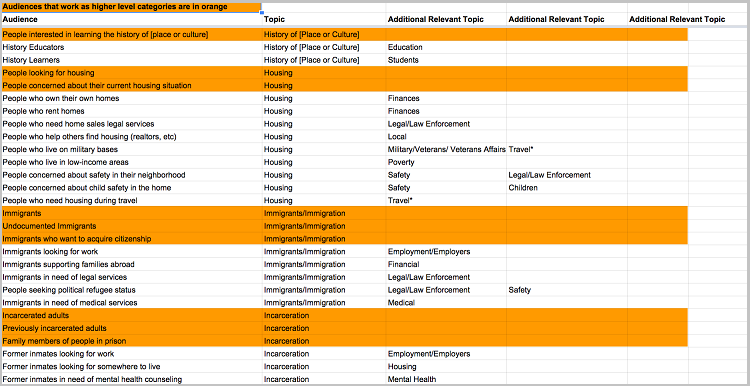
Your next step:
Determine which of these audiences you can serve based on the topics aligned to your website.
For example:
If you are in a travel insurance industry, doing a search for inurl:links.html “travel” will give you resource pages that you can further check to know the type of audience you’d want to cater your content to:
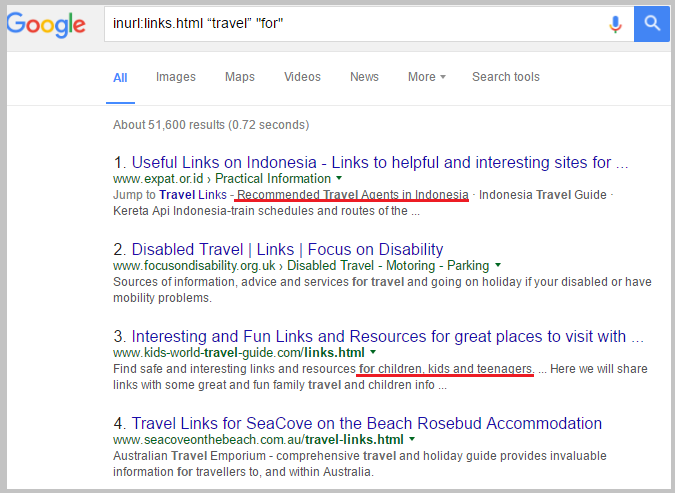
63. Use Author Bylines for Prospecting
When finding link prospects for your website, you mostly ignore names of industry bloggers.
In this case, you missed out on opportunities where you can further expand your link search.
What can you do?
Identify names of bloggers who recently published their guest posts on other blogs.
Use the Google search query, “guest post by” “keyword” and filter the search results by date.

Check if these blogs can be added to your list of target domains – use your link metrics/insights.
Next tip will surely fire you more resource page opportunities:
64. Undo Templated Mistakes in Gmail
Have you sent an email and just realized you forgot to change/add something to your pitch?
This happens in most cases.
Either:
You messed up with attribute tags, not been able to change {name} or {website} in your email template.
You sent the wrong version of an email, instead of BLB pitch, you sent a guest blogging email.
Both mistakes will kill your response and conversion rates.
So how do you avoid this from happening?
Enable Undo in Gmail Labs. Go to Settings – Labs – Enable.
65. Get Easy Rankings wiht Meetup Events
Have you heard about parasite SEO?
It’s not a total black hat.
As you know:
Parasite SEO is leveraging high-authority domains to acquire indirect links through ranking for very competitive keywords.
Instead of building links to your webpage with low authority, you can take advantage of big sites where you can easily create pages and target highly competitive keywords.
For example:
James Norquay created an event in Sydney. He named it with the exact keyword Online marketing Sydney and it now ranks for that keyword.
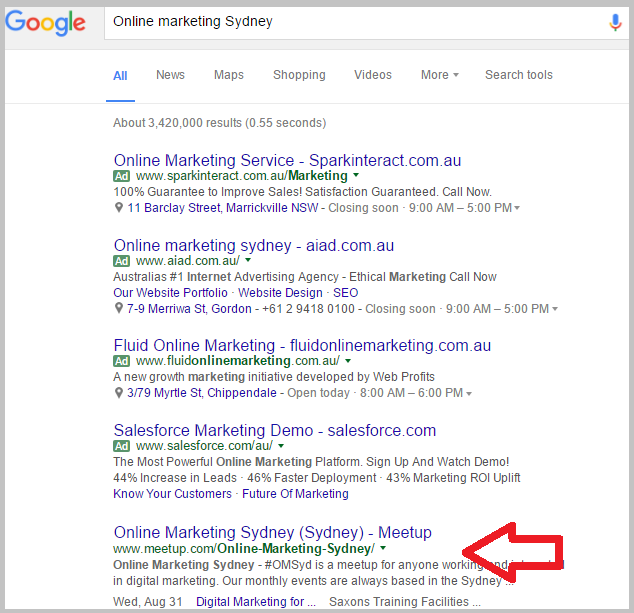
Best of all:
That keyphrase is not just informational, but it is something people are searching for to find a particular service – win!
For links?
It’s multiple.
People who signed up and attended your meetup might give you links from their blogs.
Bottomline:
Create an event and try to rank for highly competitive keyword.
Rankings and links.
Two birds with one stone.
66. Create Your Own Resource Page
Do you want to increase your links from resource curators?
There is one secret way:
Create your own resource page.
Come to think of it, if you link to other websites, may it be your competitors’ resources, you actually have a value to push in your pitch.
It is like baiting your competitors to link to your resource page, because you initiate doing so.
You are not just getting links from competitors but also from other resource curators as well.
For example:
This resource page about disability scholarship resources has been linked to many times by resource curators.

First, from websites listed in the resource page.
Second, from websites with their own resource pages as well.
Imagine:
Content isn’t expensive to create but you can acquire high-utility resource page backlinks.
67. Get Guestographic Links
Infographic promotion has been around for a long time.
Even up to now, it still works.
But one way to make this works more effective:
Pitching bloggers to write a mini-guest post right above your infographics.
If you can make a customized introduction for your visual content, you make it easy for them to publish your content – gives you more chances of getting relevant backlinks
The next time you promote an infographic:
Take away the burden from partner publishers by offering custom introductions for their infographics.
68. Use Blog Commenting for Referral Traffic
Blog comment is a branding strategy.
No doubt SEO experts still use it to market their blogs.
Check this out:

However, there’s one thing that differentiates their blog commenting strategy from others:
They do it to build their brand and to drive referral traffic.
If your mindset is just like that, you’ll have a good referral traffic from those top-notch blogs – see below of the traffic that I’ve gained from Brian Dean’s blog:
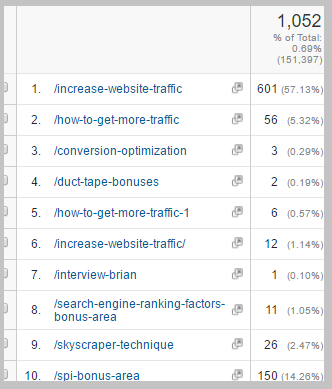
69. Link to Your Other Guest Posts
Does tier link building still works?
It depends on how you use it.
But for me, the proper way to do tier link building is to start with your external content.
Check out your guest posts. See which of them are still earning links.
If you have targeted keywords in a few guest posts, prioritize them
Make sure you link to them in your future guest posts.
When they are ranking at 6 to 10 for keywords with good search volume, you can still push them up to the 1st spot.
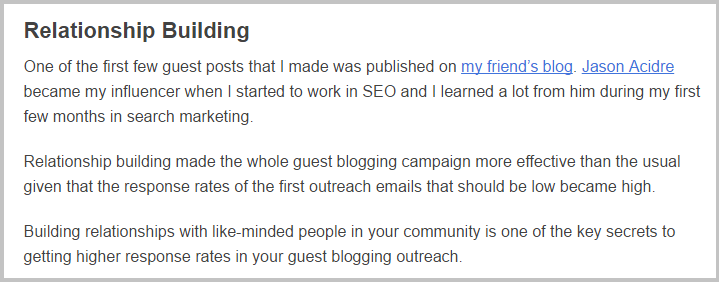
70. Organize Guest Blogging Process
If your number one link building strategy is guest blogging, one thing you need to remember is
organize everything.
Organization is important to improve your guest blogging process.
See this image below.
It has columns for:
- Domain Name
- Source
- Guest Blogging Guidelines
- Sample Guest Article
- Contact Name
- Email Address / Contact Form
- Relationship Status
Even if you have 3, 5 or 10 clients or websites, you can easily track the status of relationships with each target guest blog.
The best part:
It builds accountability among your team members (both remote and in-house).
71. Use Millionshort for Prospecting
Google is your bestfriend in link prospecting.
But you know what, there is one tool that you can use to make your search more targeted.
By using MillionShort, a tool that allows you to remove the top million or thousands pages for your keyword, you enable your prospecting to target mid-level blogs or sites.
This is very useful if you are not targeting DA70+ blogs which normally ranks for most of the keywords out there.
Next time you do your prospecting, try using the said tool.
It works.
72. Seek Link Opportunities Using Delicious
If you’ve been sharing your content quite often, you probably know Delicious that it’s a good place to share, save and bookmark popular content on the web.
Did you know the secret?
You can actually use that social platform to find highly targeted linkers.
How?
Use its search function to look for people who recently share and bookmarked a similar content of yours.
Check each profile if they linked to their websites to ensure that they are capable of linking to your webpage.
Gather all potential linkers in one list and reach out to them.
73. Create an Industry Glossary
Every industry has its own jargons.
If you can combine all industry terms and definitions into one big post, it’s a linkable content asset you can maximize for links.
Check out this glossary about gardening, there are 100+ referring domains.

The next time you run out of content ideas, create your own industry glossary.
74. Coin a Term
If you are a follower of Backlinko, you probably heard these terms:
Guestographics
Content upgrade
Skyscraper technique
Yes?
These are not fundamental terms that exist since the origin of the Internet, they are what we call, “coined terms”.
Coined terms are created commonly used terms by industry experts, publishers or influencers to state or define a new thing, process or trend.
Look at how many links Brian Dean acquired using that approach:

The better?
When you also target other relevant keywords along with your coined term, it would be easy for you to rank for them.

75. Create a Wikipedia Page With Ease
Ever wanted to get a branded link from Wikipedia?
Follow this link building process:
Write up a Wikipedia page for your brand (you can a professional writer to make sure the history, values and any important information are put into proper sections).
Then make sure to proofread it to follow Wikipedia’s formatting guidelines.
Finally, hire an experienced editor to submit your entry.
http://www.peopleperhour.com/hourlie/create-a-wikipedia-page/31502
76. Build Links Using Job Ads
To create new content is to build links.
Not all the time:
You have to look at your existing web assets and determine which one of them you’ll be able to use to acquire links.
If you take a closer look:
Your latest job application page on your website is one asset you can leverage:
Start with:
Finding available job boards in your industry and in your location.
Use any of the following Google search queries:
“list of “industry” job boards”
“industry” + job listings
“city” + job boards
“city” + job listings
Then get your job page included in those links pages when you do outreach (remember to have the job page published on your site beforehand)
77. Guest Post on Edu Blogs
Acquiring edu links is not an easy task.
But there’s one way you can certainly penetrate those types of links:
Contribute highly targeted content to them.
Look at this example:
Ryan Stewart is a SEO guy and he writes for big SEO and digital marketing publications like Moz and Ahrefs.
What he did is to write a post targeted to the market audience of the edu site – which is non-profit organizations.
His post about non-profit local marketing is a testament of how possible it is to get a contextual edu link.

Try this yourself:
78. Find Mid-level Blogs in Page 3, 4..
Ever wonder why you can’t build links right away?
If you are a startup and are targeting high publications to acquire editorial links from, then it’s not possible to do it in weeks unless you have existing relationships with industry publishers from those sites.
What to do when you want to tap mid-level blogs/domains first?
This little trick will help:
Go to page 3, 4 and pages after, first before looking straight at the 1st page for possible linkers.

Because chances are when you get straight to the first page, you’ll see top-domains (DA50 or 60+) for your head-term keywords.
79. Validate Contact Emails
Has this happened to you?
You pitch a webmaster then a few minutes, you receive a failed email delivery message.
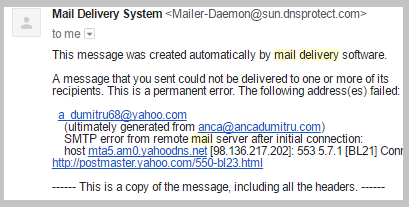
What does that mean?
The email you’re contacting to is not working and is not anymore the webmaster’s email.
How can you avoid this?
Use an email validator to identify which emails are still working.

Thought it’s not 100% accurate (estimate of ~10% inaccuracy), this helps you a lot when pitching hundreds, even more thousands webmasters.
You don’t need to worry if your emails won’t get to their proper places.
80. Analyze Your Competitors Properly
Don’t get links from competitors’ linking pages because you are only following footprints.
Most link builders will argue with this statement—and I’m one of them.
Why?
First, not because you get a link from a page where your competitor has acquired means you are just following the similar footprint – it does if you only target just one competitor.
Second, competitor link building diversifies your link profile. When you get a link from a page discovered through manual search and another link from your competitors’ linking domain, then it helps make your link profile diversified effortlessly.
How to do proper competitor link analysis:
First, identify the goal of your campaign, i.e. trying to get links from a whole domain with or without its subdomain, from a specific prefix (e.g. product category) or from a specific content/page.
Second, plug the page into Ahrefs and use the proper URL type for competitor link analysis (prefix if you want to find linking pages of a, let’s say a category and all pages further down, URL if you want to find linking pages to that specific page alone and domain with or without subdomain – self-explanatory).
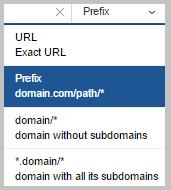
Finally, strategize how you’d be able to get links from pages you discovered. Apply any of the ink building tactics in this guide.
If you want to learn an advanced approach of this competitor link building tactic:
Continue reading:
81. Find Broken Links Using LinkMiner
Link rot is the new friend of every link builder – particularly those who practice broken link building.
It’s very time consuming when you manually find broken links on a resource page.
To ease the process, you can use LinkMiner to semi-automate looking for broken resources.
No wonder many link builders can scale broken link building because of this handy tool.
82. Use Interviews as Guest Posts
Have you interviewed someone and published his/her answers on your blog?
You get visits, shares, and links.
It’s even better if you use that content as a guest post to somebody else.
Win-win situation!
The interviewee gets an exposure.
You build a backlink to your website.
Examples are here below:
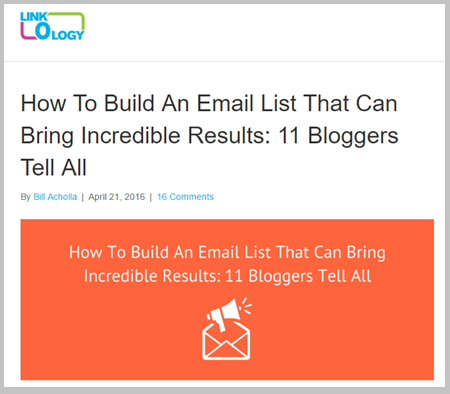
83. Use Videos for Guest Blogging
Writing a guest post for other blogs takes time, especially if you’re trying to make it as top-notch as possible.
But before you start writing, think about other ways you can leverage other content formats aside from text.
For example:
Dan Shure did a video-type guest post with few written texts.

Why this is effective:
- It sets you apart from other pitched emails, where they mostly offer text-based content (it increases your chances of landing a guest post).
- It improves user engagement on the target guest blog.
Try this strategy and see for yourself results.
84. Find Misspelled Domains and Get Links
Accidents happen.
Same goes when people link to your domain or page.
They might link to your site but had misspelled your domain name.
This mostly occurs when you had an established authority in your industry (not recommending this for startups).
Want to try this approach?
First, generate misspelled/typos of your brand name using this tool.
Second, find pages linking to those misspelled domains using Ahrefs Bulk Checker.
Finally, reach out to those webmasters of pages, let them know about their misspelled domains and ask them to update it.
85. Determine Websites That Used Your Old Logos
If your website has gone through a redesign or rebrand, you now have a link building plan to take.
First, use ImageRaider to upload all versions of your logo and the tool will send you a report of all websites not linking back to you.
Second, reach out to people who had been using old logo and ask them if they could update the image with the new version and link to you if they haven’t.
A short and sweet message will do:
Hi [FIRST NAME],
I noticed you’re using [brand]’s logo on this page on your site. We actually went through a rebrand [date/time] and part of our re-brand was a new logo. I’m attaching a new version of our logo, and we’d appreciate it if you could update the page with our new logo.
Thanks!
[your name]
86. Link to Influencer's Content
Reciprocation is one factor to influence someone (source: book).
It simply means that when you ask for something, you need to also provide value to that person.
This makes a big difference with how people will respond to your favor.
Think about it.
If you mentioned and linked to an influencer, expert, or blogger from your blog post, wouldn’t it be an instant value for them?
Next time you promote your blog post,gather all blogs and content you mentioned in your latest post. This will be your warm link prospecting list.
Reach out to them and tell them that you included their content in your latest post.
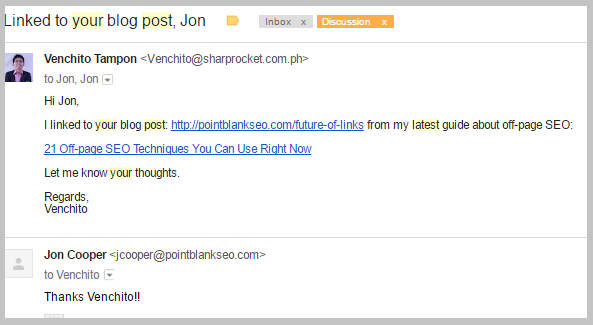
87. Use Related Search Op to Find Blog Prospects
Relevance should be your first considering factor when finding websites to target for links. Google looks at links (source)…
If you are having difficulty seeking for blogs in your industry, try this search operator – related:domain.com

This will give you results of websites thematically relevant to the domain related search operator points out to.
88. Offer Content to be Translated to Other Languages
If you have a website targeting global markets, one of the best ways to acquire more links to your pages is distributing your content to non-English blogs/sites.
Start by tracking in Google Analytics for non-English countries and have a list of them.
Once done,try doing searches for country-specific domains in Google.
You can use the site operator to target domains with country domain expectations. Add any blogs you find to your spreadsheet.
And if your list is not enough,don’t forget non-English sites already linked to one of your pages. Plug your domain to Ahrefs and check out those existing linking pages.
They are likely to be your recurring linkers.
Your next step:
Pitch webmasters and offer if they’d be interested to translate your content to the languages of their websites.
You’ll be amazed with the amount of caliber links you can obtain using this approach.

89. Do 2nd-level Broken Link Building
Linkrot is a huge advantage for many SEOs especially link builders.
Because every day, there are resource/curated/links pages that are getting outdated, where some of them linked to pages that are not available anymore (404).
If you are aiming tons of high-quality backlinks, then that is a good news for you.
Broken link building is, by far, the most beneficial link building tactic for SEOs.
It’s even better if they can go through deeper levels in broken link building.
Links could come from:
- Resource page they’ve found.
- Pages linking to that resource page.
- Resource pages linking to external broken links of that resource page above.
So you actually have two actions in this approach:
Reach out to people who own those links pages in a and b.
Reach out to people who own those resource pages in c.
Getting confused?
Watch the video below to see the step by step process on how to properly execute 2nd-level broken link building:
90. Diversify Your Backlinks
It’s been a huge discussion in the SEO community on what to do and what not to do in link building.
In my experience, it’s not the nature of the law matters, what should be given more importance is the practice of it.
The best way is to diversity your backlinks.
91. Build Alliances
Relationship building is good.
But building alliances is much better.
Imagine if you have a few friends willing to regularly place links to your latest content within their next blog posts (as long as they are relevant), it is a set of recurring links that you can effortlessly acquire almost every month.
However, it takes much time and effort to build these alliances.
The reason:
Those alliances don’t just have their Twitter accounts, but they have their own websites that need some benefits from you as well.
Remember:
Reciprocation.
If you can find a few people that can reciprocate your efforts, it’s an effective link building tool you can leverage in the long run.
92. Aim Links That Will Get Clicks
There are three reasons why people click on a link:
First, it is placed in a position where it could easily be seen.
Second, anchor texts used to describe a link calls users to take an action (to click)
Third, the link is on a high-traffic/authority/trusted website.
The next time you build a link, here’s what you need to do:
First, aim for links with prominent position in the document (the higher, the better).
Second, use highly descriptive and longer strings of anchor texts that tend to be clicked more.
Third, get links from high-authority blogs – there are many ways to do it (see more tips on this page).
93. Use Partial Match and Highly Descriptive Anchor Texts
Google is hitting websites with aggressive anchor texts (exact match) for keywords in backlinks (further reading).
With that, anchor text diversity should be every link builder’s arsenal.
Also:
The way a link is described using anchor texts makes an impact to clicks to links.
Shoot two birds with one stone.
Anchor text diversity helps you make your link profile good in the eyes of Google and helps your brand get more referral visits from linking pages too.
The next time you do your backlink audit, check if you have a diversified anchor texts from your backlink.
If not, start using partial match and highly descriptive anchor texts in links.
94. Execute a Better Internal Linking Strategy
Inbound links help boost rankings of your pages.
But what if you can’t acquire several links in a month, is there another way to boost their search performance?
Yes.
Use a proper internal linking strategy.
Start by identifying pages sitting in page 11 to 30 in search results (use Search Console).
Once you have determined them, find pages where you’ll be adding internal links to (these should be your authority informational pages). Ahrefs can help you with this.
Finally add internal links to your promising ranking content.
95. Find Broken Links On Other Webpages
If you can’t find a broken link on a resource page, that becomes a problem:
You don’t have any broken resource to tell to the webmaster.
Now, the secret to finding value in broken link building campaign:
look at other broken links and pages found on his website.
Here’s how:
Plug your target domain on Ahrefs.
Check broken links tab:
Now, you have some broken resources to tell and to help the webmaster fix them.
96. Expand Your Guest Post Relevance
In my five years’ experience in guest blogging:
Let me admit,it’s hard to penetrate top-notch and mid-level guest blogs in a highly targeted niche – motor company for example.
But here’s the interesting thing:
You can makes all your guest posts relevant regardless of niche:
If you are able to select a content that is both relevant to the blog niche and to your site’s theme, that’s a goldmine.
Take this as an example:
Photography Printing and Cards Company
Parenting: How to Make Fun Memories With Kids
Holiday: How to Take Your Summer to the Next Level – tips to make your days’ worth
Education: How to Upgrade Educational Materials with Photo Cards
Wedding: Top 10 Things You Need to Prepare Before Marriage – one tip should be to hire a professional photographer
It turns out, if you have exhausted all guest blogs in your industry, try to go to shoulder niches and you will never run out of backlink prospects.
97. Use Your Linking Page as a Secondary Resource
Maximizing link juice for links you’ve acquired is important, especially, if you have the luxury of choosing which link to be added to a linking page.
Example:
If you are recommending two pages to be included in a resource page, why not choose the site/page where your link has already been hosted – as your secondary resource?
Win/win for you:
You get link to your target content from that resource page.
You get another link pointing to a resource page where your other previous link has been placed (tiered link building).
98. Turn Your Evergreen Blog Post Into a Page
Authority pages with natural links have very powerful boost in your overall domain authority.
That statement is not debatable, isn’t it?
When you have several evergreen blog post published on your site, they can flow ranking authority to other internal pages.
But you have an evergreen blog post just like that, you can make it more powerful by turning it into a page.
Because pages have higher staying power in search results, it’s much more likely to increase the likelihood of ranking for other more relevant long tail keyphrases.
99. Increase Your Domain Authority With Links
Having the right mindset in search engine optimization, particularly in developing link building campaigns for several clients/sites is very critical to the success of one’s campaign.
In essence, if your website can’t beat its competitors because of its lack of content authority and primarily of low overall domain authority.
Your goal when building links should be directed towards increasing your domain authority first.
So once it goes up, any published content doesn’t require too much of outreach, as they can directly or indirectly can earn links from publishers or content creators finding references through organic search.
100. Add Co-occurences Around Backlinks
Co-occurrences are words that appear around your backlinks, which help Google tell what that page is all about (source from Moz).
For example:
If you do a Google search for the key phrase – backlink analysis, you’ll see that OSE is ranking on the first page.
The page doesn’t include the exact key phrase in its meta-title nor could you see it any section of the page itself.

The advantage of adding co-occurrences around your links is that it helps your pages rank for relevant keywords, whether they are competitive or not, as long as there are mentions to your page/site, linked or not, that occur alongside with keywords tend to have good search volume (just like the example above).
When you have a chance to choose the words around your links, i.e. for guest posting, make sure to add other relevant keywords around your backlinks to improve the linking page’s relevancy factor.
101. Find Linking Sites of Shutdown, Moved and Rebranded Domains
There are websites that shut down, changed their names, moved or simply just rebranded by their owners.
If you find these websites, go and reach out their existing linkers and increase your number of links to your website using this approach.
Here’s the step by step process from Brian Dean of Backlinko on how to execute the exact process:
FURTHER READING:
Link Building For Bands and Musicians
The blogosphere in the music industry is increasing as new bands, independent artists, musicians, and solo songwriters are paving their way into the music scene and building their own personal brands online.
Consumption of music content is no anymore out of reach. Just a few clicks away and anyone can discover new musicians and bands — people can start clamoring if the content (songs) are appealing to its target listeners.
Though there are massive opportunities for upcoming and promising artists and for existing established bands, music creators still don't know how to market their own content online — even more so acquiring additional brand impressions through mentions and music backlinks.
The list of tactics I've shared in this post on how to build links to music Ecommerce websites can also be applied to websites of independent artists, bands, and musicians.
There are only some nuances given that the discovery is more through branded searches (as people know specific names of bands and artists) before they even do some research about it. This is in comparison to the basic process of discovering new entities through informational pages and starts with searching of informational keywords.
Let's look at some sources of content creation tactics and link opportunities for musicians' websites.
CONTENT FOR BRANDED SEARCHES
For musicians — solo artists, composers, and bands, you can maximize searches about your musician profiles. These are searches for any of your content — your album names, song names, lyrics, performance and other event dates, interviews, and a list of band members.
Identify any content gaps — where a keyphrase has a substantial search volume but without any content piece that serves the intended search.
Create new pages, if necessary, to serve the searches' needs, as those visitors who may be searching would have just been getting information from third-party websites.
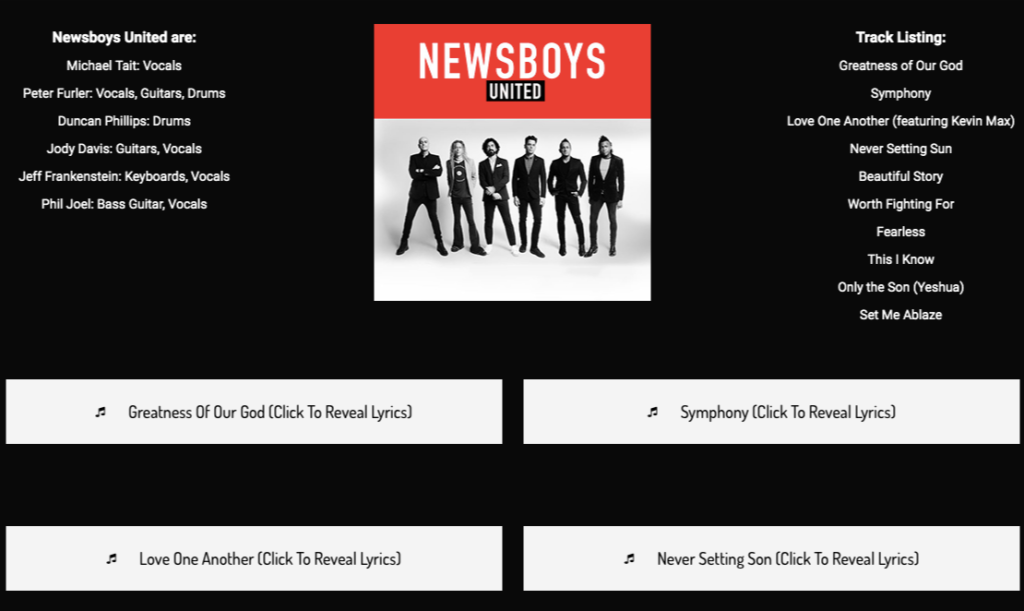
Maximizing this exact opportunity is a great way of not only getting more organic traffic but nurture your visitors into potential loyal listeners through some series of information-capturing funnels.
LINK RECLAMATION
Whether the client is famous or not, people who are working behind marketing musicians' websites should start monitoring any mentions of the brand. It doesn't just help in maintaining positive sentiments about the personality, but also in ensuring that there are appropriate links deserved those profile mentions.
The idea is to discover blogs and websites where you and your content have been mentioned, but with no attribution of links.
Create a list of possible mentions of you. Obviously, band or musicians name, titles of albums you've released or plan to release, and song titles — these are things you should start monitoring as often as possible.
Go beyond those immediately apparent searches. You can list down any misspellings of your brand name, one or two famous lines of your songs (chorus maybe), and tour titles (different from song/album titles).
Take a look at this resource on link reclamation.
PRODUCE AND PROMOTE VIDEO CONTENT
Though fans are commonly uploading their own versions of you or your band's live performance events, the idea of capturing it yourself and publishing it on your site and video channels helps you add more solid content assets to your site and to other video platforms besides Youtube.
In addition to the demands for videos of live performances, you can search for any common searches about your brand using Ahrefs' Youtube search. By using the tool, for example, it can help you discover songs that get high demand in searches for lyrics.
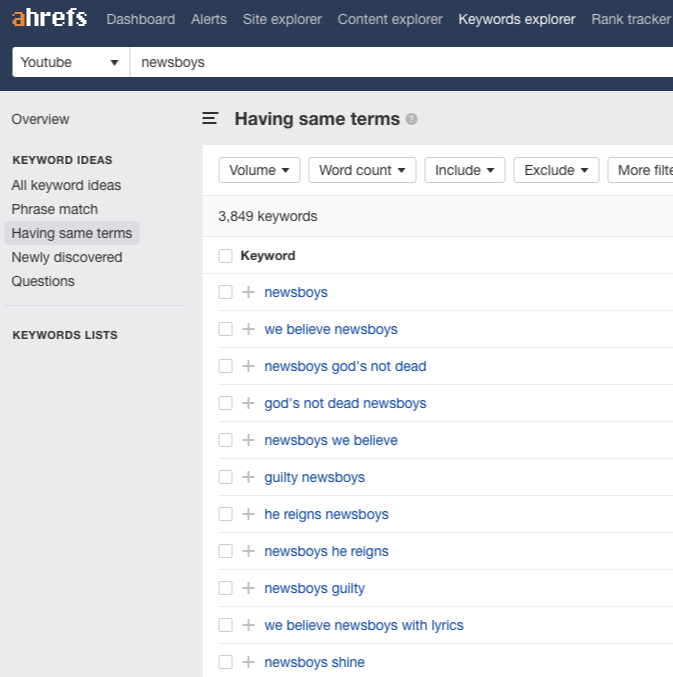
People want to sing songs while looking at the lyrics. Publishing lyric versions of your songs is a must nowadays - helping you gain an additional following from that type of avid listener.
Additionally, there are listeners who knew how to sing the song but would want to find the exact title of it. There may be a lot of search volume for a single song. Single lines in chorus that are popular can be served with a specific section of the page (or could be targeted in other lyrics pages).
Another search suggestion (or already a search option) is popular live performances or any associations you or your brand has with. Go over and check in Ahrefs' Keyword Explorer Youtube filter to find these relevant searches and upcoming/suggested search phrases.
PUBLISH EXCLUSIVE CONTENT
You may also create your own exclusive content and not just rely on what Youtube and other search channels suggest that you satisfy with online assets.
Here are some suggestions or ideas for your music exclusive content:
- Clips of stories and inspiration about how and why songs were written
- An explanation about the name of the brand or album you or your brand has released or is releasing
- Images of where your brand has originally written certain songs
- Informal interviews of your brand before, or after the concert or performance
GET LISTED IN WIKIPEDIA
If you (musician) or your brand is notable enough to get into Wikipedia, start the process of getting it listed.
You can check out this slide page on how to create a Wikipedia page for your business.
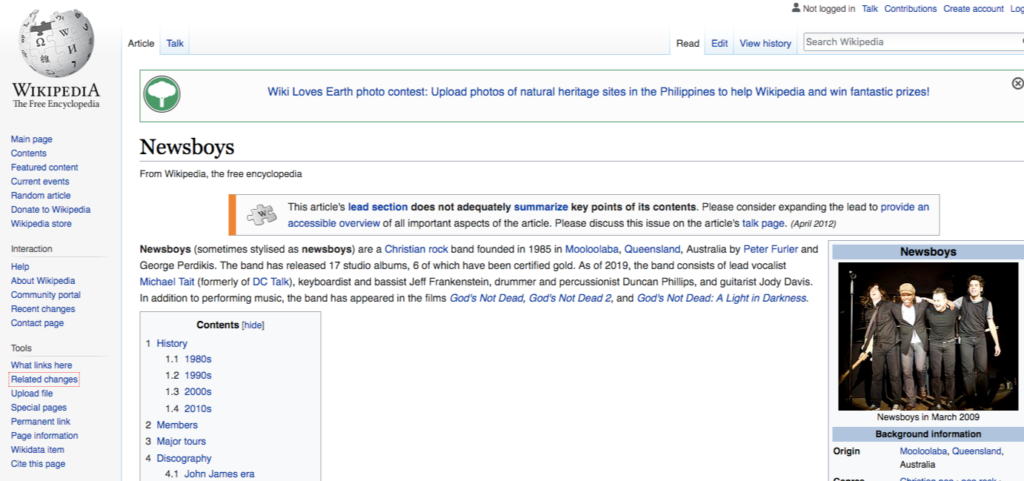
You can also hire an experienced Wikipedia writer in People Per Hour so you can semi-automate the process of getting you or your band listed in there.
ACQUIRE RESOURCE LINKS FROM ARTISTS OR "GENRE" PAGES
Resource link building is also applicable to websites of artists and bands.
Similar to other resource link approach, one has to know what types of topics get linked the most.
For example, in the music space, you'll find a lot of artists and music links pages. There are even resource pages that link out to specific genres of artist groups that can likely give a boost in relevant traffic to your site.
Artist links
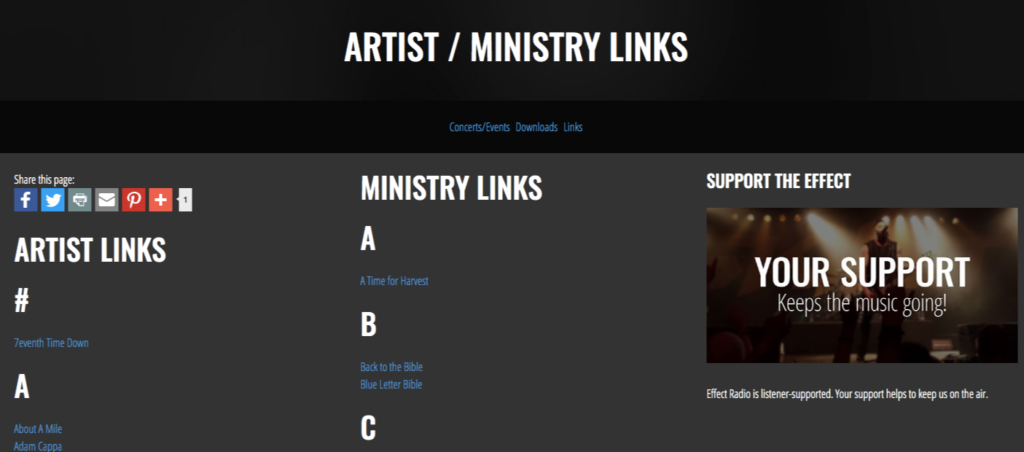
Christian group links

Go over these links pages through using link prospecting phrases. Find them either on Google and/or competitor link analysis using tools like Ahrefs.
If you know an artist group with the same genre as yours, plug their website's domain in Ahrefs and see which pages they're getting links from.
If you want a solid process for this particular link building strategy, you can read this guide on broken link building.
BUILD "BANDS IN TOWN" ANNOUNCEMENTS FROM EDU SITES
Artist groups who perform in school events can take advantage of mentions and links from announcement sections of edu blogs.
If the artist group has a specific clamor from students to perform, edu student writers can feature their profiles on the article. "Bands in town" news-type articles are ones commonly being posted in those blogs.
OBTAIN LINKS FROM EVENT LISTING SITES
It is best to start creating pages for individual shows of your group. This approach will allow you to get official ticket links from event organizers who have their own pages dedicated for future event performances, as well as their own network of event listing sites for ticket purposes.
LOW HANGING FRUITS IN MUSIC DISTRIBUTION SITES AND FAN SITES
There are low-hanging fruits for link opportunities you can discover simply from music distribution and even fan websites.
Popular bands and artist groups normally have their own fan club sites. There are likely some demands for membership — which may even have the interest to start their own fan sites.
MusicBrainz, a music listing site, music distributions sites, and fans club sites are types of opportunities you can continuously monitor as relevant link targets.
GROOVES IN LINK BUILDING
It's natural that when you're starting to promote your website, you don't have many link opportunities at hand. But as you go over and search for how and where your competitors are getting engagements and relevant traffic from, you'll see all sorts of different types eager to give links straight to your most important pages.
Find these both low-hanging fruits and hard-to-replicate contextual links. Then build momentum along the way.
How to Use SEMRush SEO Writing Assistant for Content Optimization
What is SEMRush SEO Writing Assistant?
SEMRush SEO Writing Assistant is a smart extension for everyday use of content specialists. It offers recommendations straight from what it calls, 'SEO Content Template' (SCT). It provides recommendations and analysis based on the top 10 pages ranking for a given keyword.
How Does SEMRush SEO Writing Assistant Work?
Many content writers are confused as to who they should serve: search engines or users.
With many debates, the best answer is both.
And you can actually do so. With SEMRush SEO Writing Assistant, you can have the ability to check the SEO potential of a blog post — meaning how well it'll rank for your target keyword.
While maintaining the quality of the piece - conciseness, flow, context, you also want to make sure it includes keywords and related terms for better search performance. This would allow your page to serve both search engines and its users.
SEMRush SEO Writing Assistant is a reliable and handy tool. It’s very useful as you don't have to sign in to your SEMRush account every time you want to use it.
Features, Details, and Pricing
The main question for every content creator trying a content product is, "what does the tool gives me?".
Here are the features of SEMRush SEO Writing Assistant:
FEATURES AND DETAILS
Overall score
This shows you the general quality of an article. It is calculated based on four metrics: readability, SEO, tone of voice, and originality.
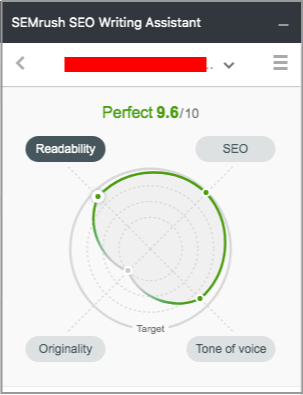
Readability
Readability is the ease with which a reader understands your text (readability score). It covers four things:
- Plain language. This refers to how the text corresponds to the basic reading level of a person (reading ease score).
- Target words. This is based on the average words used by the top-ranking page for the keyword.
- Title issues. Is your title present in the most important places of your content?
- Content Issues. Do you have long paragraphs that need to be cut? Do any hard-to-read sentences need to be rewritten?
SEO
The SEO section, only covers keywords, alt attributes of images, link issues, and title issues.
- Target keywords. The tool will let you know if you're using keywords at least once in the entire content. This is SEO 101, yet most bloggers don't apply this.
- Recommended keywords. Enrich your content by adding semantically-related keywords, primarily based on the top 10 ranking pages.
- Alt attribute issues. Do your images have alt-attributes?
- Link issues. Do you have external links in your content? Are these links functioning or broken?
- Title issues. Have you used your target keywords?
Tone of voice
The tone of voice is how you say your message, including the choice of words, their order, rhythm, and pace. The tone of voice of your content could be very casual, very formal, or anything in between
Consistency in a tone of voice measures how well you did maintain the tone of voice across your content. SEMRush SWA gives you a list of the most casual sentences as well as the most formal sentences.
Originality
This feature gives you the total percentage and number of copied words from identified content sources. The originality check is based on the Copyleaks Plagiarism Checker.
PRICING
SEO Writing Assistant tool is already included in the SEMRush toolkit. However, based on the plan that you purchase, you are only allowed a certain number of users for the features.
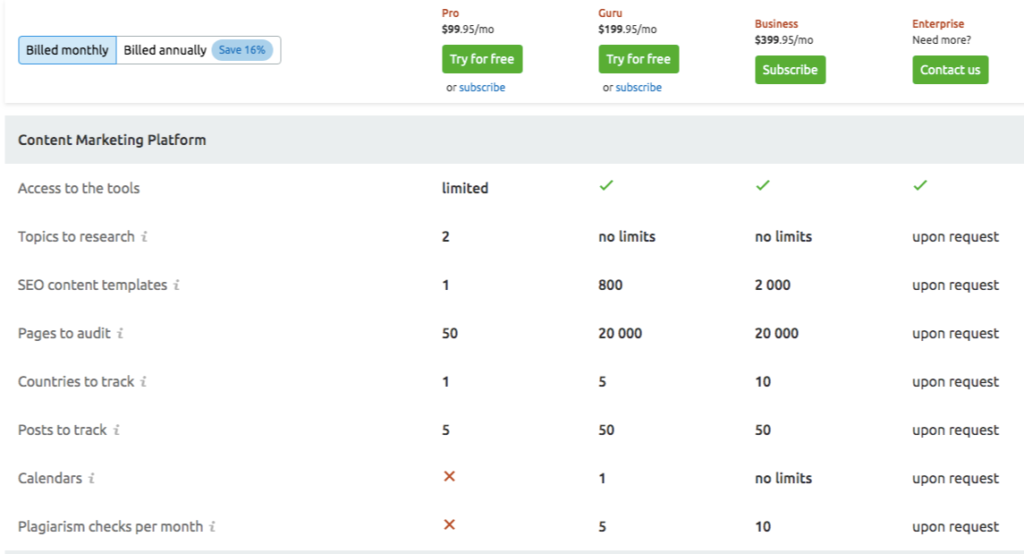
For example, if you are using a Guru account, you can use 800 SEO content templates every month. While if it's a PRO account, you can only have 1 content template.
Meanwhile, plagiarism checks are not allowed for a PRO account, but for Guru subscribers, you can have 5 plagiarism checks every month.
How To Use SEMRush SEO Writing Assistant?
There are two ways you can use SEMRush SEO Writing Assistant: adding a Google Docs Add-on or installing SEMRush SWA WordPress plugin.
Google Docs Add-on
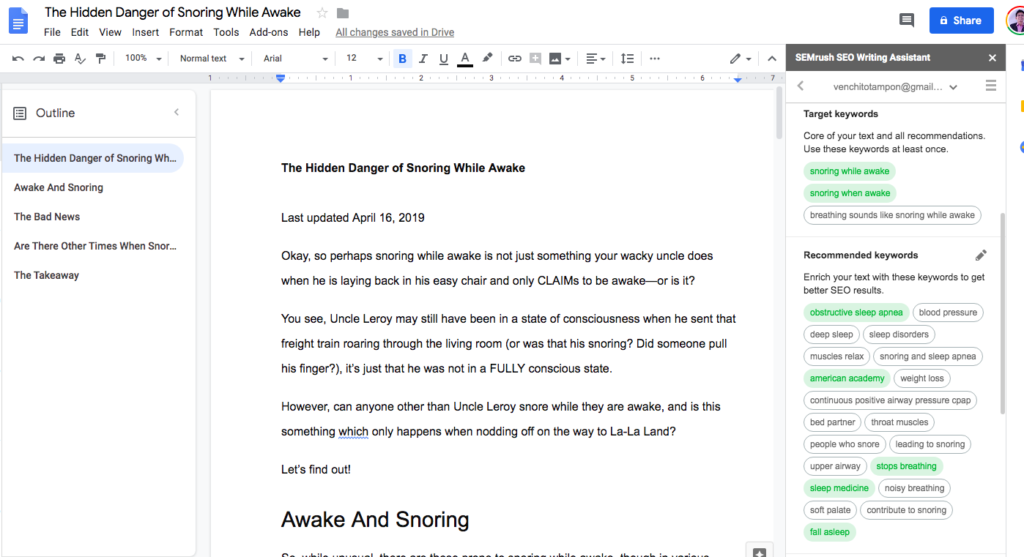
Install the SEMRush SEO Writing Assistant as your Chrome Add-on.
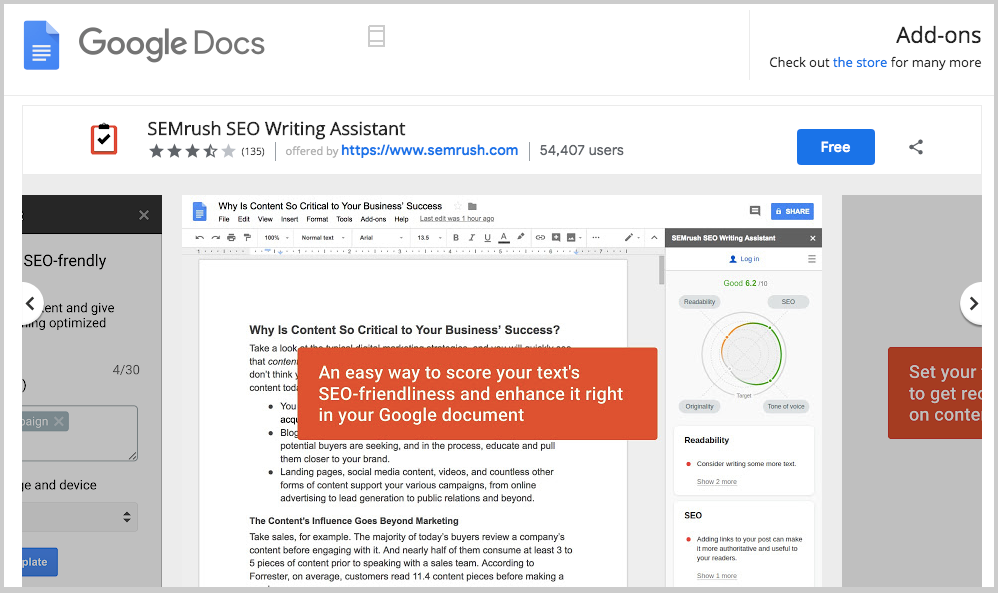
Once you install it, click Add-ons in your Google document, then choose SEMRush SEO Writing Assistant.
You have to sign in to your SEMRush Account to get started with the tool.
WordPress Plugin
You can download this Wordpress plugin and upload it to your plugin files.
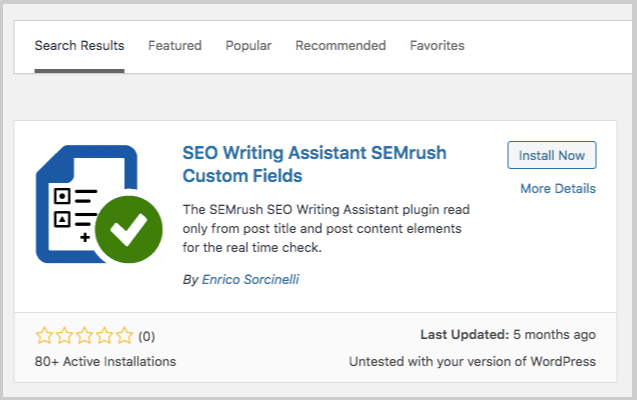
Another method is to simply search the plugin directory for the SEMRush SEO Writing Assistant plugin, and click install.
Below your content draft, you'll see a section for SEMRush SEO Writing Assistant.
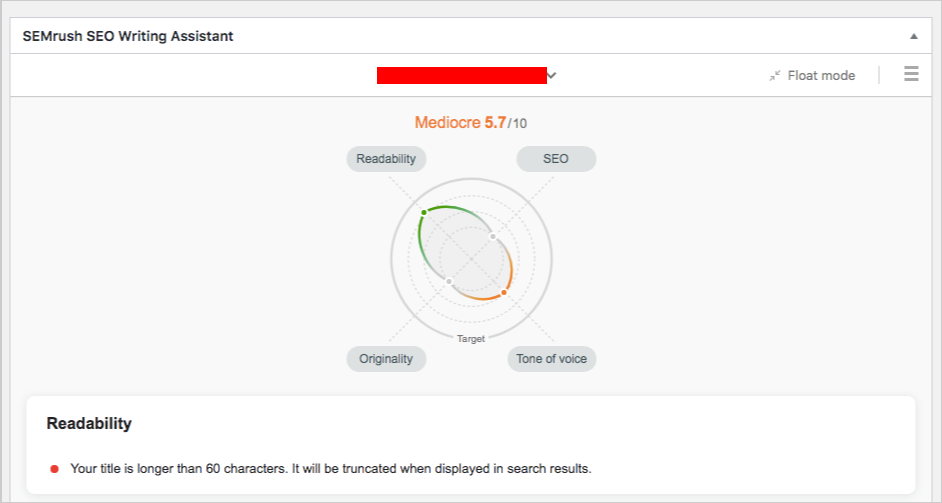
I highly recommend you use the Float mode. This gives you the freedom to see both your content draft and SEMRush SWA on the right side of your WordPress screen.
SEMRush SEO Writing Assistant in Action
The basic content optimization based for most content creators is adding target keywords in the title of the page, header tags, and including those keywords as often as it can be (contextually) in the content.
Content optimization doesn't stop there. With Google being more and more intelligent in understanding the context of the page, you have to optimize your content for LSI keywords.
LSI (Latent Semantic Indexing) Keywords are conceptually related terms that search engines use to deeply understand the content on a webpage. (source: Backlinko)
SEMRush SWA does the legwork of giving you what related industry terms to add to your content. You can go straight edit your WordPress draft, and contextually as it fits, incorporate fitted ones.

You also want to make sure entities that will give more context to your content page are being added. SEMRush SWA doesn't show you all, but in my own testing, it gives you a few entities (names, personalities, brands, institutions, etc..) that could add context to your page. Those recommended keywords show semantic relevance to your page.
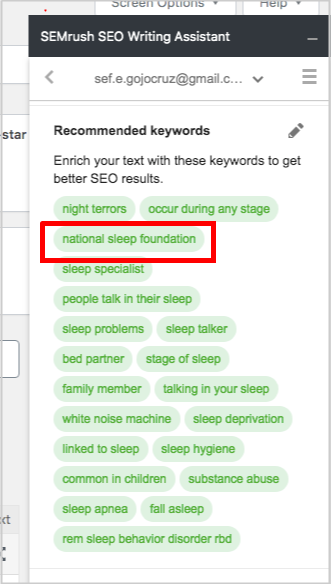
The length of paragraphs matters in search rankings. There is an average word count of rankings pages for your target keyword you can hit with your content — ensuring you have a chance to compete for the top ranking.
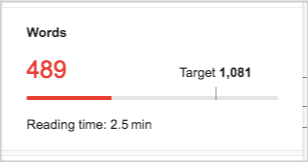
Readability is important for users. You don't have to make your content complex to consume. Depending on your users' reading level, you want to make your content as readable as possible to general, yet targeted audiences.
Splitting long paragraphs, rewriting hard-to-read sentences, and simplifying complex words to make the content readable is highly recommended.
Lastly, what I liked about SEMRush SWA is its SCT or SEO Content Template, giving you an extended list of recommendations to further optimize your content.
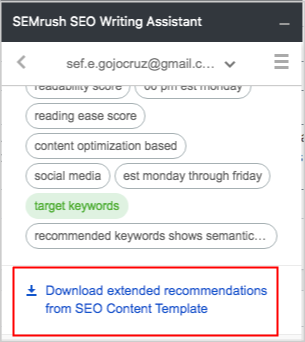
You may also schedule content optimization in your calendar through the SEMRush platform. Rename your activity title and choose the date and time you want to focus on optimizing that certain content piece.
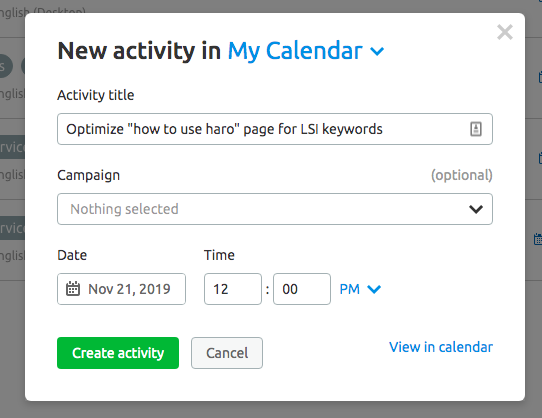
Further Reading:
- SEO Writing Assistant
- How to Create SEO Friendly Content with SEMRush
- How to Use SEMRush For Content Marketing
- Content Marketing Ideas and Strategies For Small Businesses
- Content Gap Analysis
Key Takeaways:
While there are many initiatives to execute in every SEO campaign, one you shouldn't ignore is content optimization.
Optimizing existing content assets is just as important as publishing new pages. SEMRush SWA can be a handy and useful tool to speed up recommendations for content optimization.
Link Building For Music eCommerce Websites
The music industry is an exciting yet challenging field for link builders and SEO professionals, as it covers wide facets of approaches to link building phases such as link prospecting and outreach.
If you can execute strategies well, you can expect results just like this (see image below):
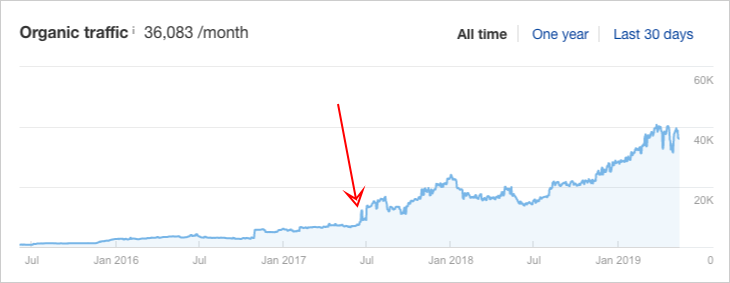
In mid-2017, we started building links to this eCommerce client that sells violins and cellos. As of today, the site is ranking for commercial keywords such as "violin" and "cello".
In this post, we'll cover how to build links specifically to music eCommerce websites (we'll have some more link building discussions in the next few weeks for musicians and bands per se).
For now, we'll have a closer look at online stores that produce and sell musical instruments, music sheets and music courses.
Let's go straight to some available link building tactics for online music stores.
LEVERAGE WHERE TO BUY PAGES
Whether you are a retailer, dealer or any merchant of musical instruments, you can't simply overlook link opportunities from "where to buy" pages.
"Where to buy" pages are specific pages for vendors, resellers, retailers, suppliers of a specific or multiple product line or services.
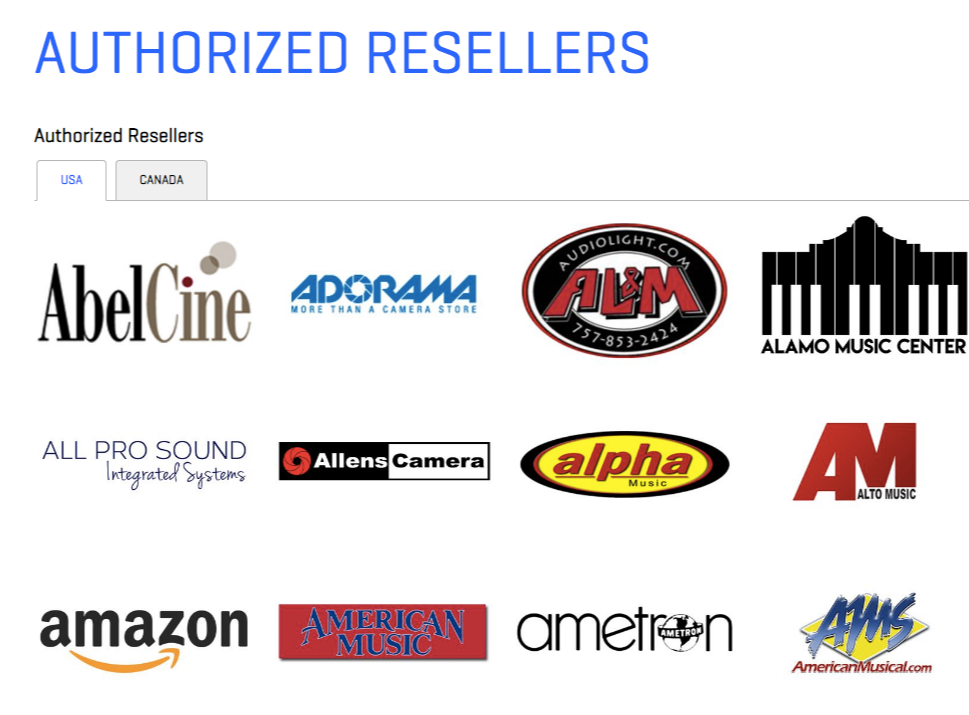
They are dedicated for customers and potential customers looking for a specific store location of the product/service they wanted to purchase.
One approach that you can make to find these "where to buy" pages is to get an inventory of manufacturers or suppliers (If you are a retailer). Check if each product or product line has its own "where to buy" or store locator page.
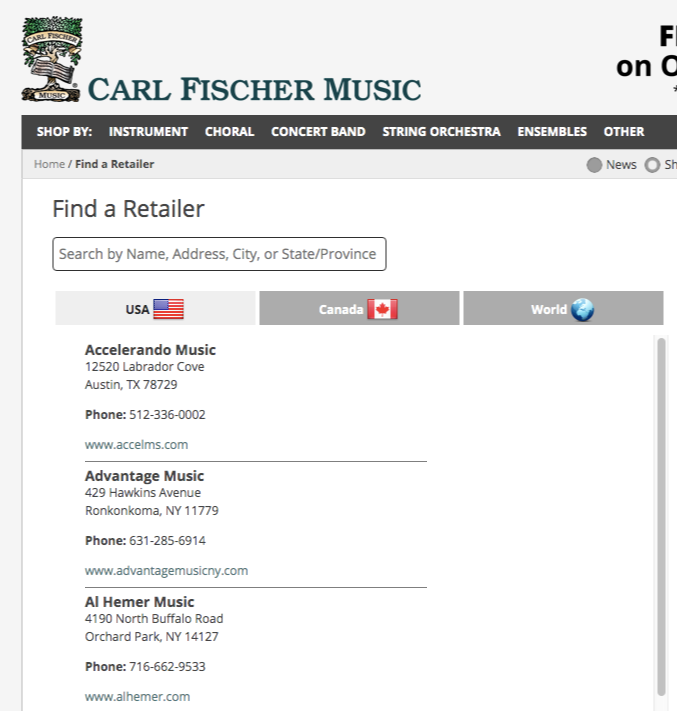
The next approach to discover this eCommerce link opportunity is to do Google searches for any of the following phrases (take note that your search would depend on what type of vendor are you):
- "store locator" "PRODUCTNAME"
- "authorized retailers" "PRODUCTNAME"
- inurl:links "suppliers" "INDUSTRY"
- inurl:dealers "INDUSTRY"
- inurl:links "merchant" "PRODUCTNAME"
- inurl:links "merchant" "INDUSTRY"
- "where to buy" 'PRODUCTNAME"
- "where to purchase" "PRODUCTNAME"
- inurl:"where to buy" "PRODUCTNAME"
The next phase of link building is to reach out to contacts handling these "where to buy" pages. Conversion rates for this type of outreach depend on the legitimacy of your partnership (i.e. if you are an accredited vendor of the product).
Use the corporate email address when pitching, as it gives you the leverage of identification with a specific product line or service. A corporate email sticks more than a Gmail account in a link request outreach campaign for list pages of commercial links.
DISCOVER .edu MUSIC LINKS PAGES
One of the challenges of link builders and SEOs is building links to commercial pages.
For music eCommerce sites, there is a strategic way to do this. You can actually get high-quality contextual links by targeting your site's category and product pages for links from .edu commercial-like links/resource pages.
You can start by prospecting for backlink opportunities using any of these key phrases:
- site:.edu "MUSICALINSTRUMENT" "links"
- site:.edu "music links"
- site:.edu inurl:libguides "music links"
- site:.edu "music library"
- site:.edu "purchase supplies"
ACQUIRE ASSISTED CONVERSION IN FORUMS
Forum link building is not dead. If it's executed properly, it can become one of the strongest lead generation sources of your site.
The reality in customer behavior is that they tend to conduct initial research before making purchasing decisions. So, if you're selling musical instruments and other related products (like chord charts and tutorial courses), you may look for any music-specific forums with ongoing threads on musical instruments.
Here are examples of forum threads on purchasing violin strings:

You can prospect by yourself or with the help of a virtual assistant thread discussions leveled on the decision stage of customers (e.g. want to purchase).
Here are some useful keyphrases that can get you started with niche forum prospecting:
- inurl:forum "case for violin"
- inurl:thread "case for violin"
- inurl:discussion "case for violin"
- inurl:forum "bass repair" needed
- inurl:thread "bass repair" needed
- inurl:discussion "bass repair" needed
- inurl:forum "best rosins"
- inurl:thread "best rosins"
- inurl:discussion "best rosins"
- inurl:forum "where to buy strings" "LOCATION"
- inurl:thread "where to buy strings" "LOCATION"
- inurl:discussion "where to buy strings" "LOCATION"
- inurl:forum "looking for" "MUSICALINSTRUMENT"
- inurl:thread "looking for" "MUSICALINSTRUMENT"
- inurl:discussion "looking for" "MUSICALINSTRUMENT"
- inurl:forum "in search of" "MUSICALINSTRUMENT"
- inurl:thread "in search of" "MUSICALINSTRUMENT"
- inurl:discussion "in search of" "MUSICALINSTRUMENT"
- inurl:forum "recommendations" "MUSICALINSTRUMENT"
- inurl:thread "recommendations" "MUSICALINSTRUMENT"
- inurl:discussion "recommendations" "MUSICALINSTRUMENT"
Make variations with your keyphrases, i.e. for the query, "inurl:discussion "bass repair" needed, you can change bass repair to violin or cello repair (if you're offering repairs for violins).
GET CONTEXTUAL LINKS FROM RESOURCE PAGES FOR MUSIC CONTENT ASSETS
We went over discussing getting links from links/resource pages for money pages.
Now, let's go over to some types of music resource pages where your content assets can earn organic links from.
If your eCommerce site has a blog section for publishing extremely good content assets that can be well received by links pages - like free music sheet downloads (if this is not one of your online products), you can find any related links pages.
Here is one example below of a resource page for bassists that links out to music sheets, guides about history of bass, learning materials for school teachers — to name a few.
BUILD INITIAL LINKS IN COUPON SITES
Any starting eCommerce sites in any space need a couple of links to get the ball rolling. And these links aren't the ones that are quickly automated, but you should find your initial set of links that are still relevant to what your business can offer.
For example, if you provide coupon codes for customers on a regular basis, you can submit your coupon code page that are likely to give links to your money (or money coupon pages, which you can internally link to its related offer page).
BE HARMONIOUS IN LINK BUILDING
There are a lot of facets in the link acquisition process - they may come as difficult in the execution process, but well-worth if you have to find the right opportunities in the market.
In the music industry, it's pretty much about understanding where the potential customers are engaging. Getting the most out of the links, not solely for rankings, gives you the ability to hit both top-line and bottom-line goals.
Link Building For Travel Booking Companies
In a study conducted by Booking, a travel fare aggregator website, they found out that 80% of their customers prefer to self-serve in order to get the information they need.
This gives rise to the continuous establishment of tour, vacation management, and travel booking companies.
Aligned with this reality, there are a lot of marketing agencies that cater solely to brands in the travel and accommodation industry.
More often than not, they have core strategies for initiating research specific to the market, investing in technologies and platforms to adapt to travel trends, and executing both content and technical initiatives for more travel customer engagement.
However, there is still room for conversation when it comes to doing proper search engine optimization especially in doing link building for travel booking companies.
Let's discuss some of the best link building practices for this industry.
LINKABLE CONTENT STRATEGY
You can't create any content in the travel industry. There has to be a demand in the link market for the topic you'll be discussing. It also requires local relevance to gain more value in terms of link juice and its authority for rankings.
To give you an example, there are a lot of historical attractions in your location that may need some content if you haven't discovered it later.
Here's an example of simple content about "Statue of Liberty Facts & History".

If you're not familiar with what places in your city you can be proud of, you can search for "attraction" "YOUR CITY" on Google. A quick search like that would give you attraction topic ideas that you might consider creating as content pieces.
While creating your local attraction-like content asset, you may prospect for resource pages who might be interested to link to your page — primarily, these are webpages that list down references and resources on history (see elementary pages below as an example), library pages from Edu sites (that can get you edu backlinks) and local webpages on travel.

There are hundreds of this type of page and may require some due diligence in prospecting to find a majority of them.
You may check out these guides on using link prospector to find thousands of backlink opportunities in minutes and this cheat sheet on search engine queries.
SEASONAL LINK BUILDING CAMPAIGNS
We've covered seasonal link building campaigns before. In a variety of ways, these initiatives get more often than not links if executed properly.
The hype of traffic and links to seasonal content assets must be properly taken care of to sustain performance, and not just conduct it as a one-off campaign.
For tour companies, one way to maximize link performance is to start ranking for seasonal events in a city.
By developing content pieces in advance (through proper planning) any brand in the travel space can integrate seasonal events to the theme of the blog. 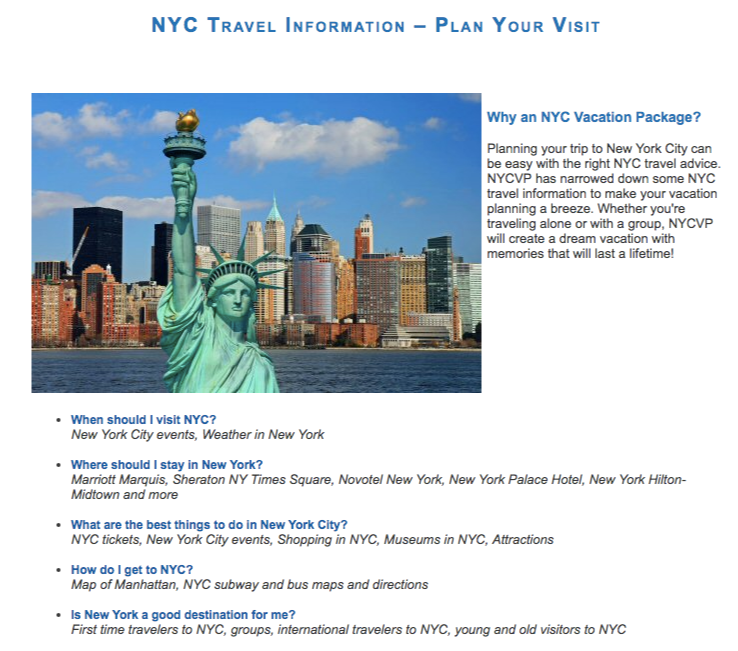
For holidays like Mother's Day, Easter, and Valentine's Day, bloggers on the average plan ahead their editorial schedule — as early as 38 days in advance.
Timing is critical here if you're producing content, and it's quite challenging to land placement from those blog publishers.
For a seasonal campaign just like this, it takes planning to put everything into account. Improving relationships, pitching emails, and getting a sense of the average days/weeks in advance of content creators publish are all critical to the success of a link-based seasonal content campaign.
"THINGS TO DO", TRAVEL GUIDES, AND EVENT BLOGS
You don't have to reinvent the wheels in content creation. There are blog ideas that have been tested to provide value from time to time.
One example is "things to do" content — these are basically simple travel guides for first-time travelers and tourists in a specific location. You may also be seasonal in approach if you add a monthly series for that (e.g. things to do in New York in November) - depending on how frequent changes in local activities are.
In addition, there is still much demand for travel guides, whether it is for newbies, intermediate, or veteran travel enthusiasts. You can't go wrong with creating last-minute travel guides.
To stand out among travel guides out there, you need to make sure you're putting more comprehensive information on the topic than what other guides can provide — e.g. give them a quick hint list on top.
For busy people, it's well worth their time to read a very quick list of any travel information. You've got to understand how your target audience consumes content in your space. It's a good strategy to produce on-top list travel info at the top of your page (giving your visitors quick answers to their questions).
LAST-MINUTE TRAVEL GUIDE
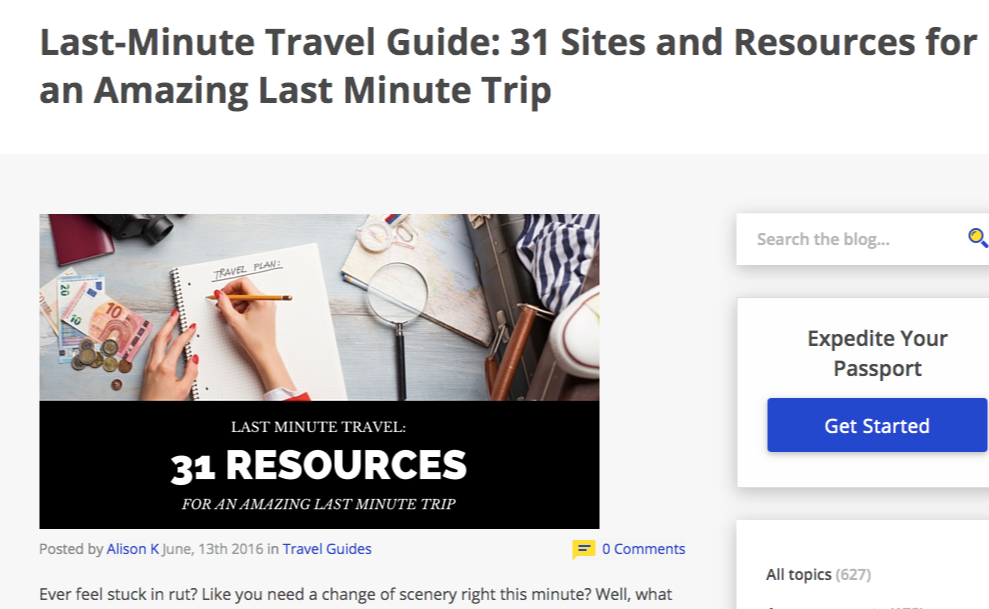
VISITING PLACE CONTENT
LOCAL AND NICHE-SPECIFIC RESOURCE PAGE LINK BUILDING
Links pages are low-hanging fruits in every industry. Given that these resource pages have the inherent intention of giving out links, it would be easy to pitch an offering that matches their actions (to link out).
While that may be easy to say, it requires content assets that give value to their targeted audience to be able to deserve organic links from those pages.
Either you promote a travel resource you've just created or get straight to share what your brand does (for links pages that link out to money/commercial pages).
You can check out this guide on broken link building and finding more links pages to get an overview execution of the link acquisition process.
NON-COMPETING LINKS PAGES OUTREACH
Tour brands ignore their add-on offering as a way to increase contextual links for their site's backlink profile.
It would be an overlooked opportunity if that's the case, given that there are readily available link prospects that can point out to travel offering pages.
For example, if your tour company offers services like car rental service, you can search for links pages that list down brands that offer such services. There are lots of pages if you could diligently discover them.
LINKS THAT TRAVEL FROM PAGES THROUGH PAGES
There are a lot of link opportunities that are available out there in the travel space. You've just got to make sure you put the effort into finding ones that can drive referral traffic to your pages. Those acquired contextual links with traffic in mind drive more value than generic directory links. Find links that travel from pages through pages.
LinkBaiting: Creating Content That Attracts Links
What is linkbait?
Linkbait is a value-driven content that attracts links organically and through manual outreach methods.
In other posts like in Kaiserthesage, linkbait is almost synonymous with the term, "link magnet", which refers to a website that has created a credible reputation by building highly-exceptional content and strong relationships with industry publishers who became sources of organic links.
The only difference between linkbait and link magnet is that linkbait refers to the page that attracts links, while link magnet is about the website in general that earns links.
Both of which are essential to understand, as one is depending on the other.
LINKBAIT AND LINK MAGNET COMBINED
Apparently, the approach to linkbaiting is by starting with one page first. If you can develop a highly-valuable content once, it is possible to get it done multiple times.
However, take note that not because you've done it one time, you could produce the same or better results for your next content pieces.
When people say content is king and just produces great content, they really mean producing great content consistently.
Consistency is the key. If you are able to produce one linkbait and do it consistently on topics related to your brand, it is possible to create an authority website that attracts authority links.
Never assume you'll get your overall website attractive if you're only aiming for one big shot.
What REALLY makes a good linkbait?
If you have gone through several articles on linkbaiting, you know what these bloggers say is almost true. In fact, these are characteristics of a good linkbait. Let me give you some of what I've got.
- Your content offers utility to its target audience.
- Your content invokes some kind of emotions that are enough for people to share it.
- Your content is visually-appealing (should be on top of the list for every content creator).
- Your content may have newsworthy elements (if it's timely, it gets viral quickly).
If you take a deep look, the above elements plus other worthy things that are not listed here can be summed up into four things: value, context, timeliness, and relationships.
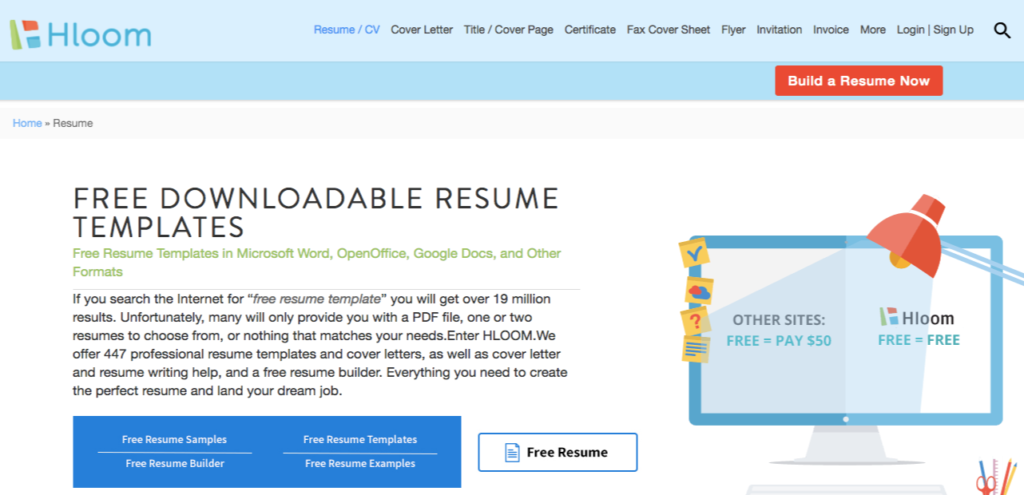
By knowing how each of these elements works and applying them to your own content piece, you'll be able to transform your page into a good linkbait.
1. Value & Usability
The value of your content differs from one visitor to another visitor who sees it. Some people may see the value of content by how fast people could consume it; for others, it means how comprehensive and timely text in content to its user.
In understanding value and usability, it's critically important to align your purpose (the reason why you've created the content in the first place) while doing the piece at hand.
For example, if you have published content that lists down the "best X tools in INDUSTRY". The number of items in the list may not necessarily bring the value: who wants 200 tools if people are only looking for what's best that they could use immediately to their business?".

The form of this type of content may be shorter than the usual (12, 10, or 6) among hundreds or thousands of tools. But the best part that will add significant value is what makes these industry tools best. What differentiates these tools from the others? Their pros, as well as cons, are likely to be complemented by another tool.
That's a pretty good example. If you're after content that brings value, go back to the purpose of the content. Here are some questions you can ponder:
- How could I make the content piece easy to digest (read, listen, watch, scroll, etc..)?
- How could I format a page that will give the best user experience possible?
- Is there any information that I need to strip out to make the content succinct as possible?
- Are there any content elements, i.e. video, graphic, gif, that will emphasize human emotions and/or make the content more comprehensive than other similar assets?
B. Context & Differentiation
Context is vital. Who is the specific audience your audience caters to? What are their needs and how you can fulfill them? What to address and what not? What to offer and not to offer?
These all things require critical thinking - understanding the right timing and context.
Inclusive of that is having a game plan to differentiate your content asset from other pieces of your competitors.
You can be the FIRST or be the BEST.
When you've done good research, it doesn't take you longer to see if you're the first one to cover the topic, or even realistically, the first one to cover a unique angle of the topic.
Kaiserthesage has done extremely well providing the first of the guides about link building. Because of this, it doesn't make him a decade to build authority and trust in the search marketing space.
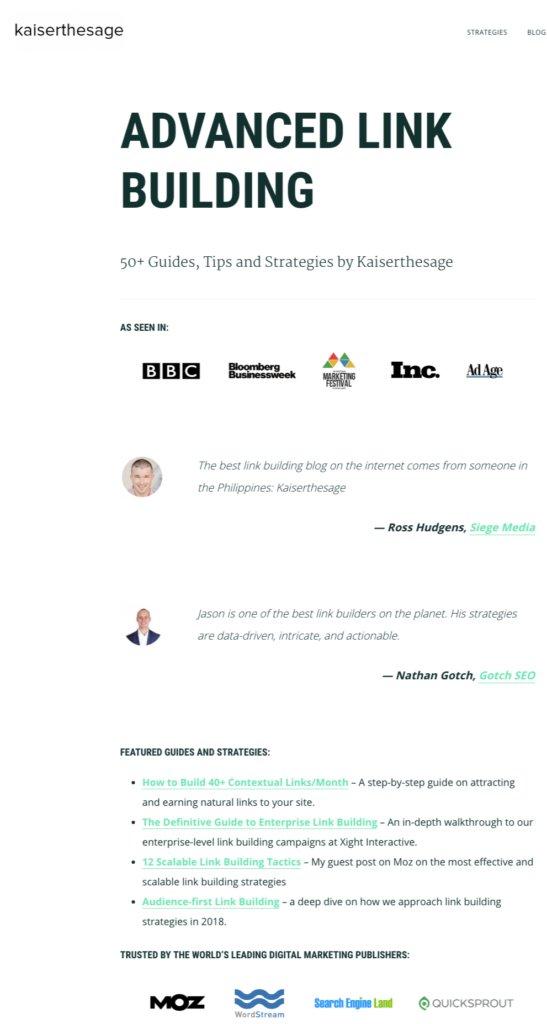
Meanwhile, you may not be the first to address a specific topic with your content. However, you can create the best of it -the most excellent in terms of form, style, user experience, delivery, and other content elements that will allow you to provide the best possible solution to the serious need of your audience.
You can add unexpected hooks that your audience would find uniquely valuable. So it's critically important to go through similar content assets and see what they are missing out on, which you can fill in your content in order to make it a better web asset than theirs.
C. Timeliness
You will appreciate more timeliness as we go through the promotional part of linkbait. But the good thing with first understanding how valuable its role is in the linkbait creation process is that it allows you to set expectations in its actual doing and delivery.

If the content will be consumed by the audience on a certain day or week (holidays, annual celebrations, etc..), it would be wise to set an advanced preparation of the content as early as possible.
If the content is seasonal, make sure the content is published days or weeks before its promotion. There are chances when you have to revamp or change the formatting so to make it fully resonate with its intended visitors.
D. Relationships
Why is there a need to look into relationships and see a list of interested people when the content is still going through in its creation process?
The answer is very simple--to validate if there is an existing audience ready to consume and amplify the content once it is published.
Identify existing linkers in your industry by checking who has linked to your competitor's similar content. This activity is attainable when you use Ahrefs and Similar Prospecting Tool by SkyRocket.
You may add to your list all past linkers to your content. If you offer relatively topical content, they would find it again interesting to cite in their own works.
What does a GOOD linkbait produce? How to measure?
- Value of links
- Relationships
Let's start with value.
A. VALUE OF LINKS
All bloggers discuss the value in content marketing, but, if you think deeply, value is very subjective. A content piece that's valuable for me may not be valuable for you. Each visitor has his own criteria for identifying how valuable a page is.
In order for you to understand the value itself, you need to go directly to your audience. The question you need to answer is, "how are they consuming, if they are, or perceiving my content?"
The first important point of understanding the value of content is through the lens of its audience.
The content length, depth, word count, number of images, and other elements within the content are all important, but these don't say much until the market sees the finished product.
A good indicator and somehow predictor of the future success of a linkbait (not a guarantee, but a good place to start with) is the backlink history of successful linkbaits in your industry.
You may not be able to know entirely how people perceive these pieces, but if you go through some quantifiable values, you can measure your content piece's linkbaitiness.
These values include the current quantity of linking pages (how many referring domains are linking to the page), speed (how fast does this page earns or get these links), growth (how much links are earned this month compared to its previous period), and traffic value (estimated ROI value of each link).
Let's first look at the value by linking pages.
MEASURE BY # OF LINKING PAGES
The number of referring domains linking to a content piece can show a lot of things. First, if the audience targeted by the content is a linkable audience - meaning these are audiences who have the behavior of citing, referencing, and linking to highly valued content from their works. These are people who are not just consumers but actual contributors through their linking behaviors.
If the audience is linkable and your other similar content assets (from content competitors) have gained hundreds of links, it says two things: either you've got some work to do and improve in your content or you haven't prospect enough link opportunities.
Grab your content's URL and enter that in Ahrefs' Site Explorer.

You can also benchmark the success of your linking page with your content competitors. Check the percentage you've achieved over their current number of links (e.g. your 10 acquired unique links over their 250 unique referring domains).
MEASURE BY LINK SPEED AND LINK GROWTH
Aside from the number of linking pages you've gathered over your linkbait promotion, it is best to also know the progress of your link acquisition campaign by looking at both link speed and link growth.
Link speed, in essence, is how fast you're building links over a period of time. Let's say, you have built 6 links last month, and in the course of the next two months, you have built 10 and 15 respectively, your link speed rate increased by two and almost threefold.
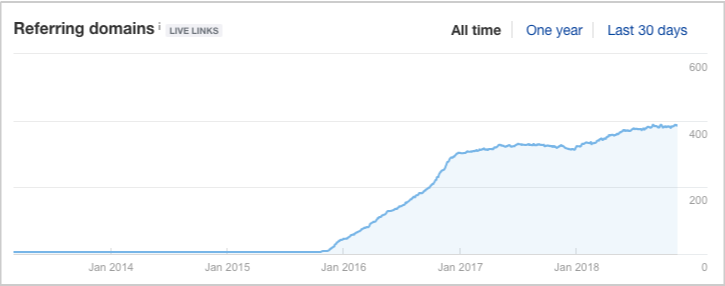
Meanwhile, link growth is the increase (or decrease) as well as projection of links built over time. Using the recent example, if you have built, 6, 10, and 15 over the course of three months, you may expect multiple numbers over the next time period (another three months).
It is worth considering factors that can affect your linkbait's link growth and link speed. Let me give you some of them:
- Prospects reached out to in previous months may have just been converted in the current (or hopefully the next time period).
- Sudden exposure on a top authoritative publication or news site may give a burst of incoming links for one month but doesn't sustain its link numbers in the next months.
- Putting more link builders into your team for the promotion of a content piece may increase the speed of links built over time.
There are more elements that may come into play. By checking your content's link growth and link speed, you'll be able to track your progress.
MEASURE BY INDUSTRY LINK VALUE
Ross Hudgens recently published an interesting article on link value by industry, which gives rise to this important section of the guide.
If you are pursuing links, you are also looking at money value derived from the link building campaign.
One way to measure link value by price is to look at the traffic value of the page. Apparently, it includes on-page factors and other ranking signals that formulate that number, but you may consider traffic value over a number of links to get the industry price value per link.

If you're an agency, it's one way to get more buy-in for your client's campaign or additional budget to allocate to link building, as they are now able to see how valuable your linkbait is in terms of its ROI to the overall brand.
B. RELATIONSHIPS
Other than links, there's one by-product a linkbait can provide to your brand, that is, additional relationships.
t
As you go to the massive promotion of your linkbait and as it earns links, you would be surprised at how many connections you can build on the process.
Not only first-hand relationships (connections from the first burst of promotion) but also second-tier and even third-tier relationships. These are relationships created through the first form of relationships.
When someone is a brand follower or enthusiast, it's not impossible to refer your content to friends of friends (inner circles) and business networks they would find your content to be useful for.
As your linkbait continues to earn its authority, you'll then start to receive emails for inputs or advice from relevant industry publishers and even emails from potential linkers who have actually linked to your content (and sharing it to you for a favored promotion).
How to promote linkbait?
The massive success of linkbait won't start until there's an early burst of exposure. Rarely you'll see a linkbait that has gained hundreds of links without any form of promotion.
Apparently, there are a lot of ways to start promoting your linkbait, after you've assessed its quality and have full confidence in your content.
1. Your own circles
Let's start with people who know about your brand.
It's more reasonable to start reaching out to people and brands who are already interacting with your content. Start with your followers on social networks, email subscribers, and your personal connections. Here's a good example from David Farkas of UpperRanks.
2. Linkers of your competitors' similar content
The next best set of people to receive early promotion of your linkbait content are those who care and consume the subject matter of your piece.
Begin by looking at existing linkers and sharers of content assets similar to yours.
If you're unsure of your competitors' content, you can use Ahrefs' Content Explorer to find them quickly.
3. Resource link building
Find list pages of topical resources where your linkbait can be the best fit. You may use a variety of search terms (like inurl:links.html "TOPIC" or site:.edu ~resources "TOPIC") to look for links pages.
Tip: Check out this cheatsheet guide for more link-based prospecting search queries.
Go over each resource page and check if they have broken pages, that you can take advantage of when reaching out to them. You can ask them to replace these broken resources with a link to a relevant linkbait of yours.
Useful Resources:The No Non-Sense Guide to Broken Link Building
4. Participate in community discussions
Joining in fora and online community discussions is still a valuable activity in the linkbait promotion process. People are looking for answers and useful references that they can take away and use for their business and personal life.
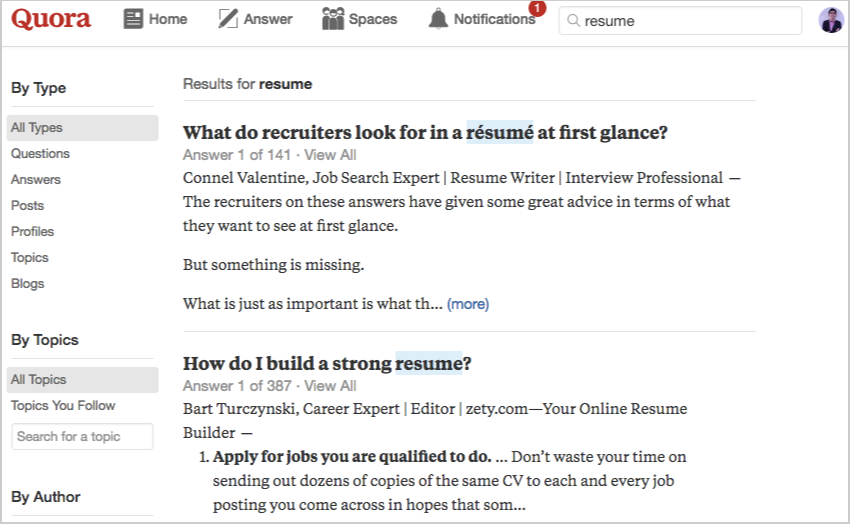
When you engage truthfully with the intent of sharing your linkbait is a good reference and other useful resources, you become a more valuable participant in the discussion. The rewards of views and referral traffic will become a by-product of an authentic engagement to help.
Linkbait Best Practices
1. Content value assessment for the right prospects
Consider spending time to evaluate the value of your content. The receptivity of your people who've encountered your content in the first place may show its value in the online market.
In this way, you will determine if your content is targeting the right audience or not. Even so, you can look for any possible solutions to revamp your content with little changes to the format, style, and information of your page.
2. Sustain through consistent outreach strategy (if evergreen)
If your content is evergreen (it passes the test of time), you can go back to your linkbait and update it accordingly. This will not just maintain and improve your content's search rankings, but be able to promote it again.
Execute another outreach campaign after a year, and soak for any new link opportunities.
One way to start is to collect a new list of possible linkers from a Google search. One pro tip that I highly recommended is to check your competitors' content new links. Over a period of time, they managed to get some links from new different websites.
You can leverage their success to your own advantage, and make it worthwhile to you to discover new backlink targets.
3. Powerhouse your linkbait content asset
With proper strategy and execution, you can publish a series of linkbait pieces that can perform well in the market. Of course, some pages won't get the desired traction, but over time, through testing and innovation, you may get some rewards from multiple successful linkbait campaigns.
Start creating a hub of successful linkbait content pieces. Getting them all into one corner have several benefits you may never think of:
- Getting multiple links from a topical resource page (as one linker whom you haven't reached out to yet may find two of the pages valuable to link to from his list page).
- Your content hub can target ahead industry term and has chances of gaining the top spot in search results because of its existing solid links which can pass authority to the content hub itself.
THE PROCESS NEVER STOPS
There may be instant food, but no instant success. The same is true with producing linkbait. You may gain traction at once, but if it's not sustained for a long time by producing solid linkbait content consistently, results will never last.
Smart Link Prospecting: Finding The Most Responsive Link Targets
Have you ever prospected thousands of websites only to find out that most of them are the most irresponsive targets for your outreach emails?
It happens all the time — only if you don't do smart link prospecting.
In today's blog post, you'll discover how to find relevant prospects that are likely to respond to your pitch — bringing much value to your business.
You'll also learn ways on how to re-engage them for future link opportunities, even after you've landed links on their websites.
Before we dive into the methodology of effective link prospecting, let's first understand what smart link prospecting is.
What is smart link prospecting?
Smart link prospecting is an intelligent way of doing your link prospecting initiatives so you would avoid the headaches and pains of not getting the results you're looking for.
It involves understanding these three core elements: objective, audience targeting, and metrics.
Objective
Like any plan or campaign, you have to start with your objectives. What are you trying to achieve with prospecting?
Are you looking for people to engage and promote your newly launched content asset? Are you aiming to build relationships with key influencers and content creators who've linked to your competitors so you can get them to promote your future assets through links?
What is it that you want in link prospecting?
It's easy to dive in without these objectives. But this would only make things worse if you can't have specific objectives in mind when doing link search.
Audience Targeting
Seeking the wrong people is the worst link prospecting in the world.
By targeting the wrong people, you ended up way wasting your resources — time, money, staff resources, etc.
What you want to do is to identify the right groups of people to target for links.
If you've been in sales, you know the types of prospects: cold, hot, and warm. This same principle is something we can use for link prospecting.
Basically, warm prospects are people who are familiar with your brand. They know about you either they've read your content piece in the past, downloaded one of your books, partnered with your brand for retailing, or other activities that show they have good knowledge about your site.
Hot prospects are your existing link prospects. They either be recurring linkers of your content (constantly sending you organic links) or one-time linkers in any of your content pieces in the past.
The smart way of doing link prospecting isn't only targeting the most relevant link prospects (that's pretty obvious), but starting off with people who've had an established familiarity with your brand (warm and hot link prospects).
Metrics
Setting standards for your link prospecting is obviously a smart way given that you're maximizing every opportunity to get these link building targets into linking to your content.
Link building is a value exchange.
If you find quality link prospects, you could give them the quality value they deserve depending on their needs. Vice-versa. They would also provide you with a link you need for your site.
You can check out this guide on how to use link metrics.
3 Smart Link Prospecting Approaches
The smart way of doing link prospecting isn't only targeting the most relevant link prospects (that's pretty obvious), but starting off with people who've had an established familiarity with your brand (warm and hot link prospects).
1. "Linkeratis" Movement
Linkeratis are web users who have the capacity to link to a certain website (the destination page) from a domain/page (the linking source) to where they have access to.
Smart link prospecting is understanding where these linkeratis are engaging.
You'll realize that they've been following your brand for a while and have proven to link to you in the first place.
The "linkeratis" movement is creating a list of all your existing linkers and taking them into another link building action.
How to find these linkeratis?
1. Top linking pages
The most obvious approach to finding these linkers is to use Ahrefs or other link analysis tools to find people who've linked to your top pages.
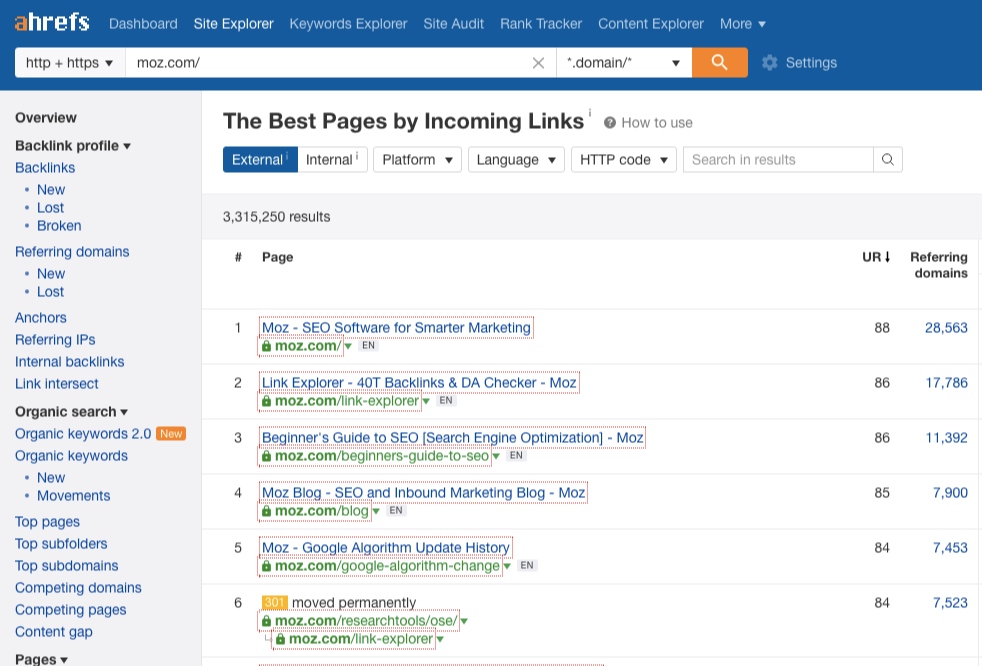
2. Interviews
People who've interviewed you for various reasons — either for a round-up post, a "quote" or insight for a story published in online or offline collaterals.
You could simply find them by typing in your "BRAND" "interview" or "NAME" "interview". If you're an enterprise, this might require more effects in digging which publishers have covered you previously.
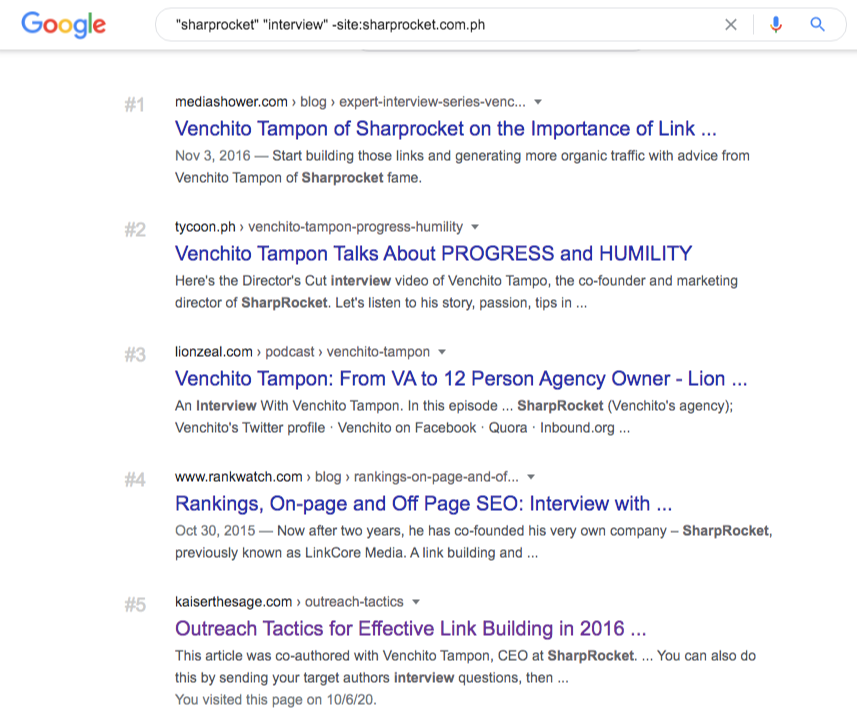
3. Content republishers
Have you published a visual asset, let's say an infographic, and someone used it on their blogs?
Simply, these are content republishers.
They are part of the linkeratis, as they've seen the perceived value in your content piece through externally linking to your page.
You can use Tineye and BrandMentions to find republishers of your content.
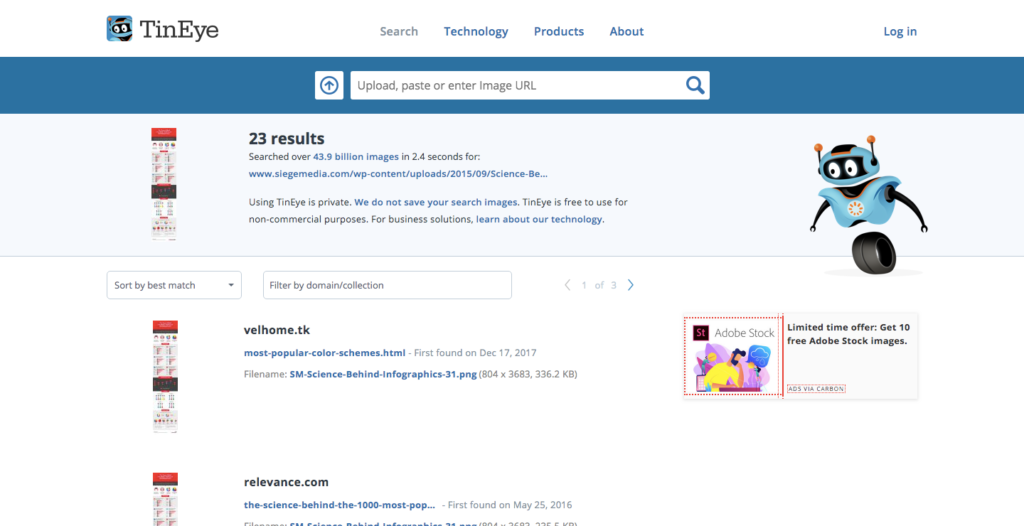
2. "Fan mode" Prospecting
Your fans care about you, particularly the ones who are raving for your next piece of content. They are either email subscribers or active social followers.
You won't know if they are good link prospects, not until they've shown interest to link to you.
First, you have to be able to find who they are.
There are many social media tools - those web products that would allow you to get a list of social sharers of your content.
This is important given that you have to be looking for people who've shared your content but haven't linked to you. With little nudges in your outreach, you could get them to take that link placement action.
In discovering these social media fans who became your content social shares, see if they have active blogs/sites or contributors or columnists on other industry publishers.
You want to make sure that they have the capacity to link to your content.
3. "Inside job" Prospecting
Being part of the parties is a good way to engage your target audience.
If you're not yet part of online communities in your industry, you're missing out on a lot of linking opportunities and branding exposure.
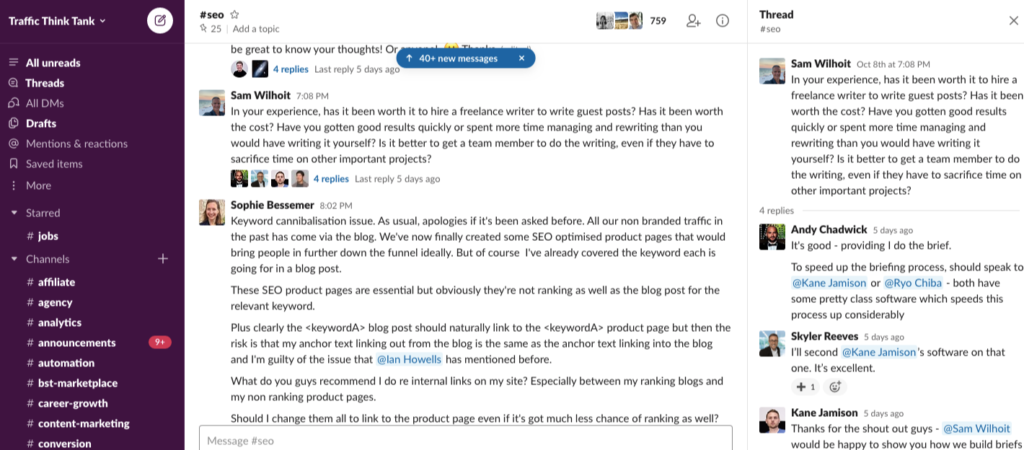
Find active communities, industry groups (i.e. Facebook groups), and slack channels you can involve yourself in.
This is what we call, "inside job" prospecting. You first engage in a community. You answer questions you think you could provide more value through your experience, expertise, or simply your own insights on the topic.
You don't appear to be pushy, or out of the party in the online community, but rather a person who cares to provide value to the audience.
What you want to do is to start following active community participants — target those either with highly engaged followers, part of the top community users, or co-hosts of online events (i.e. webinars).
Know what makes them tick and share their posts to get you on their radar.
Familiarity With Your Brand
As you grow your brand, people become more familiar with who you are and what you do.
The people who will likely show interest in linking to your site are the ones who already acknowledge you as a good value creator.
With the right objectives, proper audience targeting, and understanding of what metrics fit you — based on your industry and context, can help you prospect for link targets who are responsive to your outreach pitches.
Other Useful Resources:
- How Many Websites Your Link Prospector Should Be Looking For?
- Hitting Your Number of Acquired Links Per Month
- What Can We Automate in Link Building





